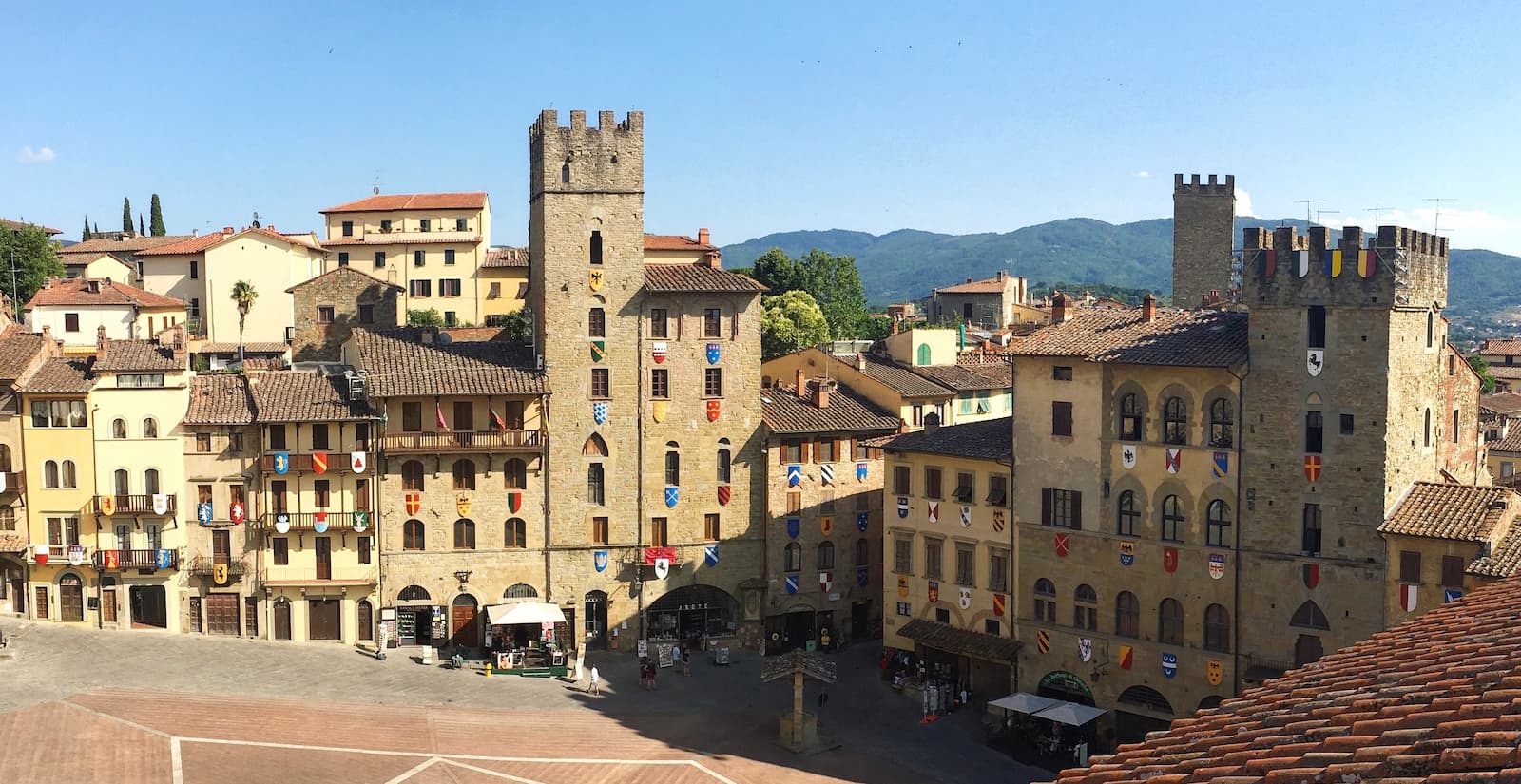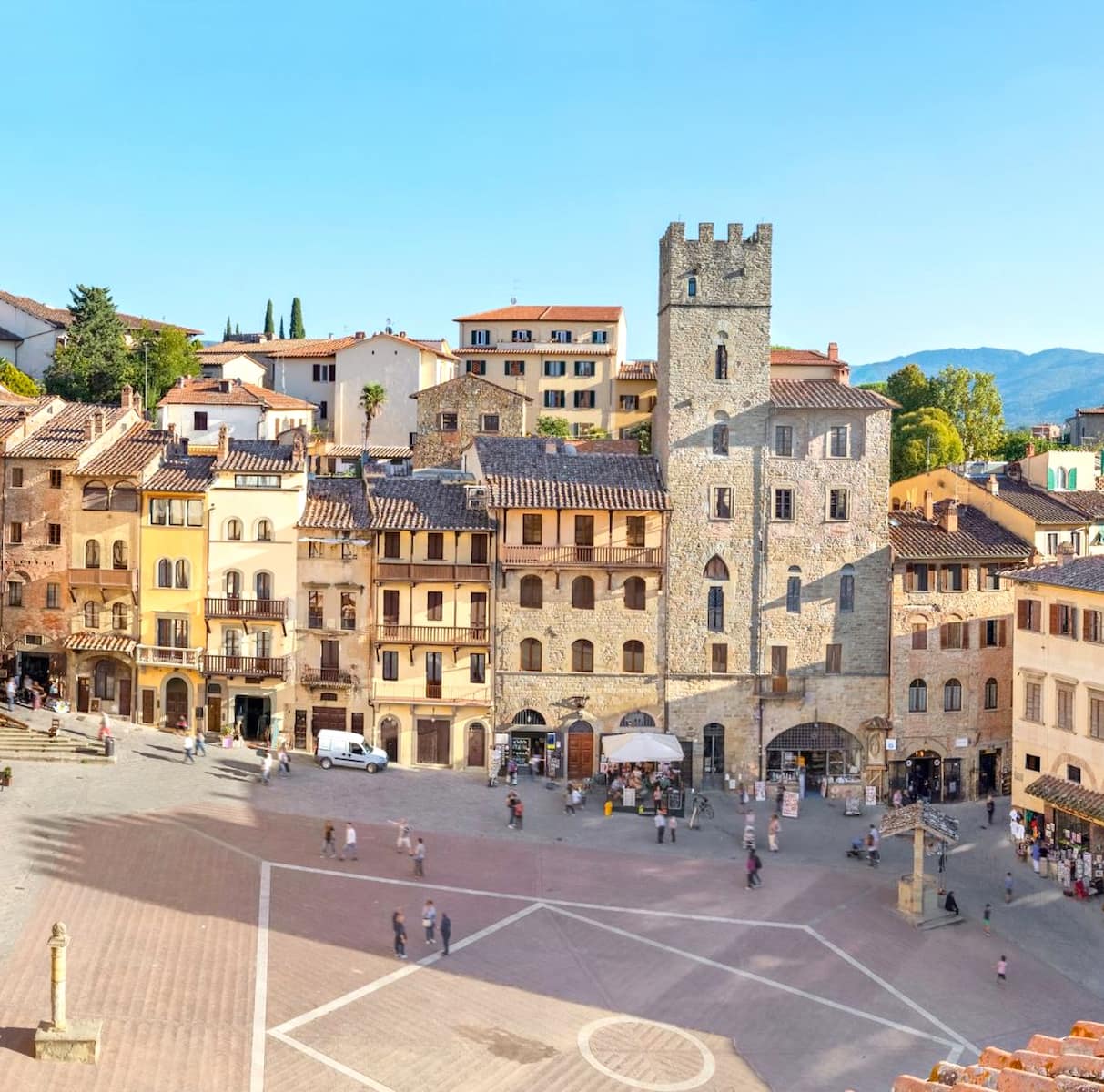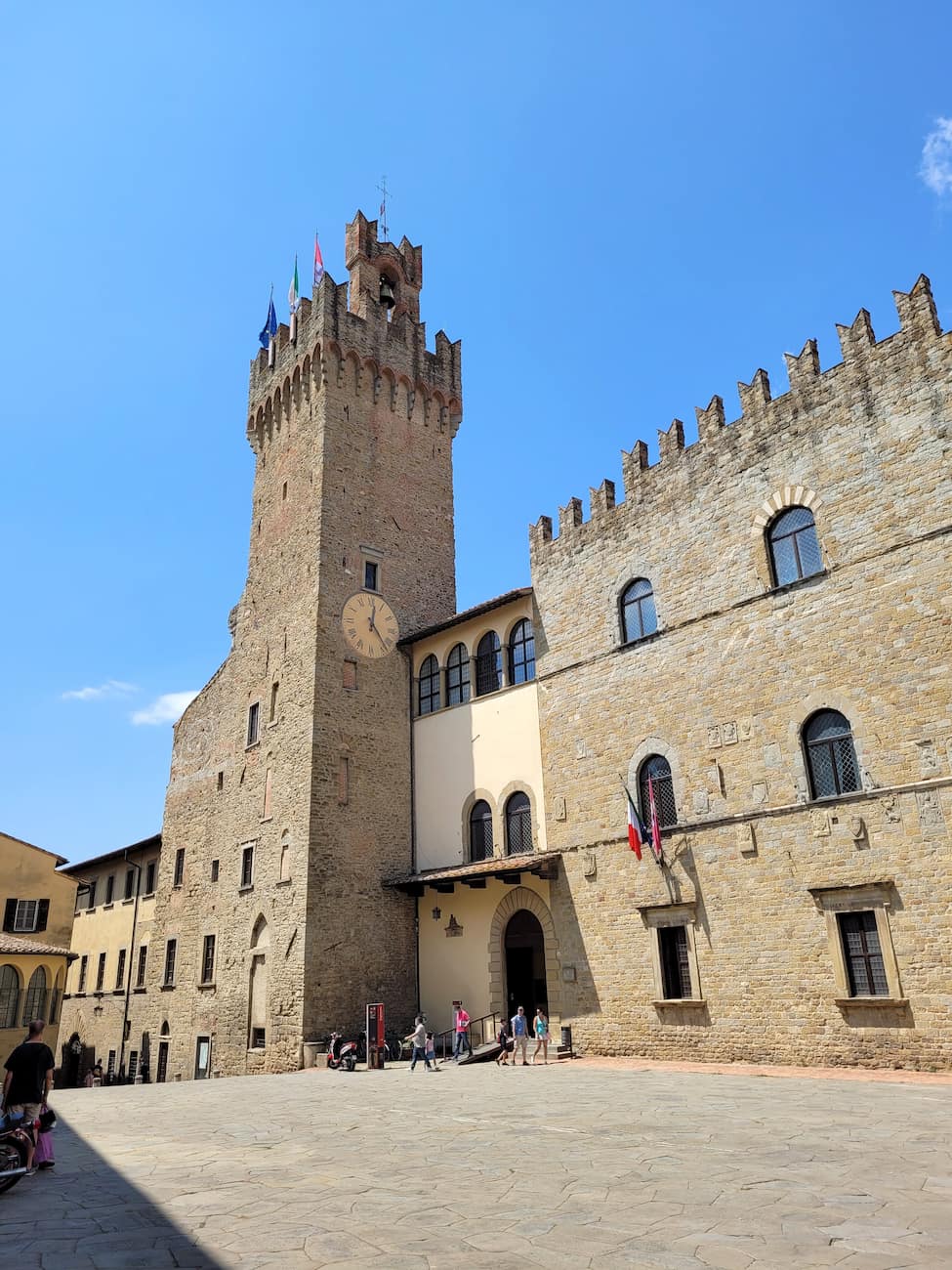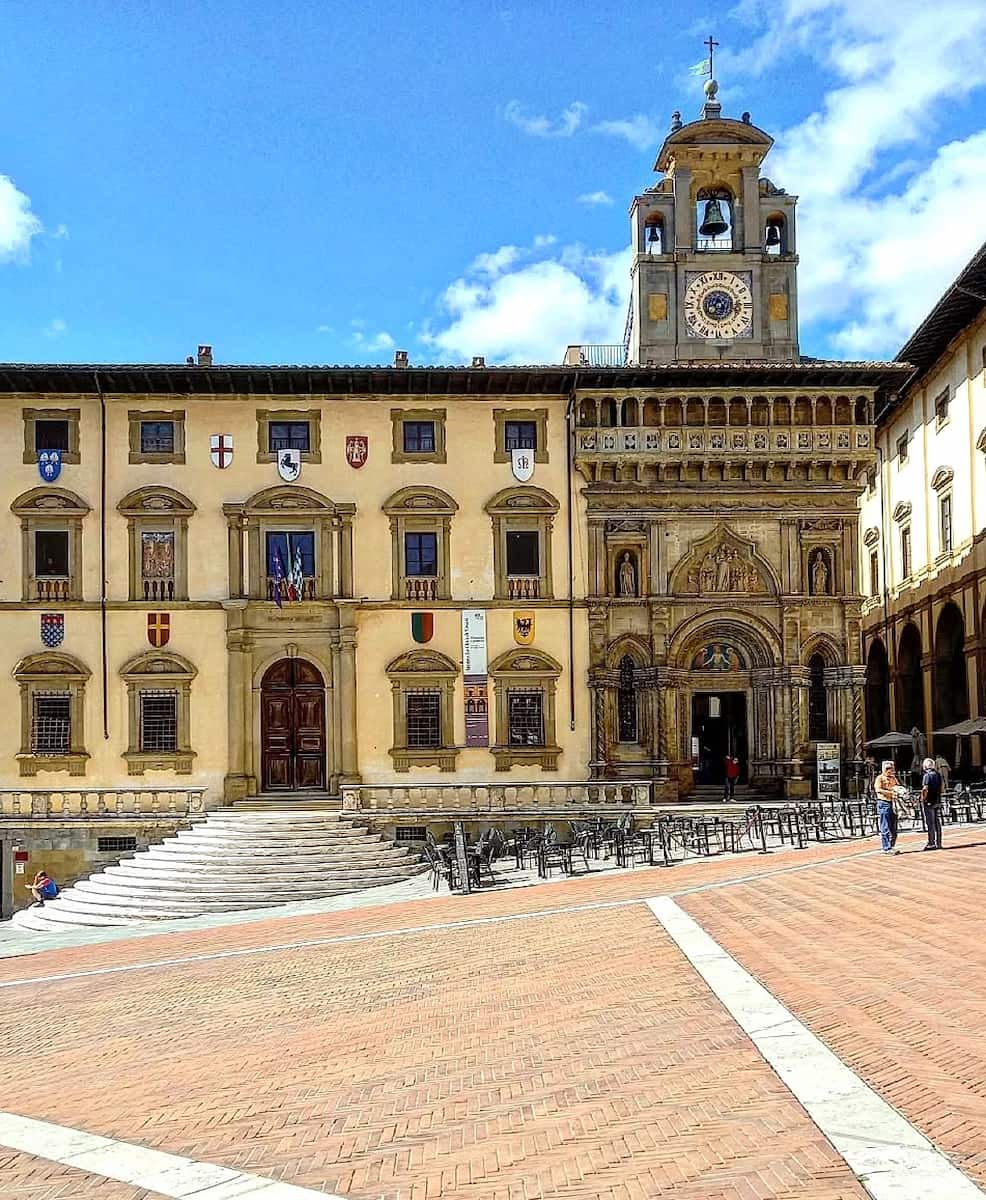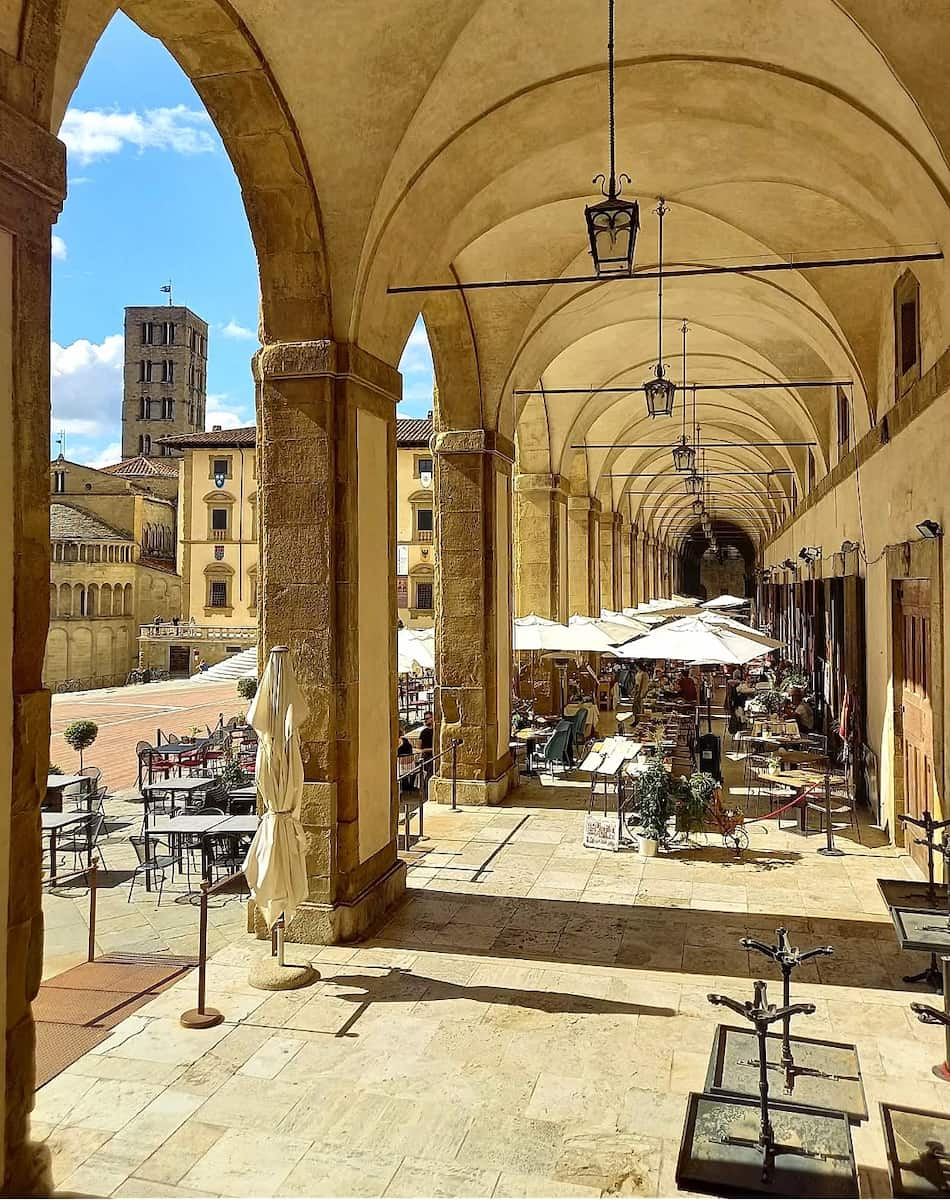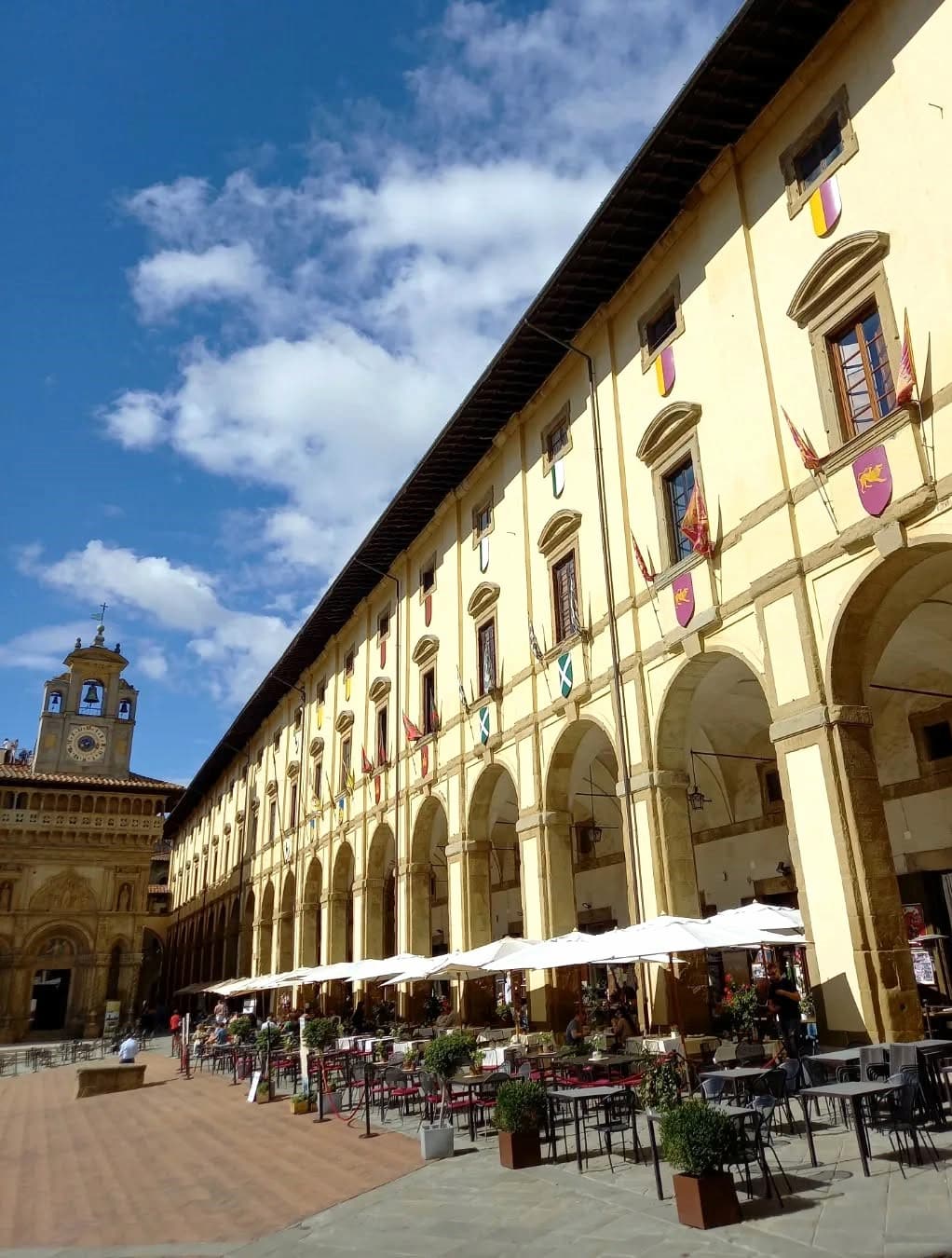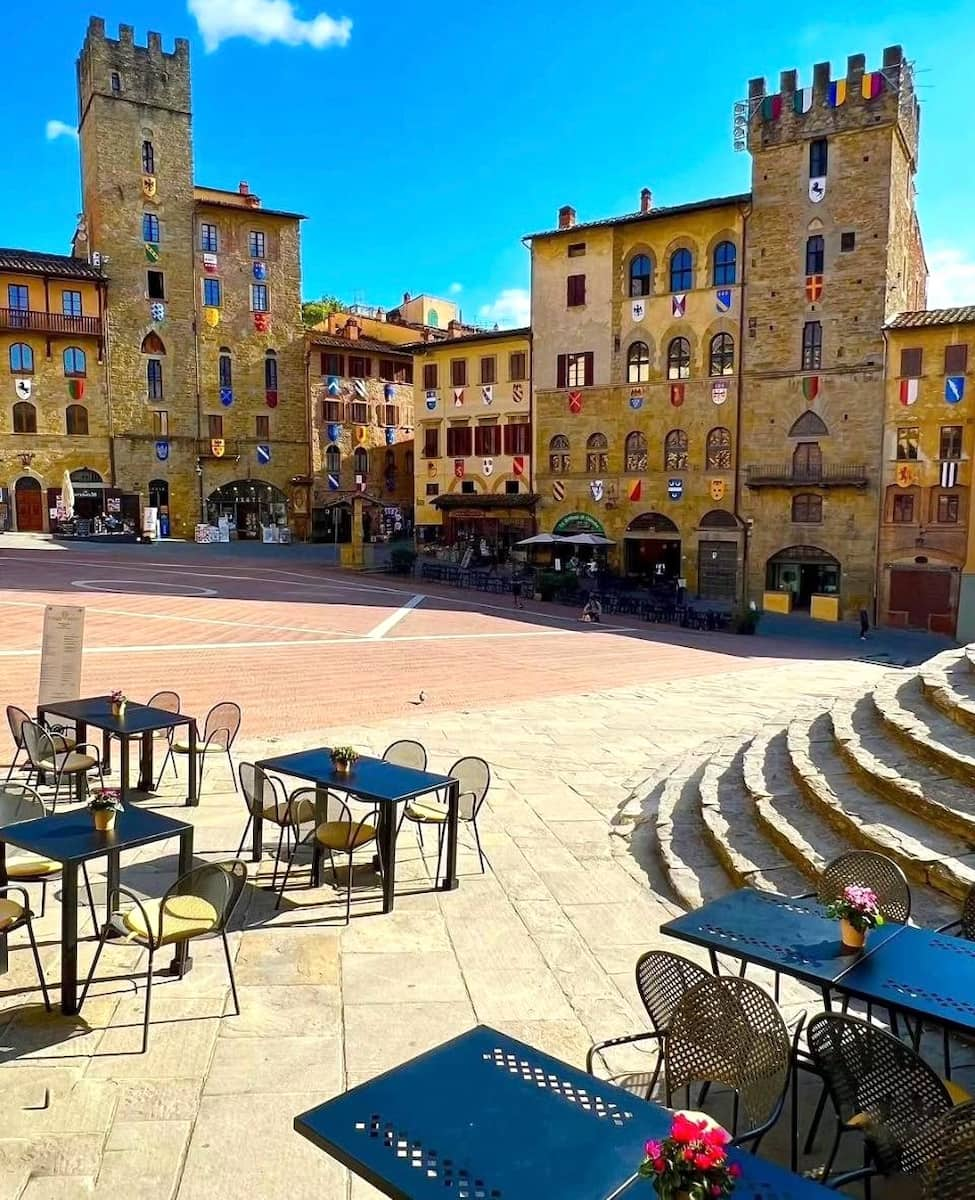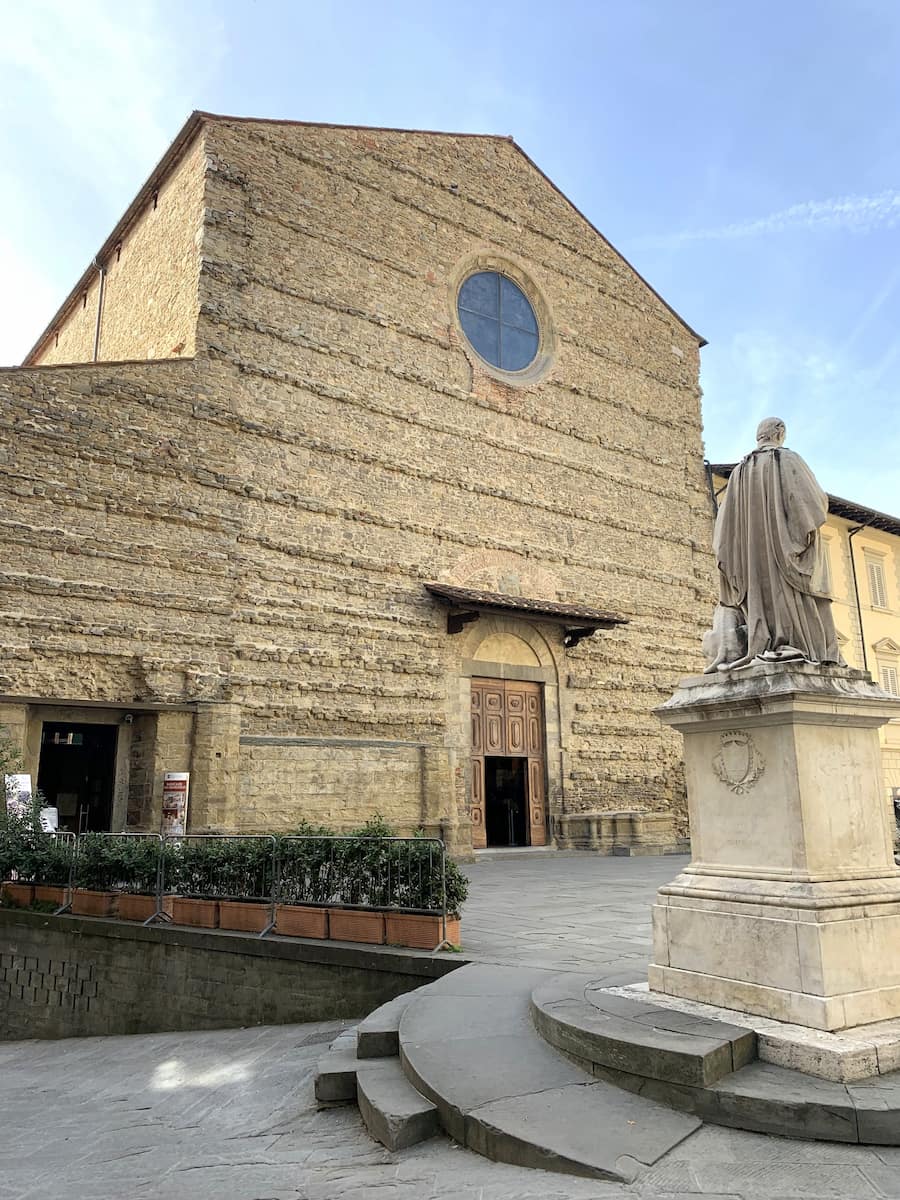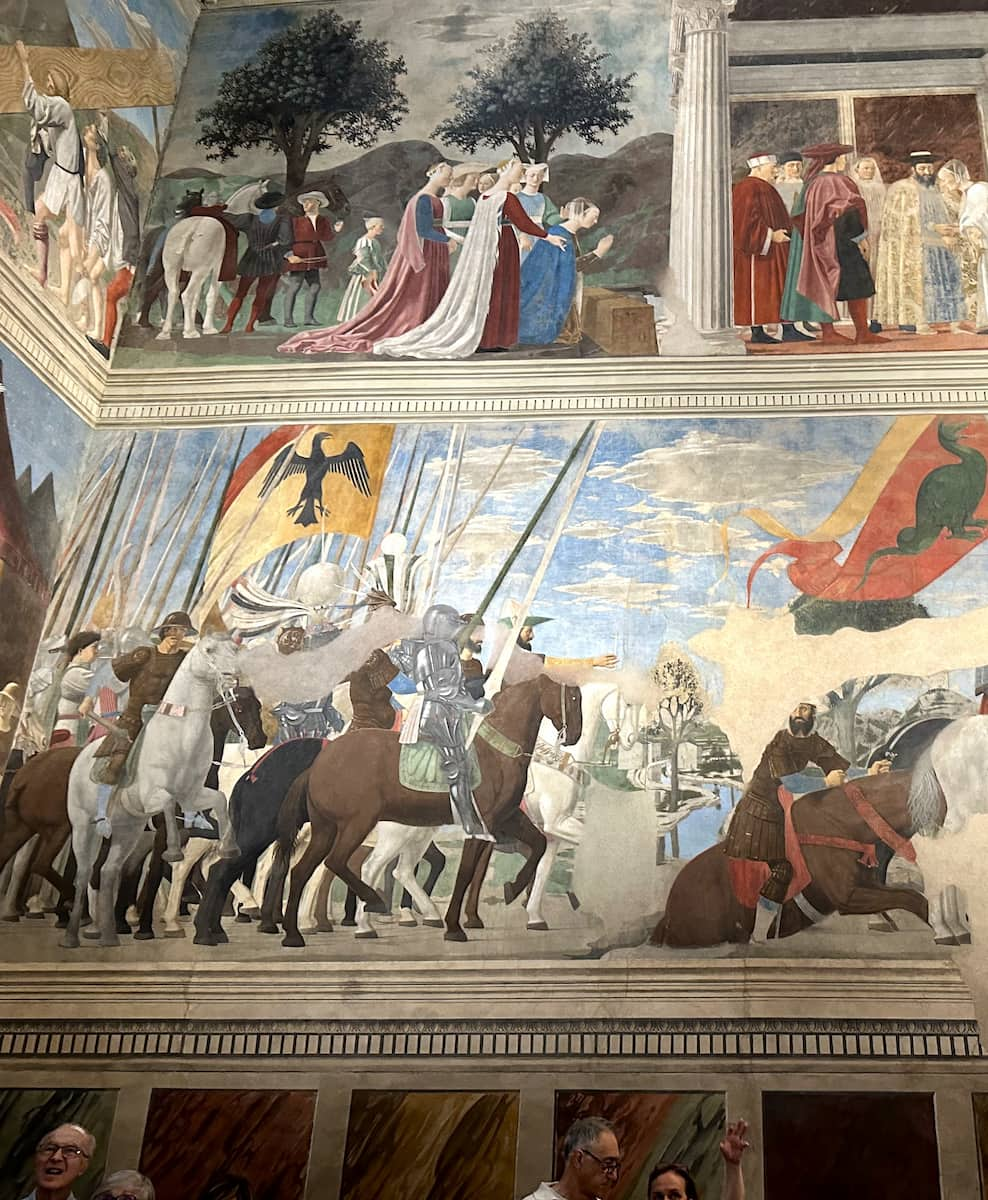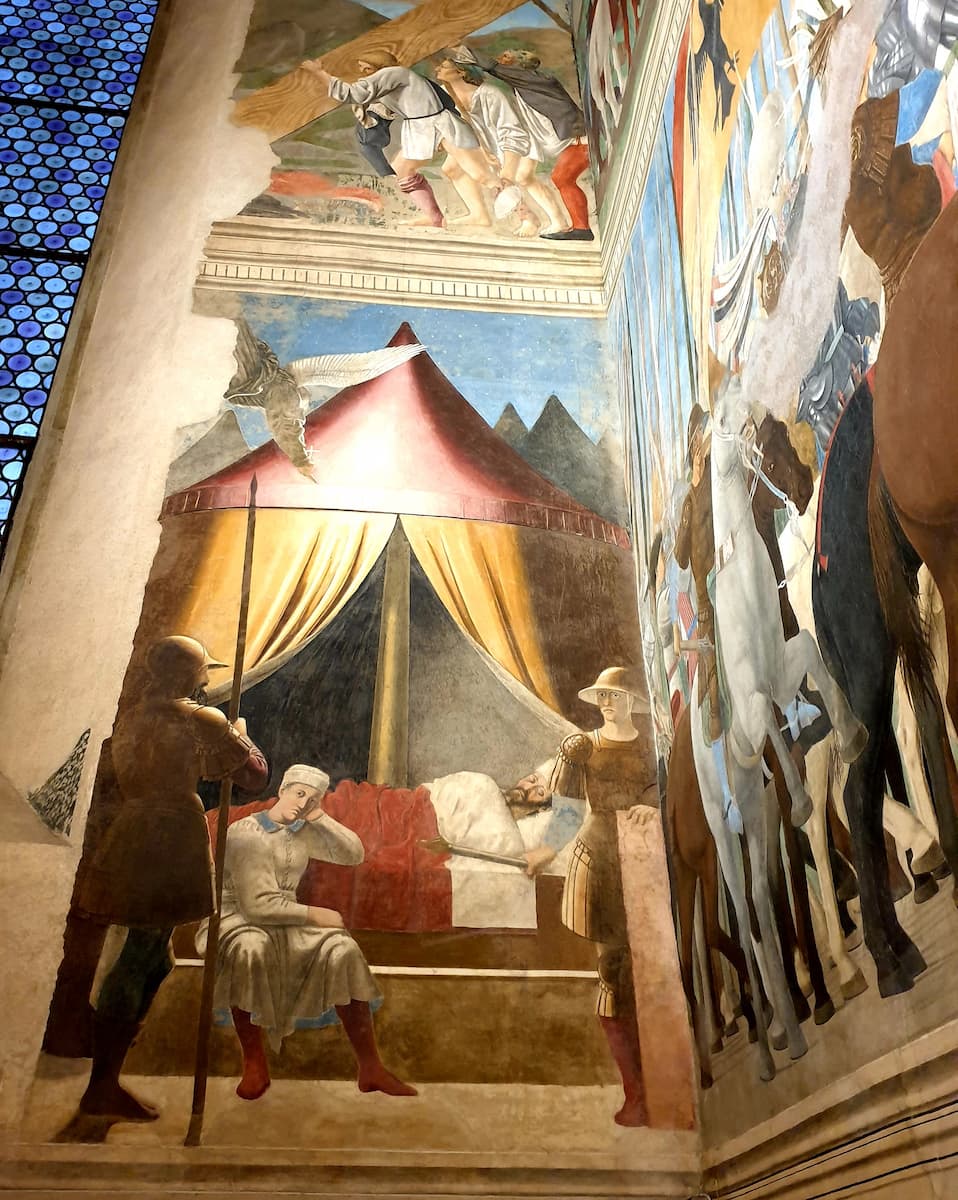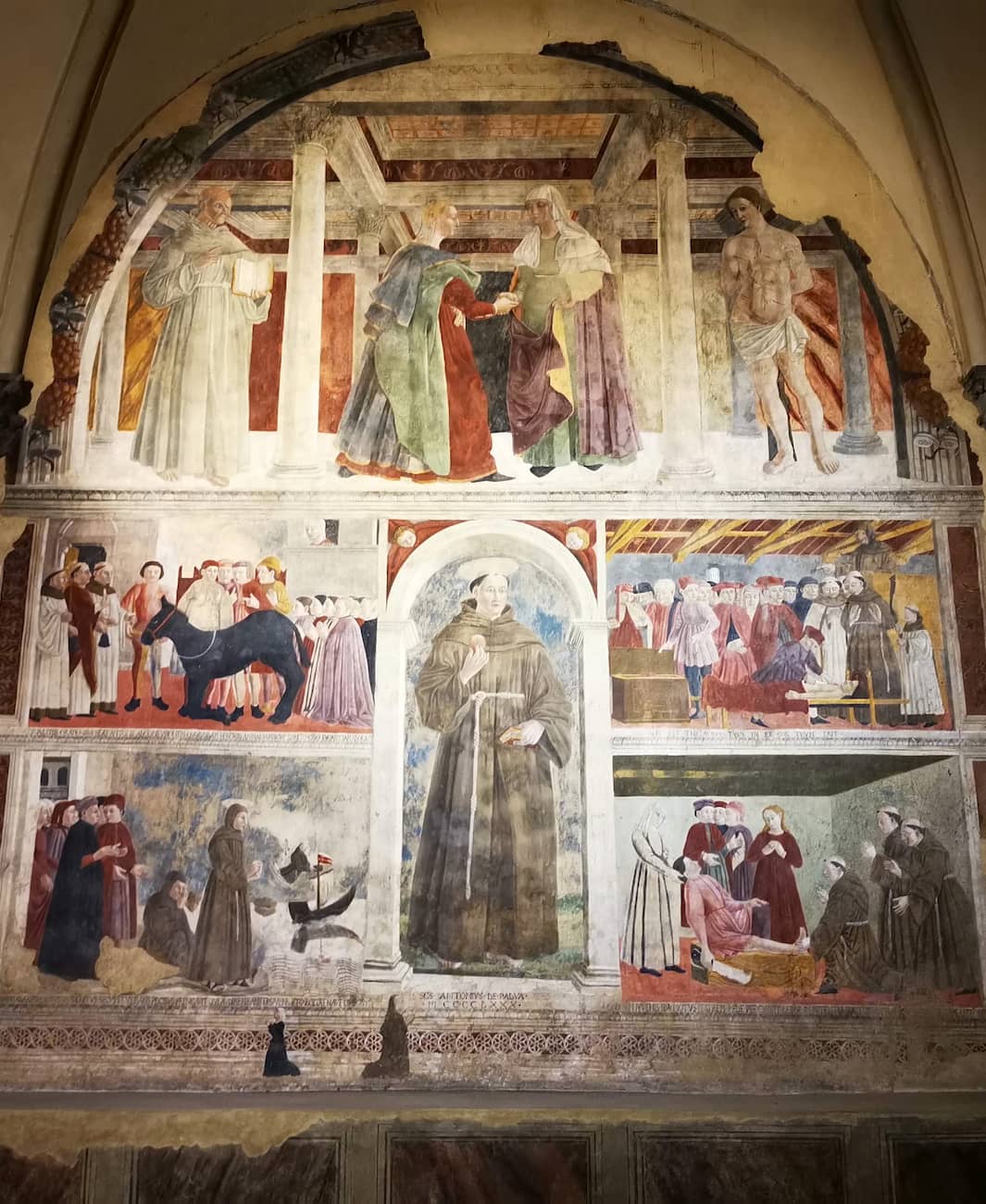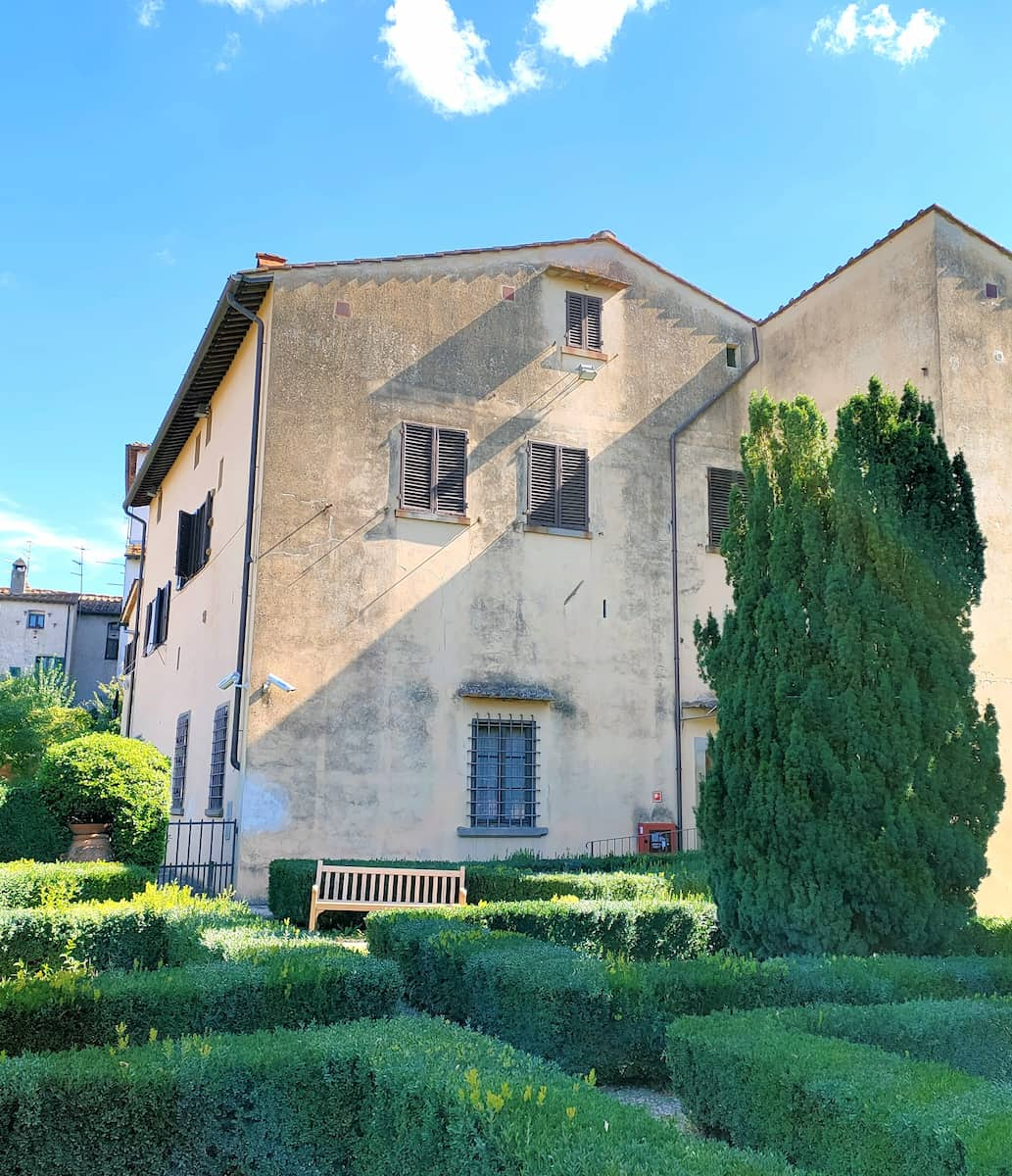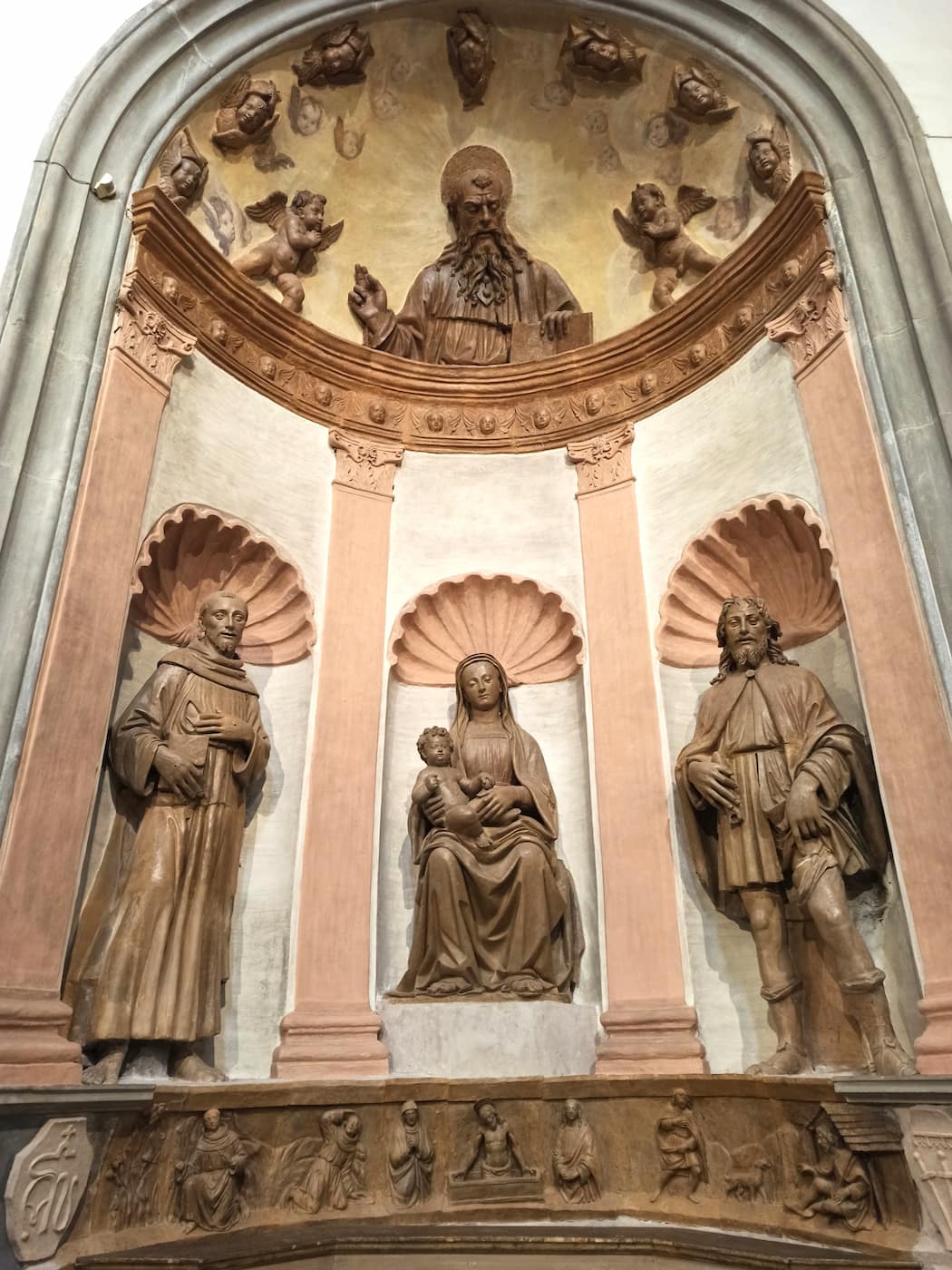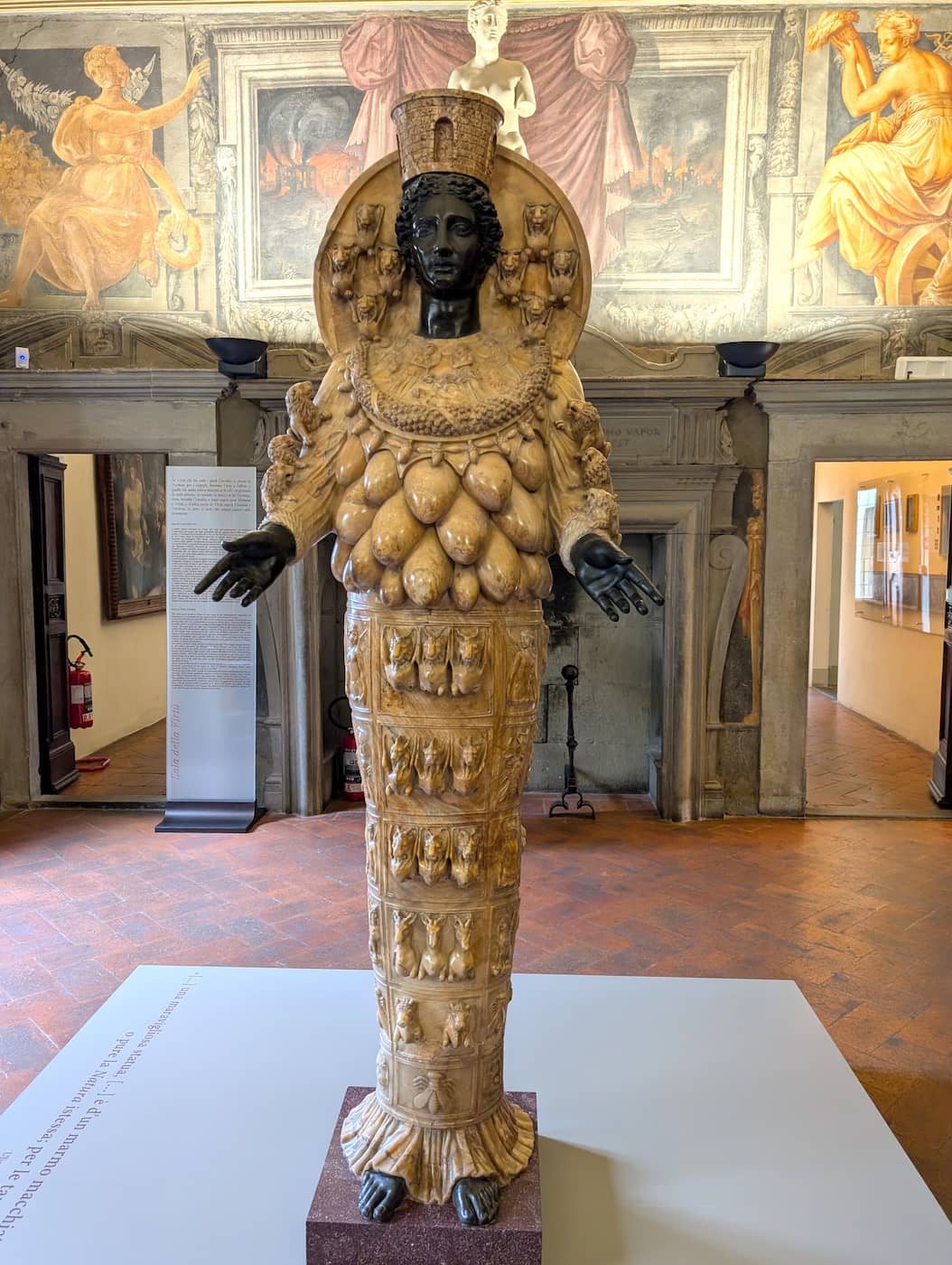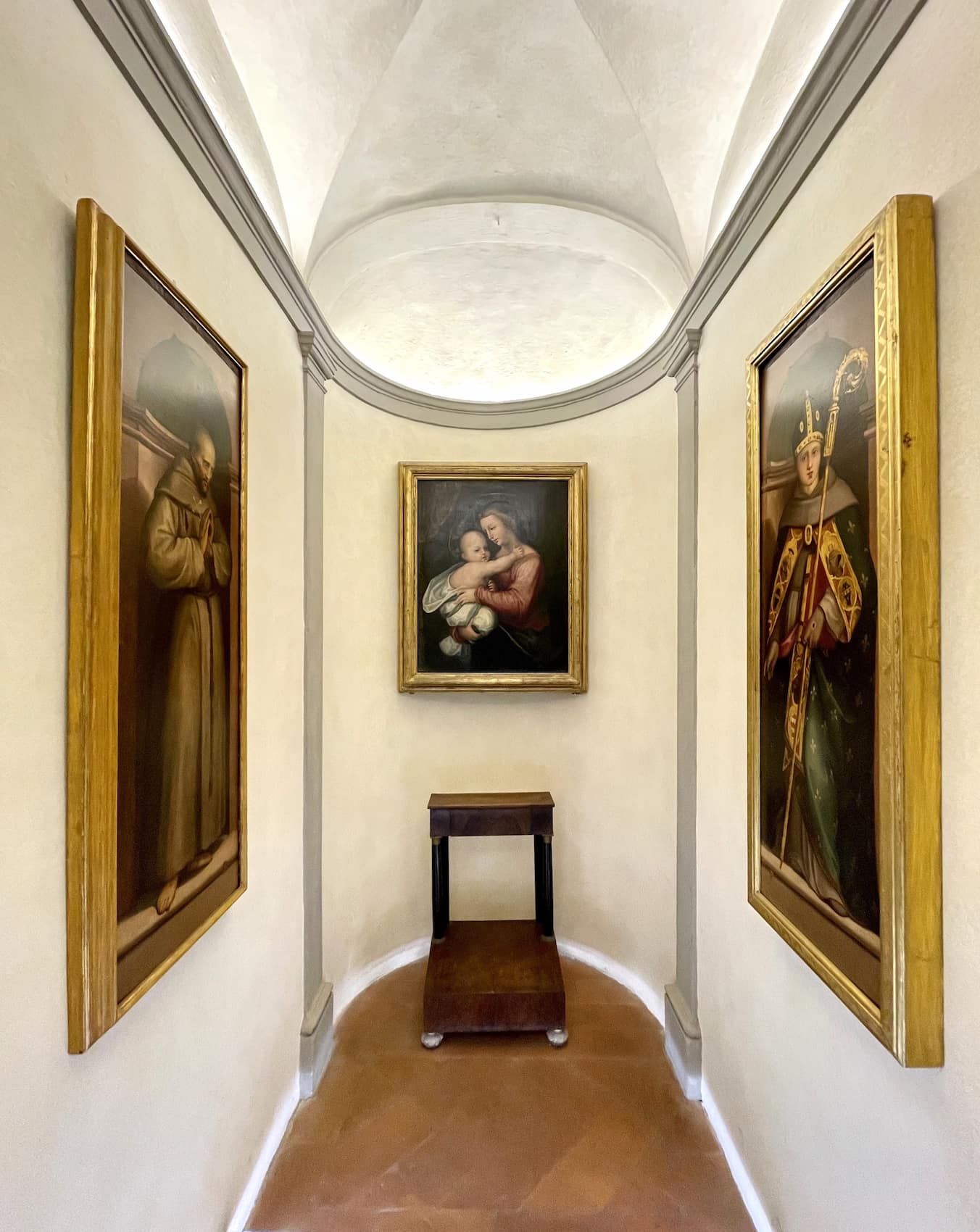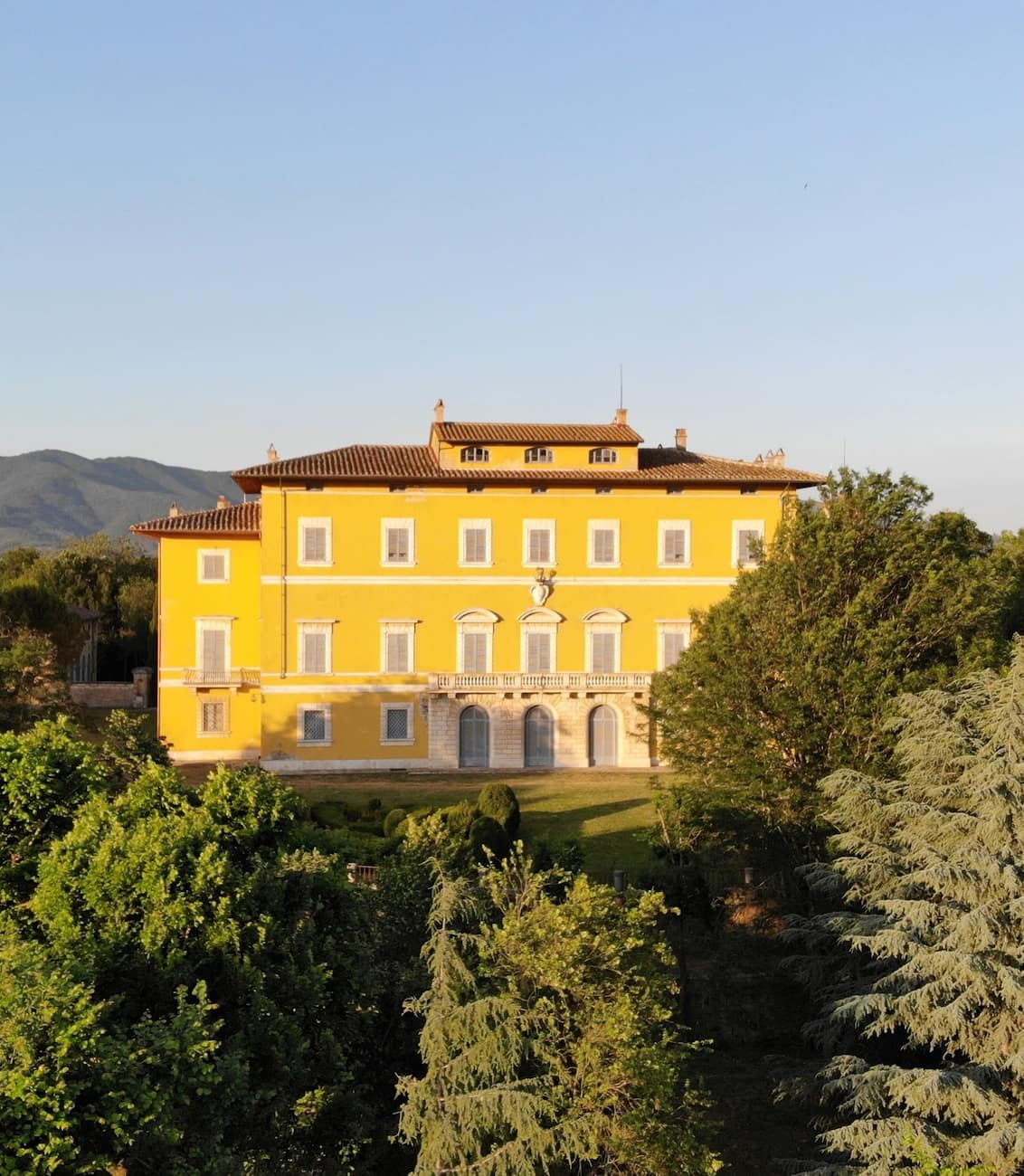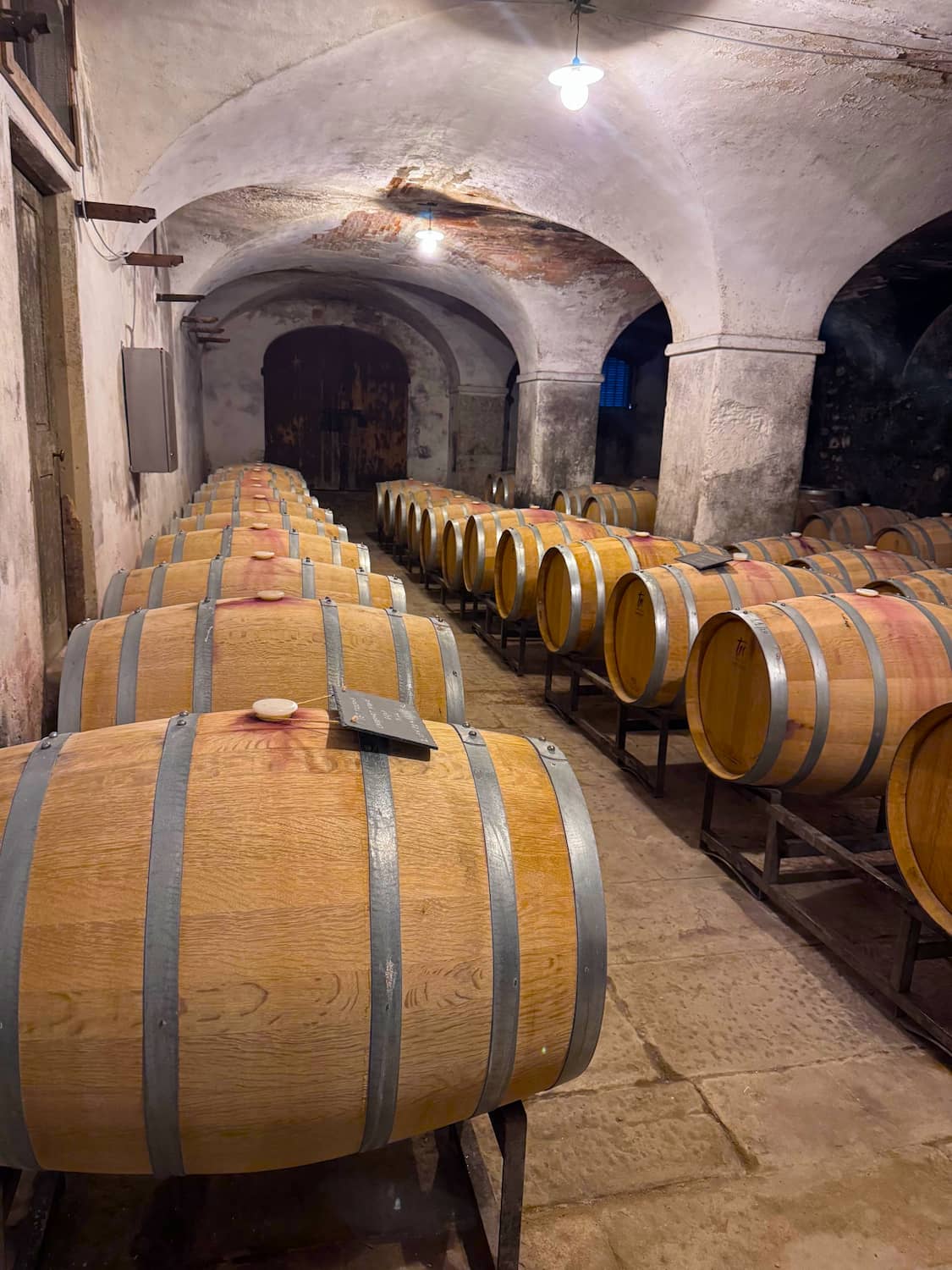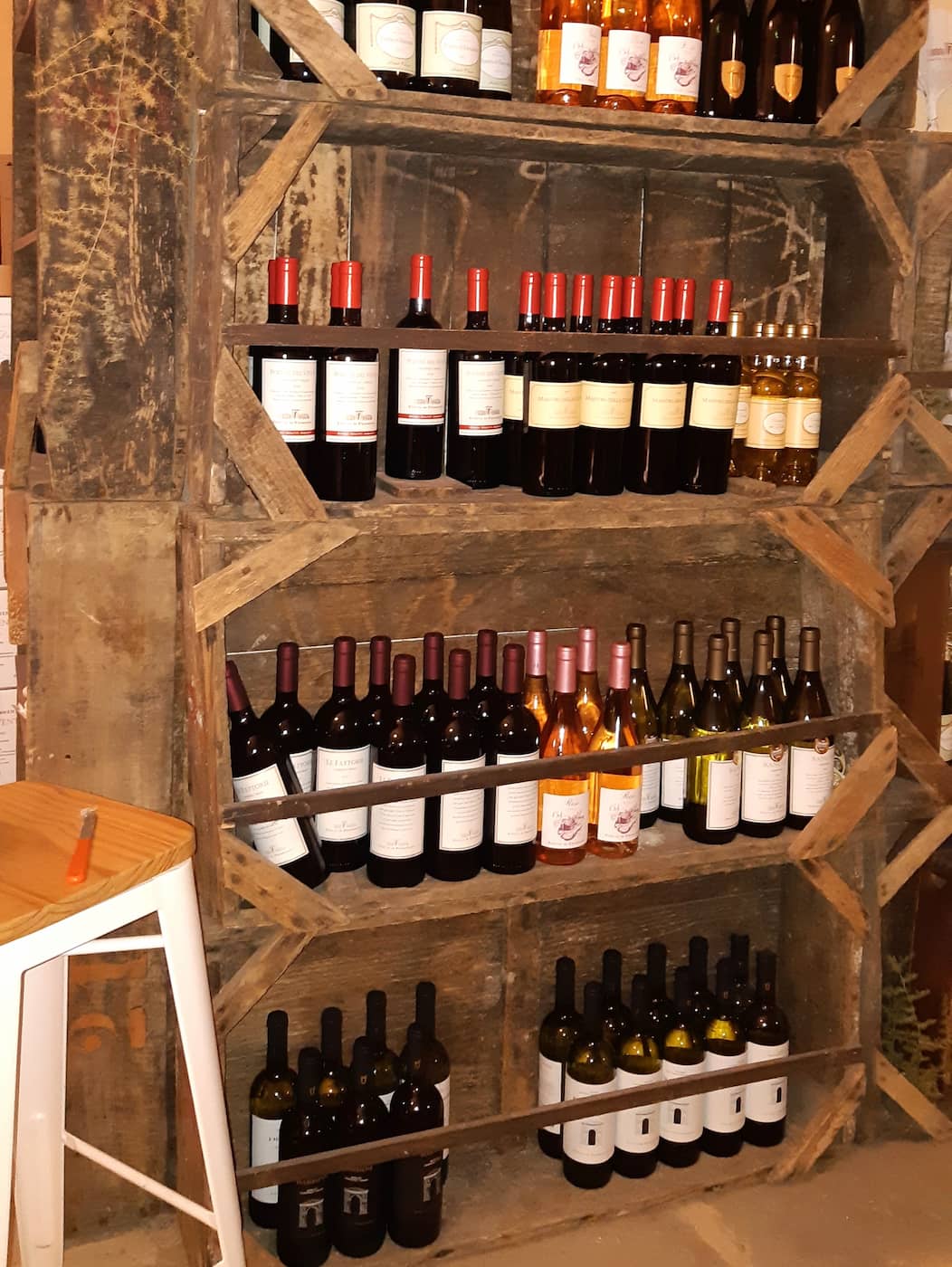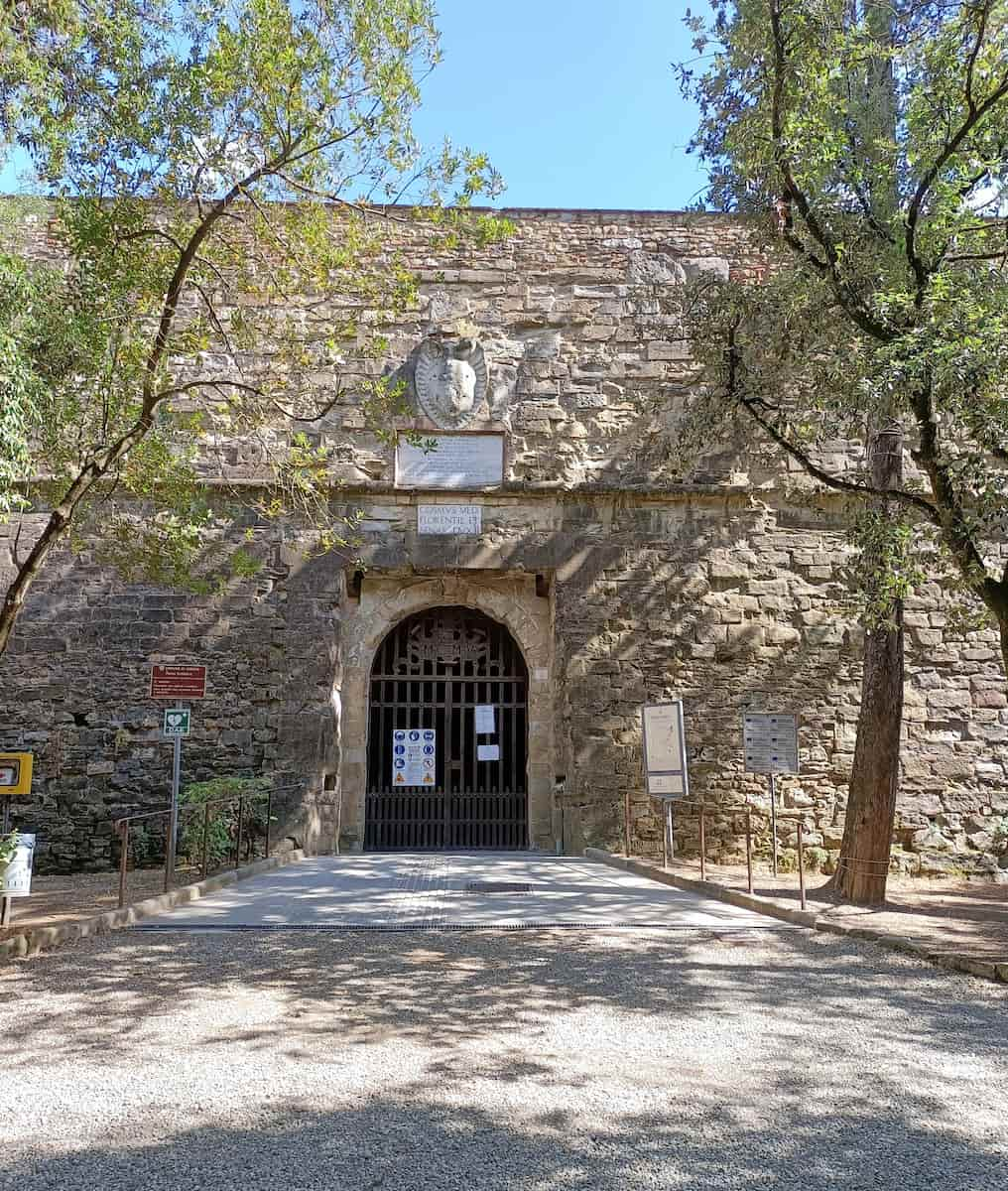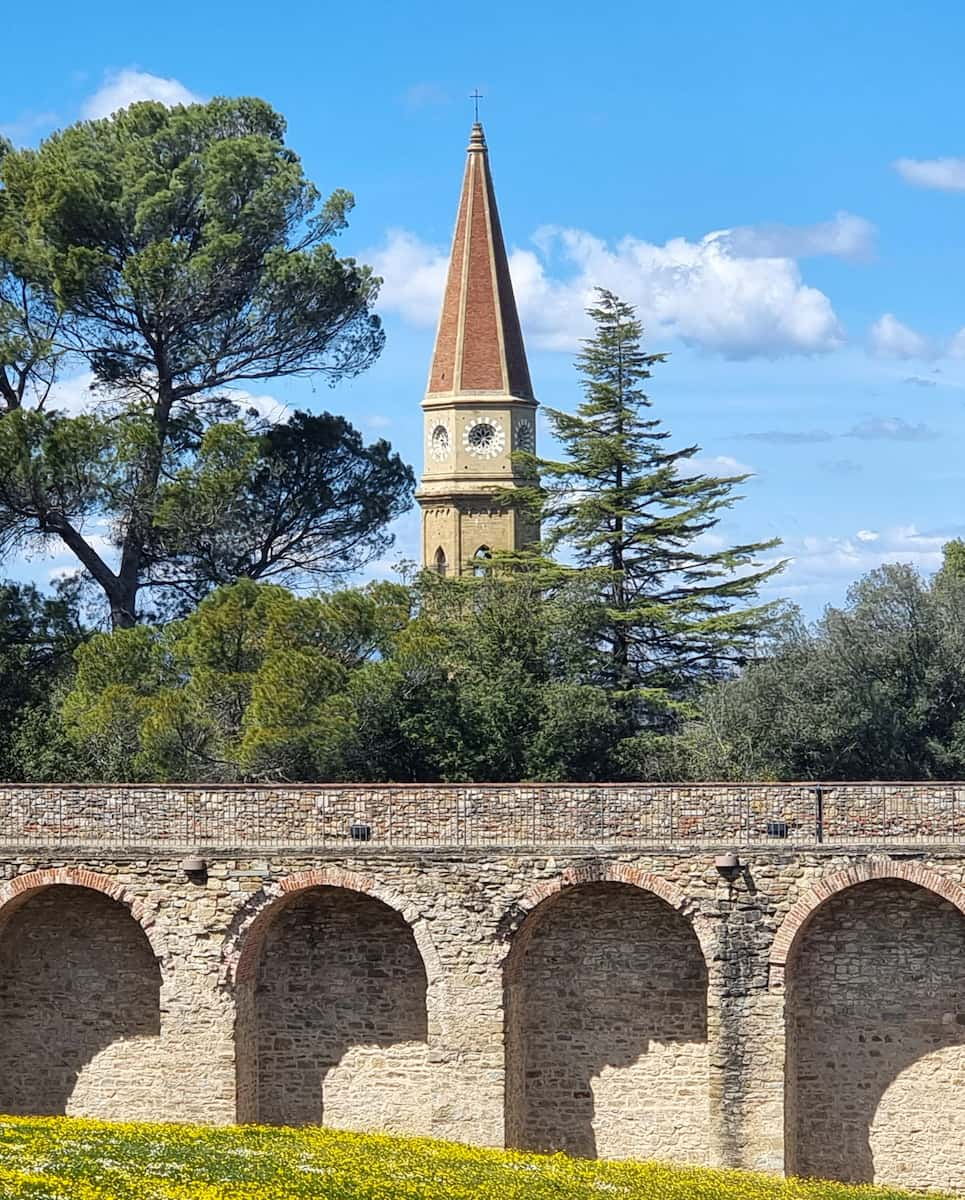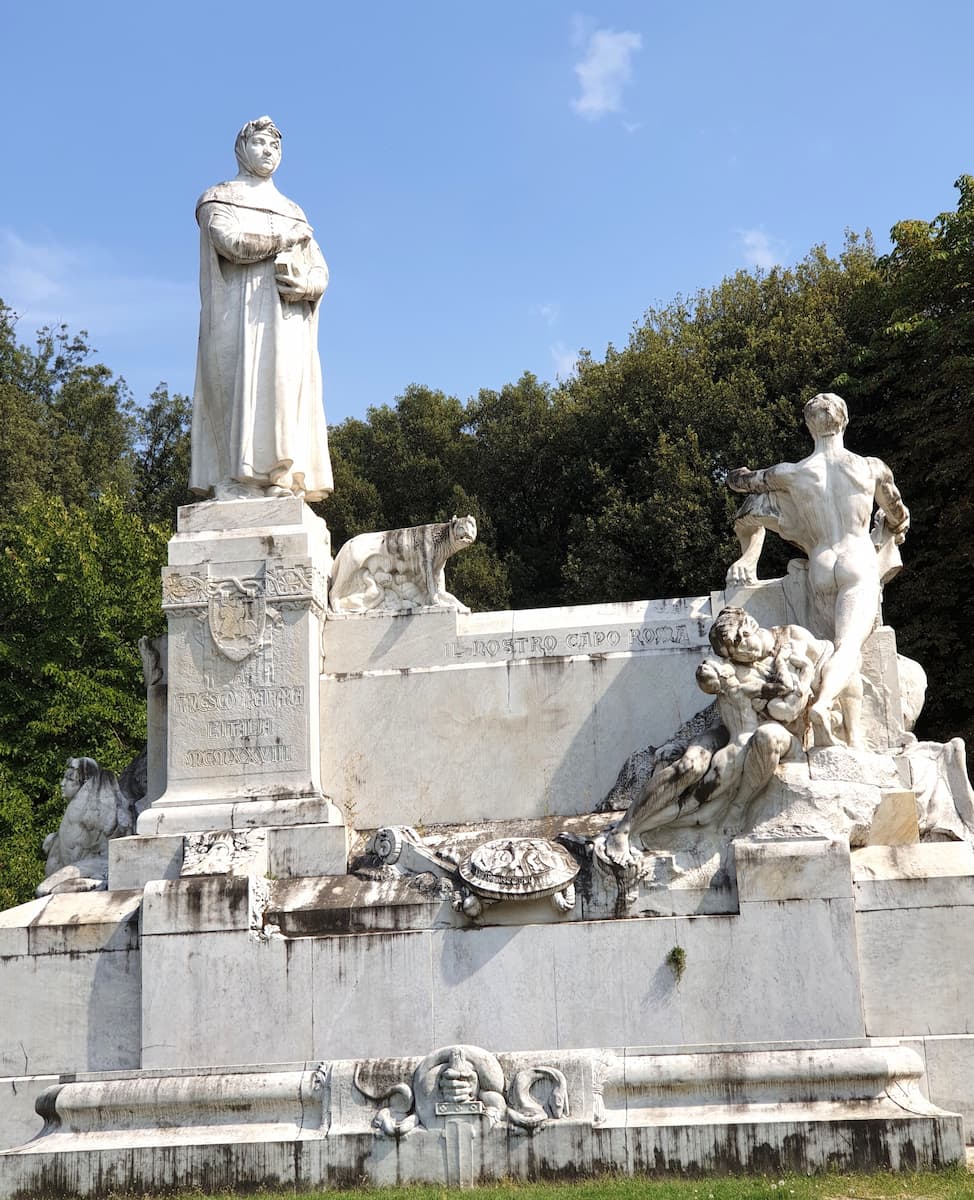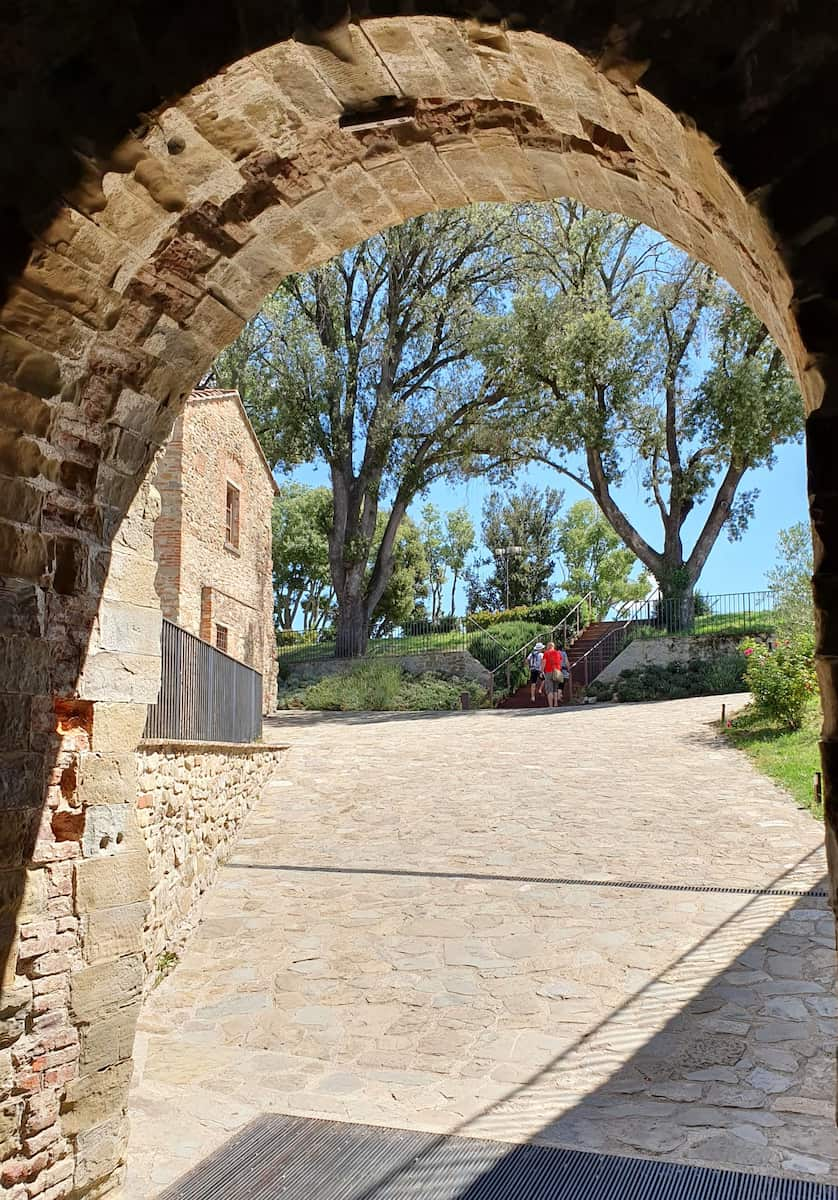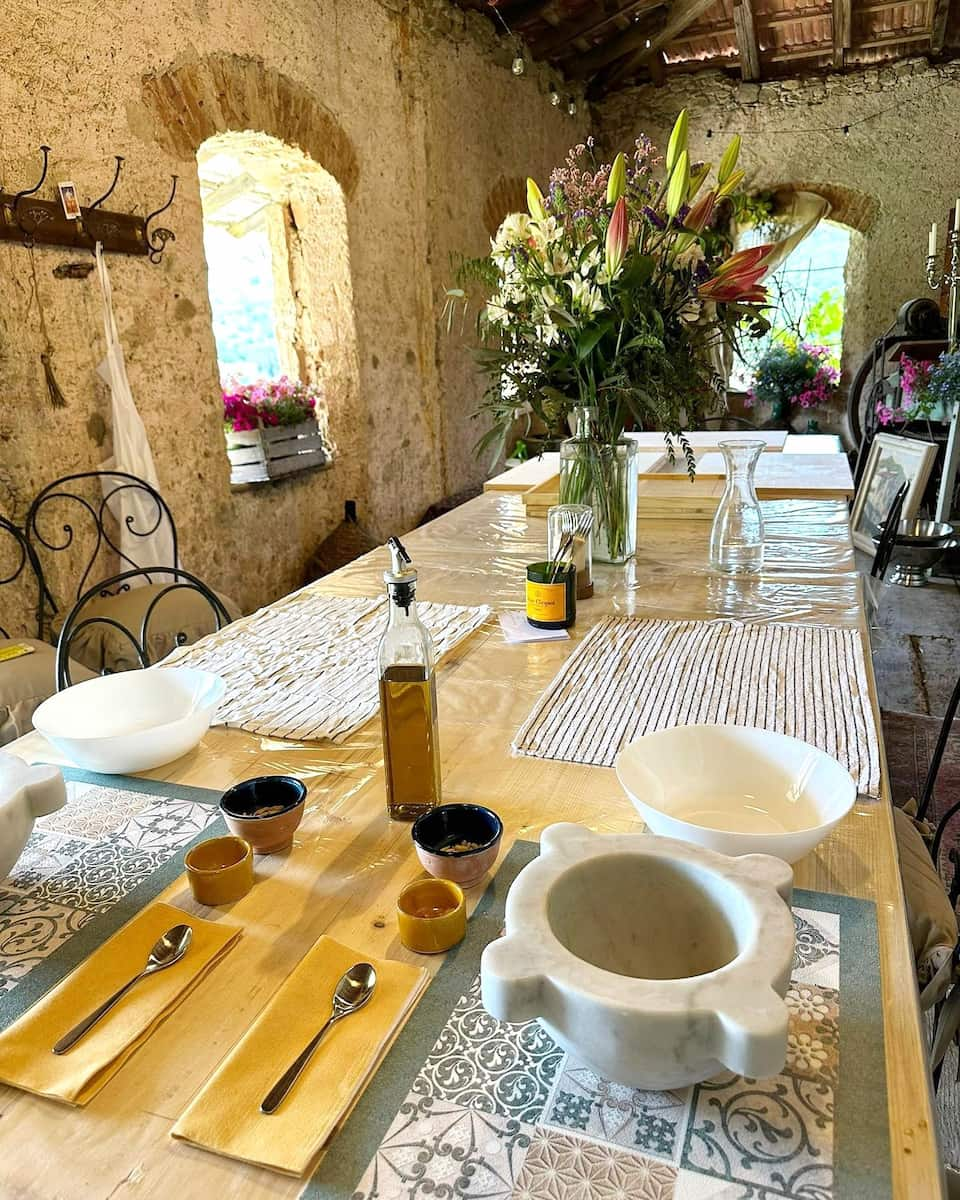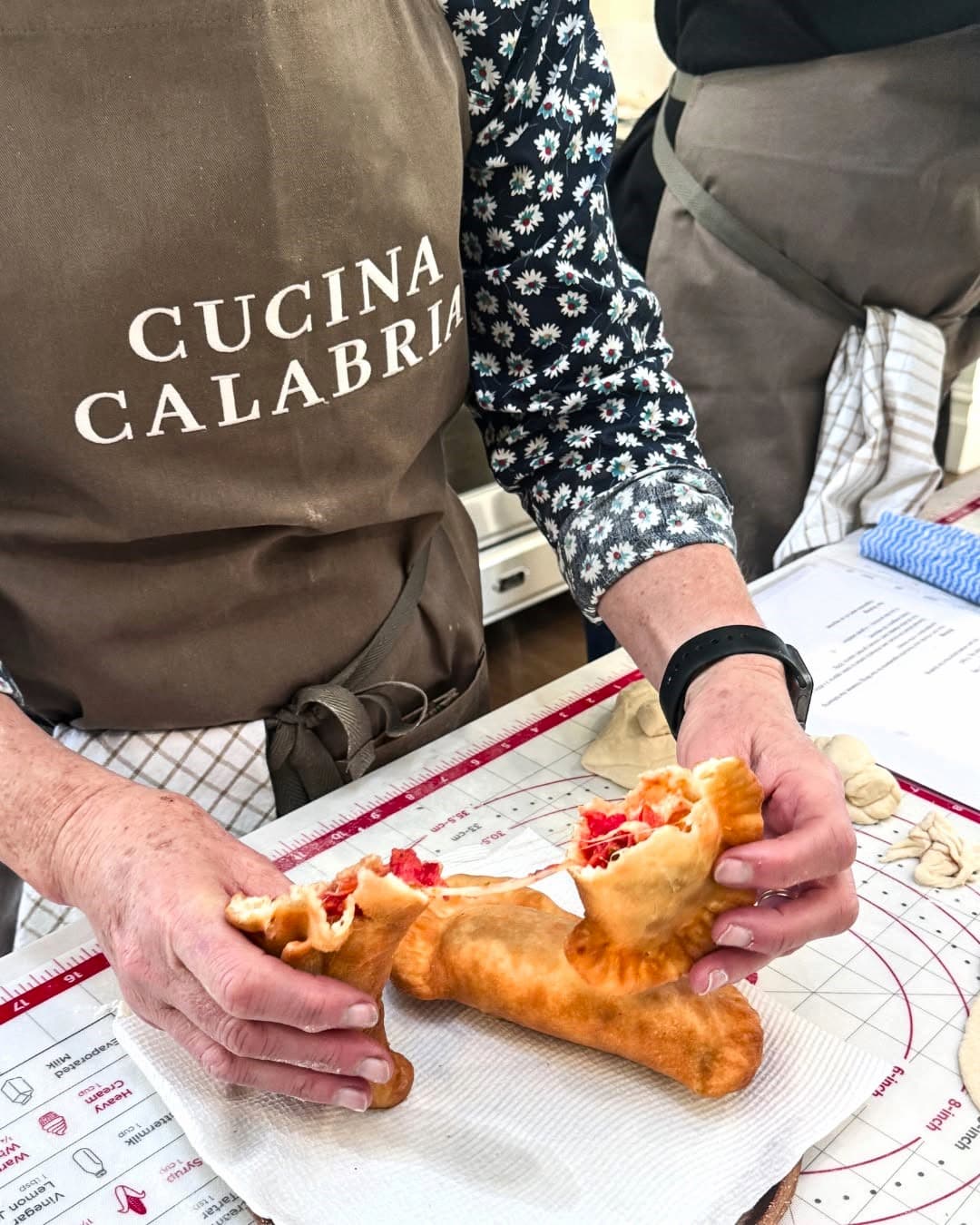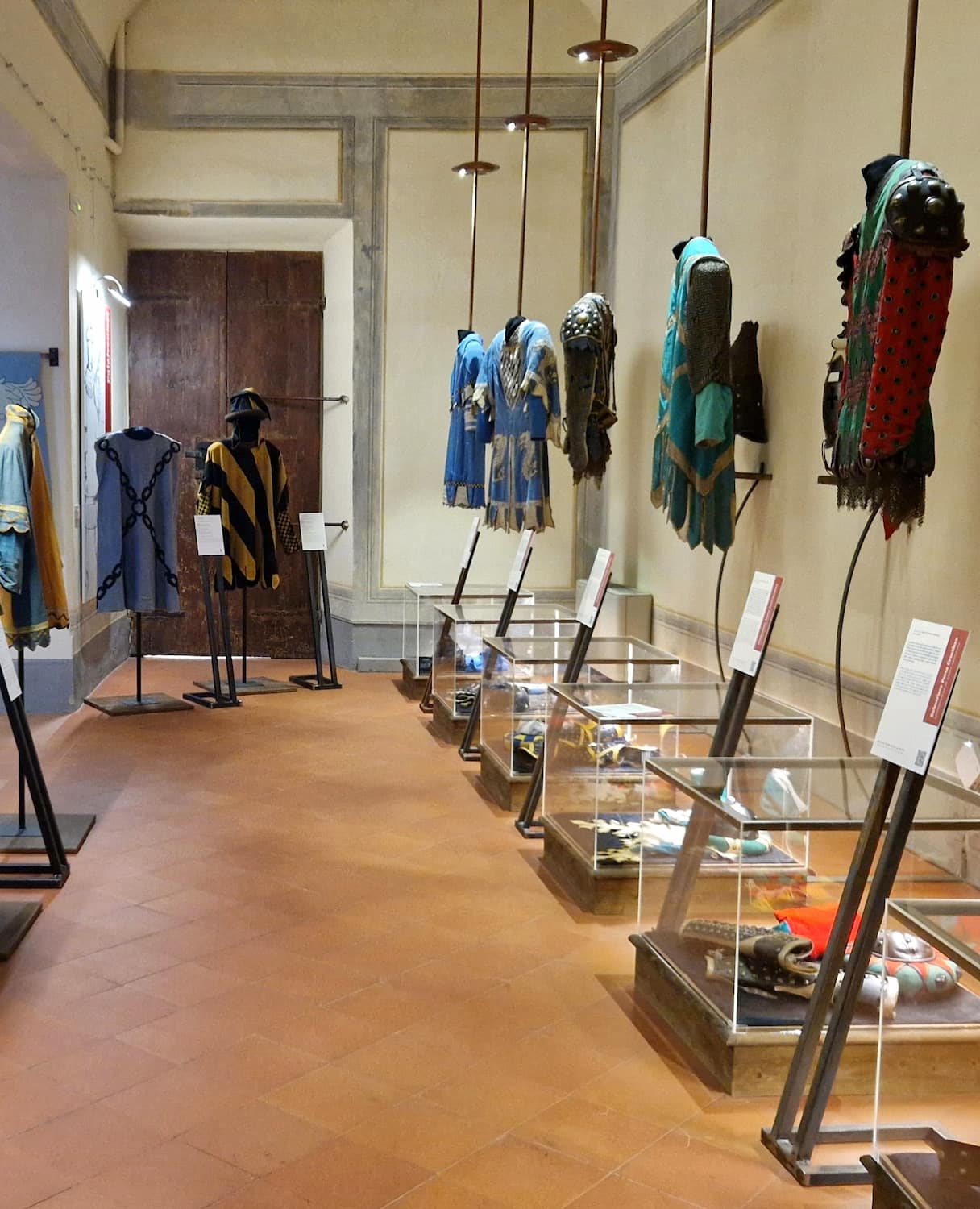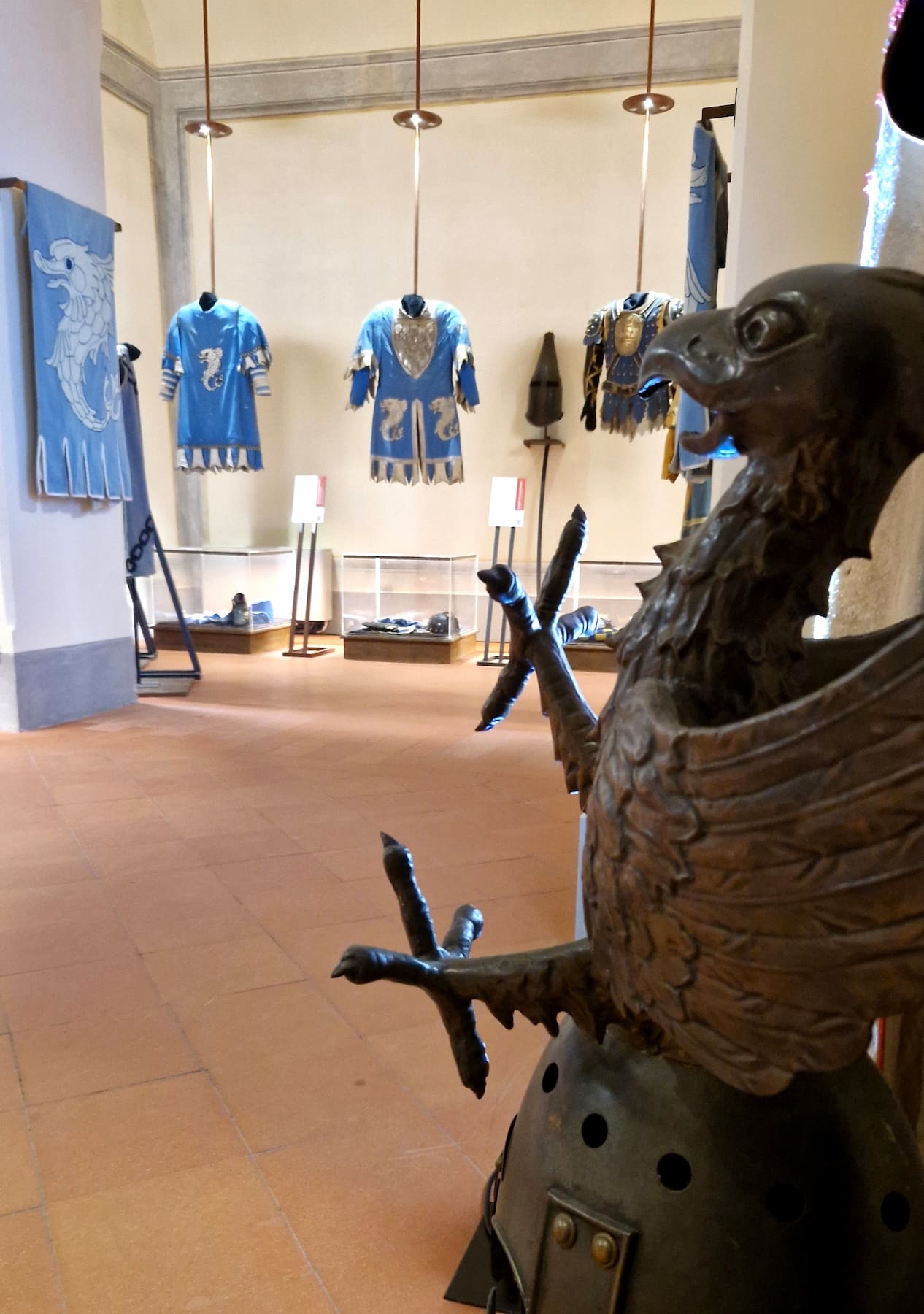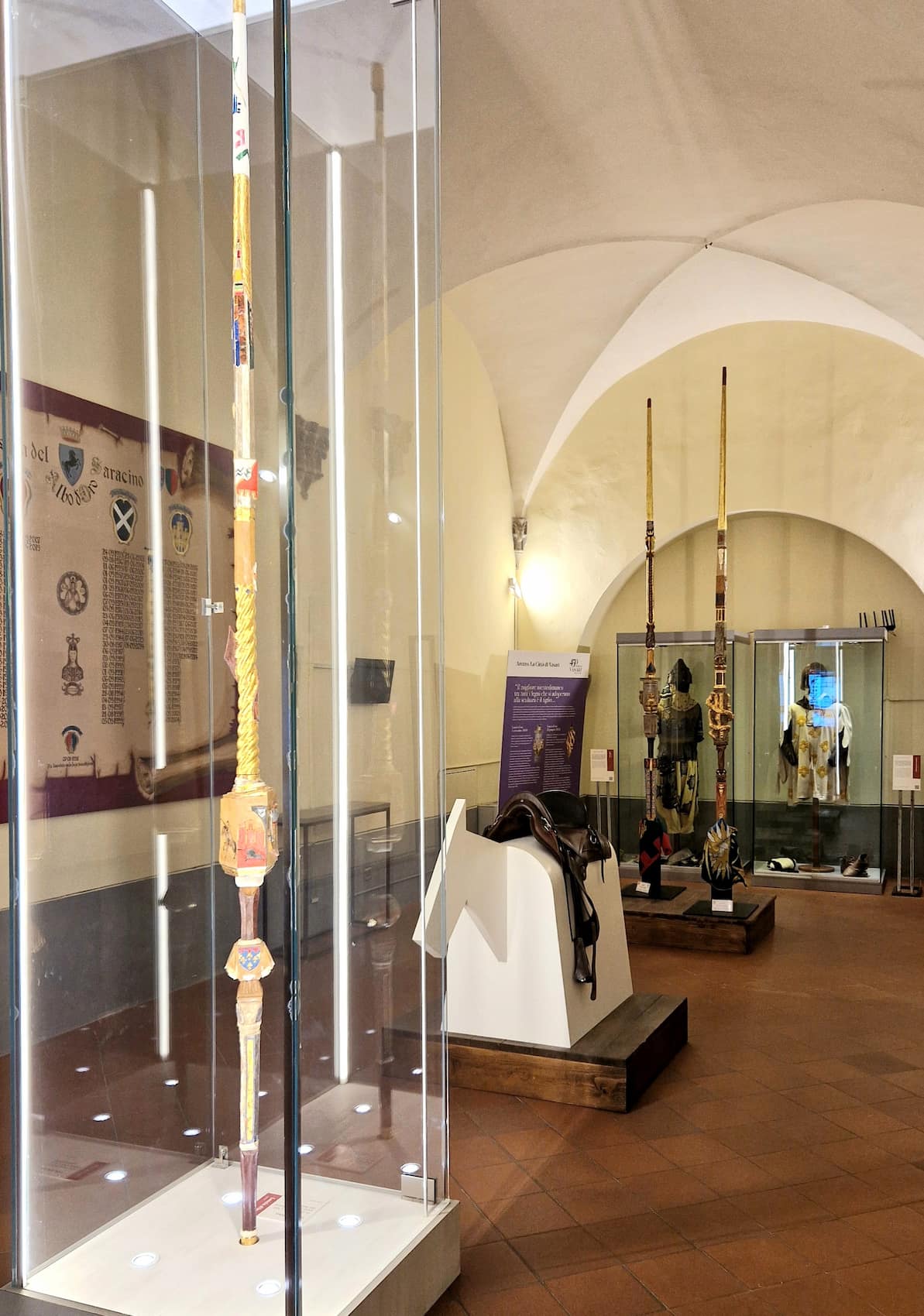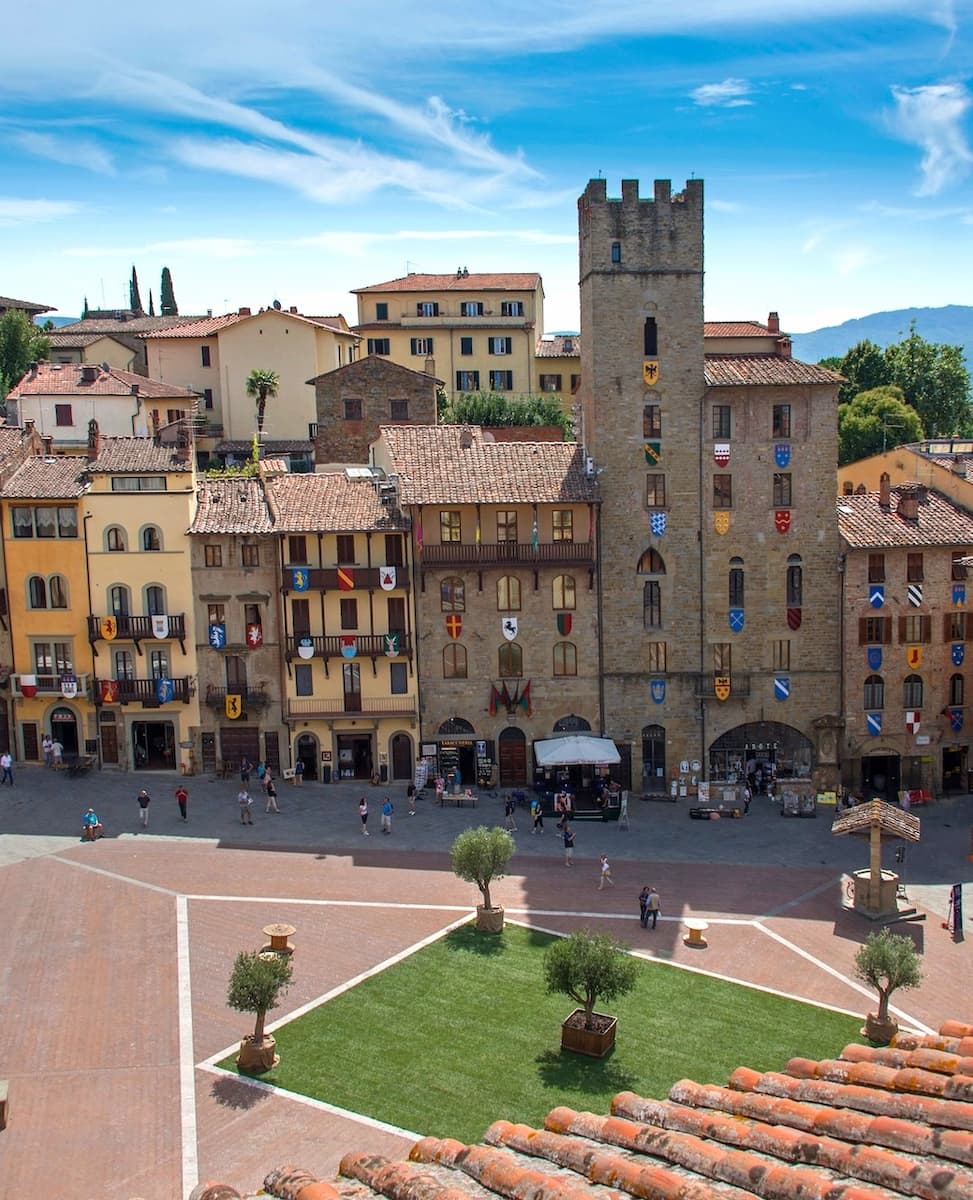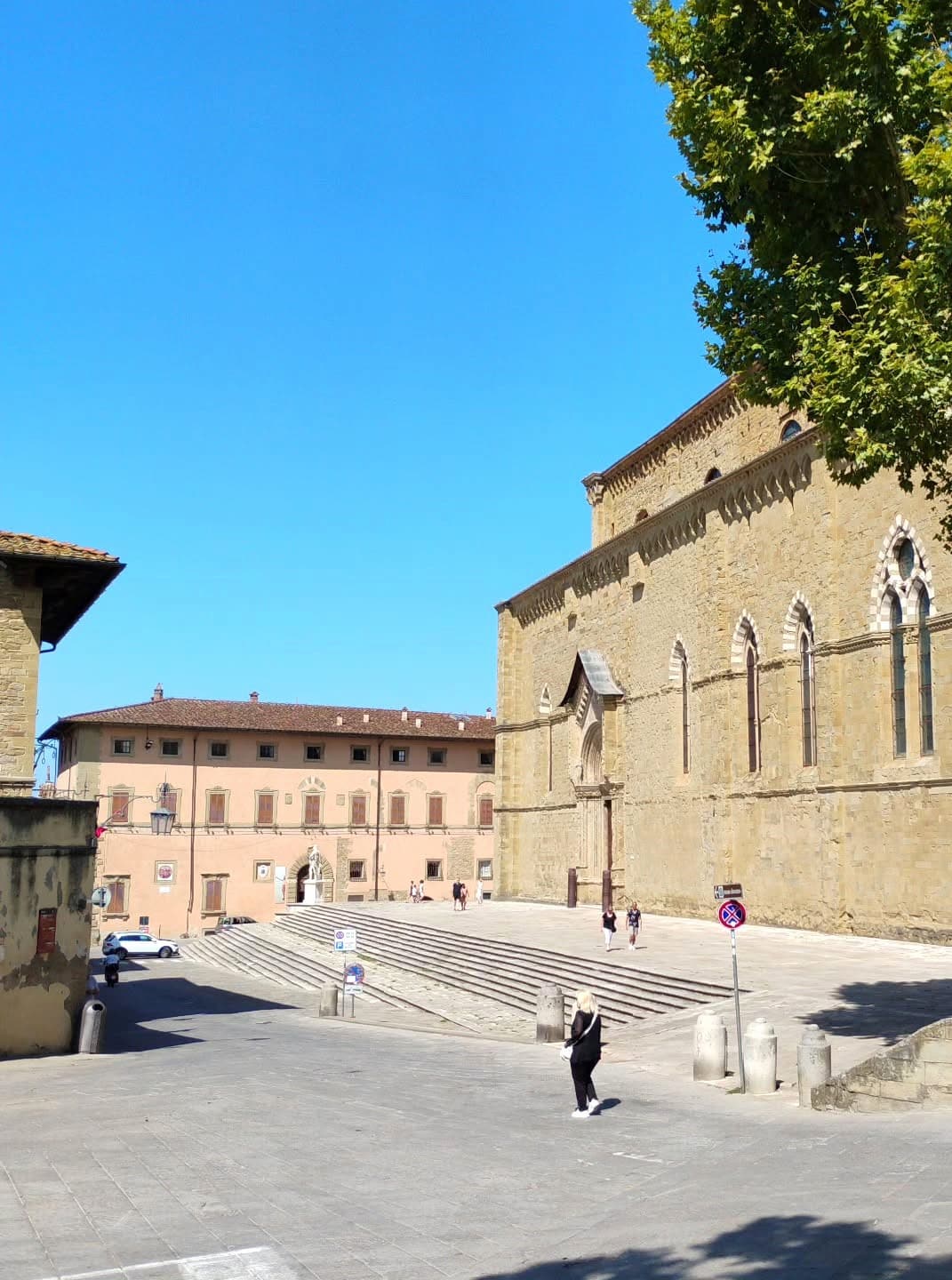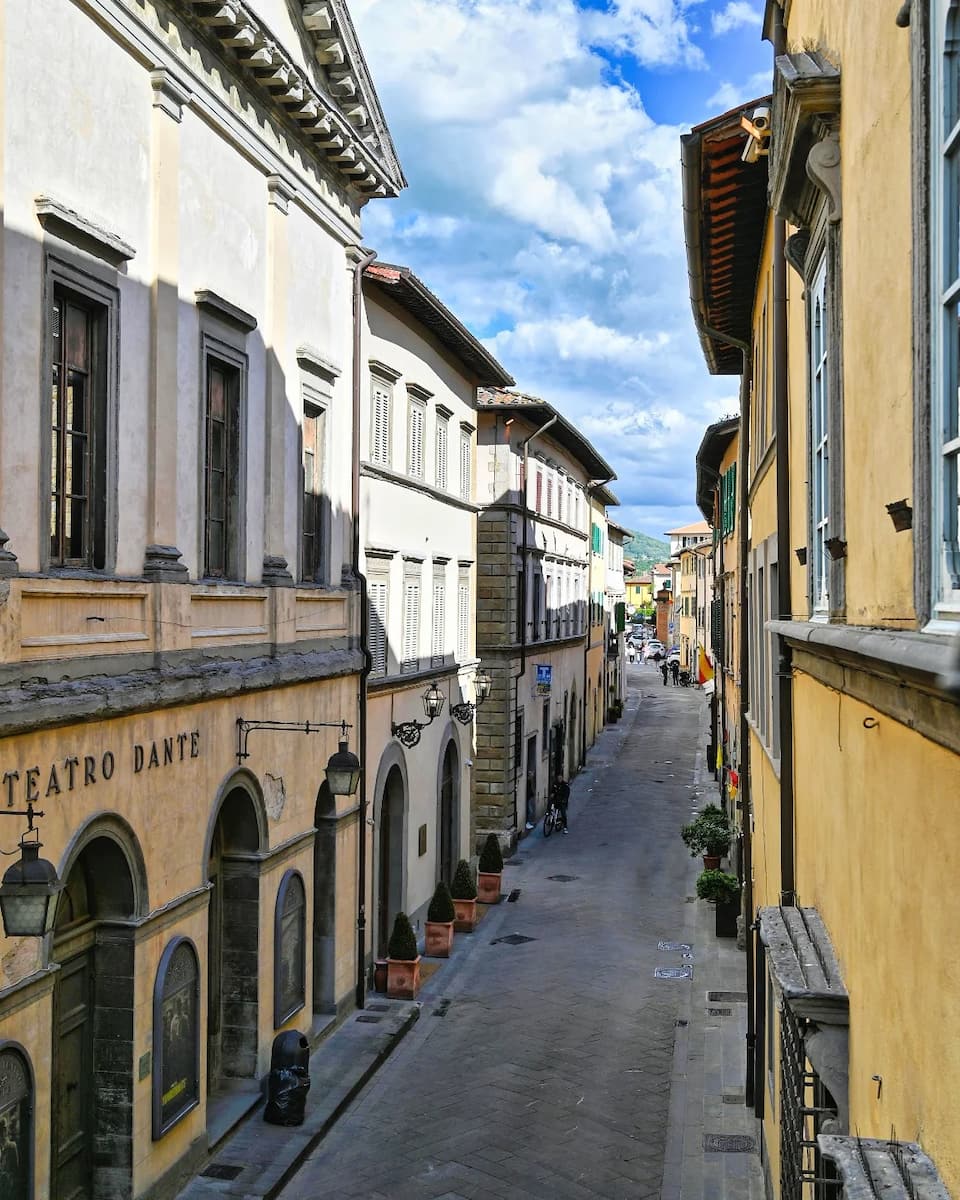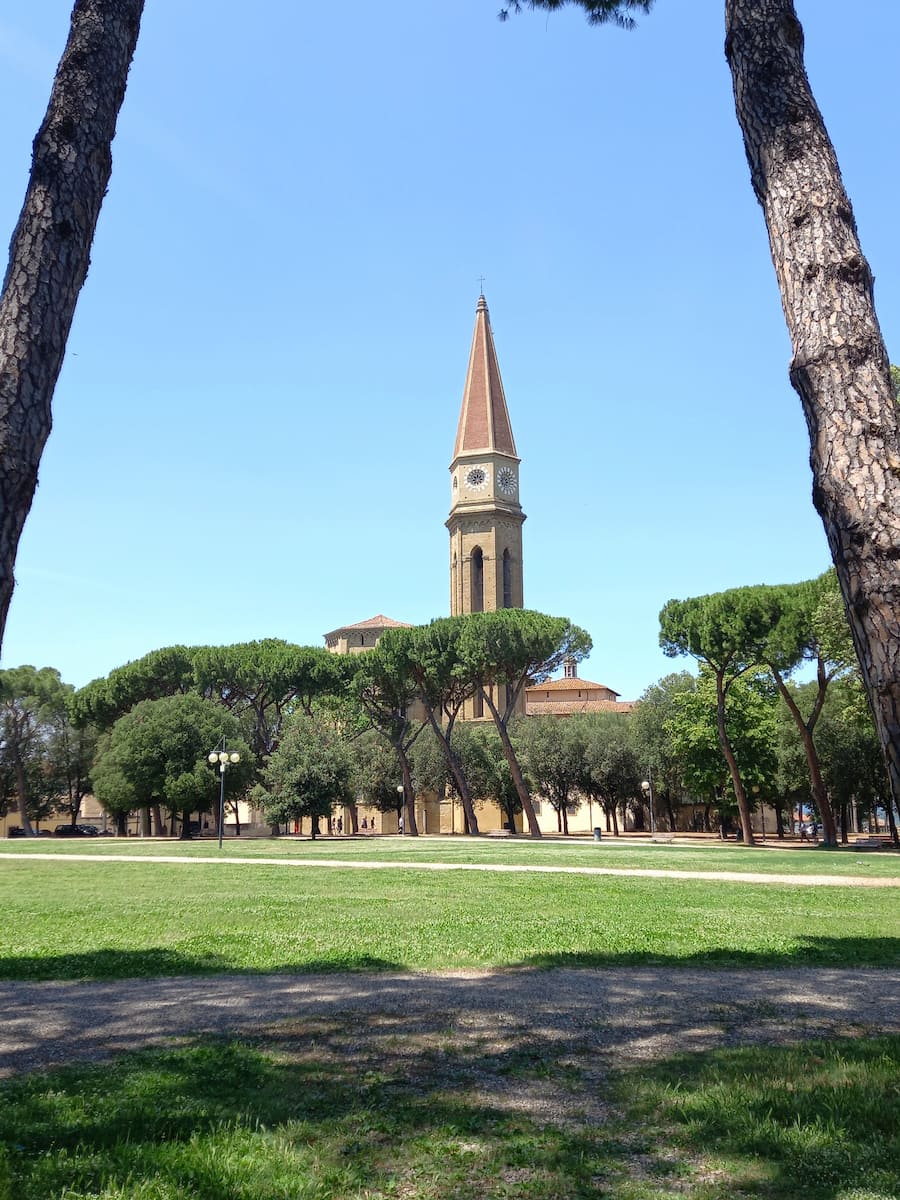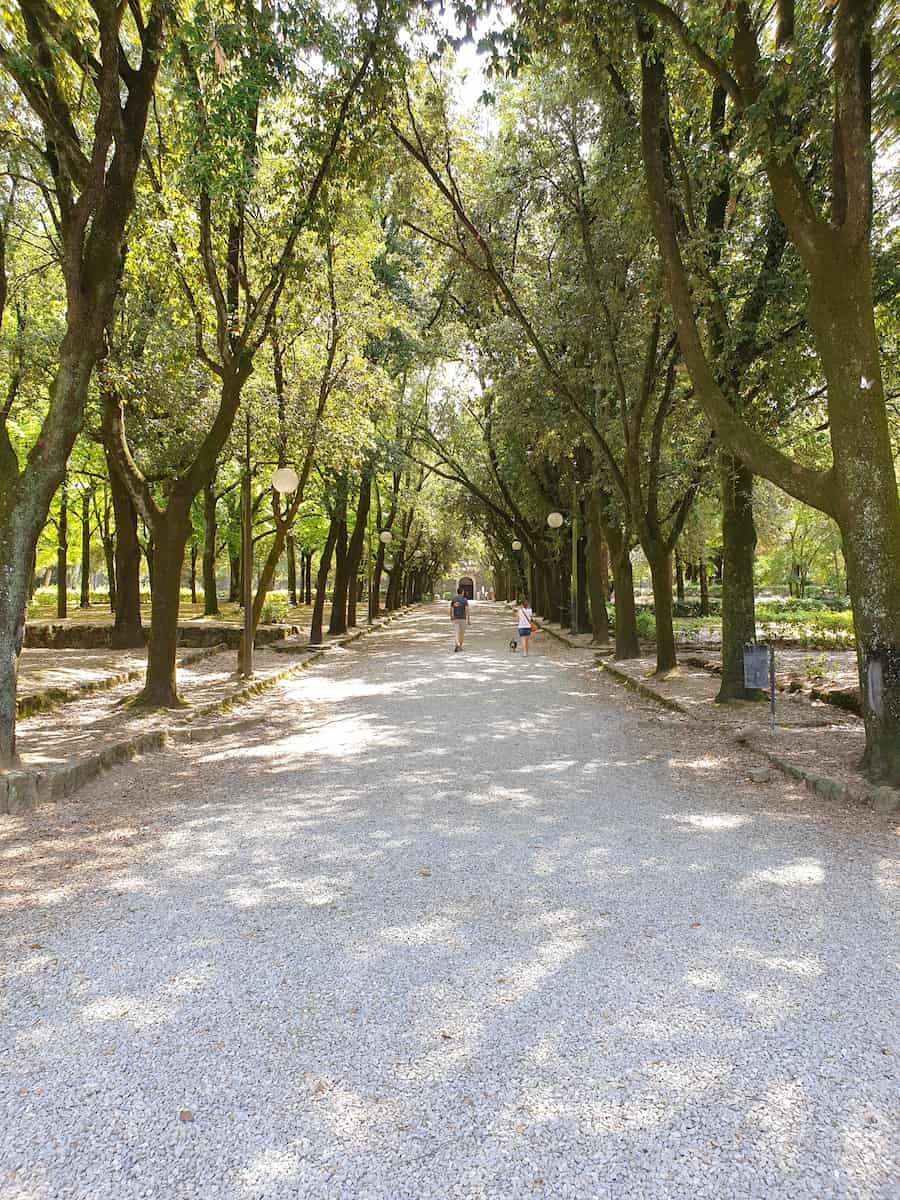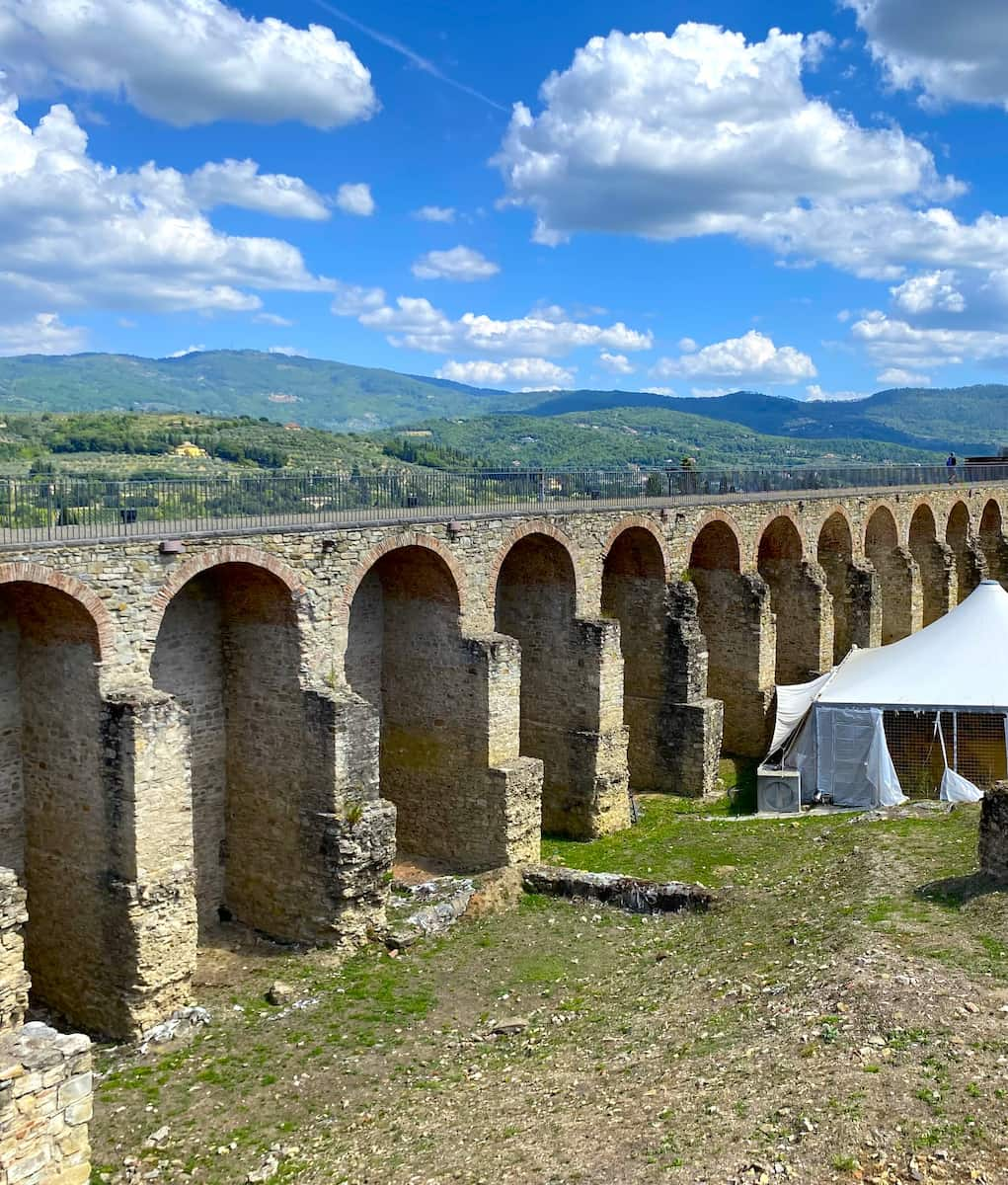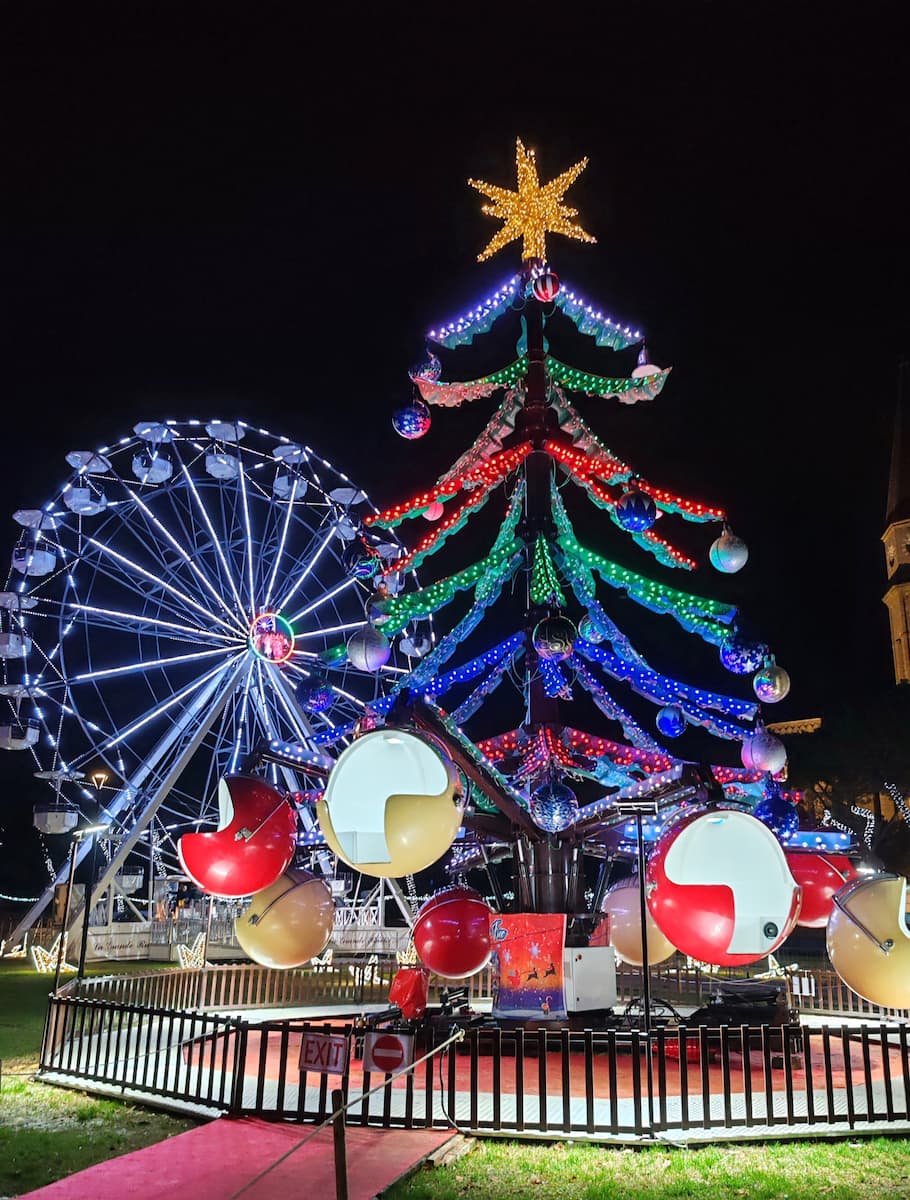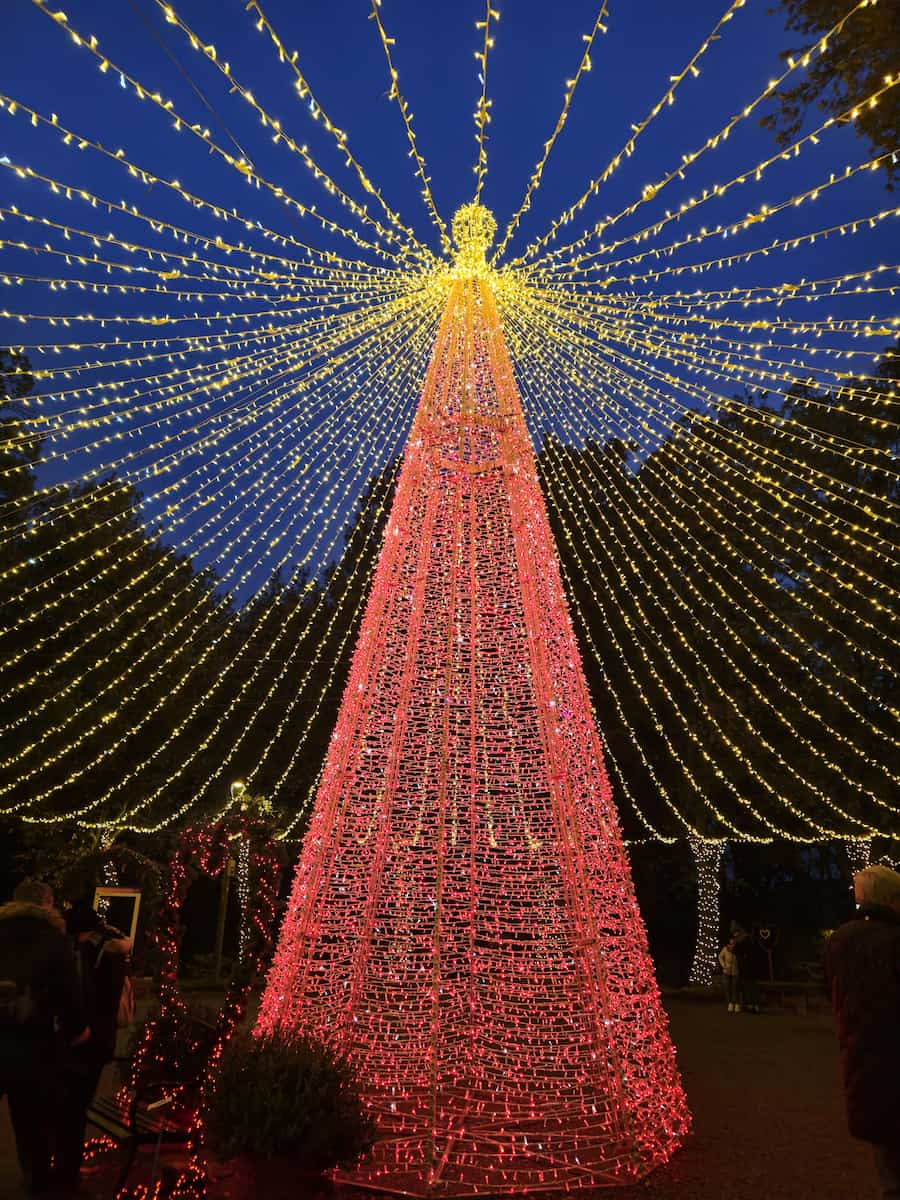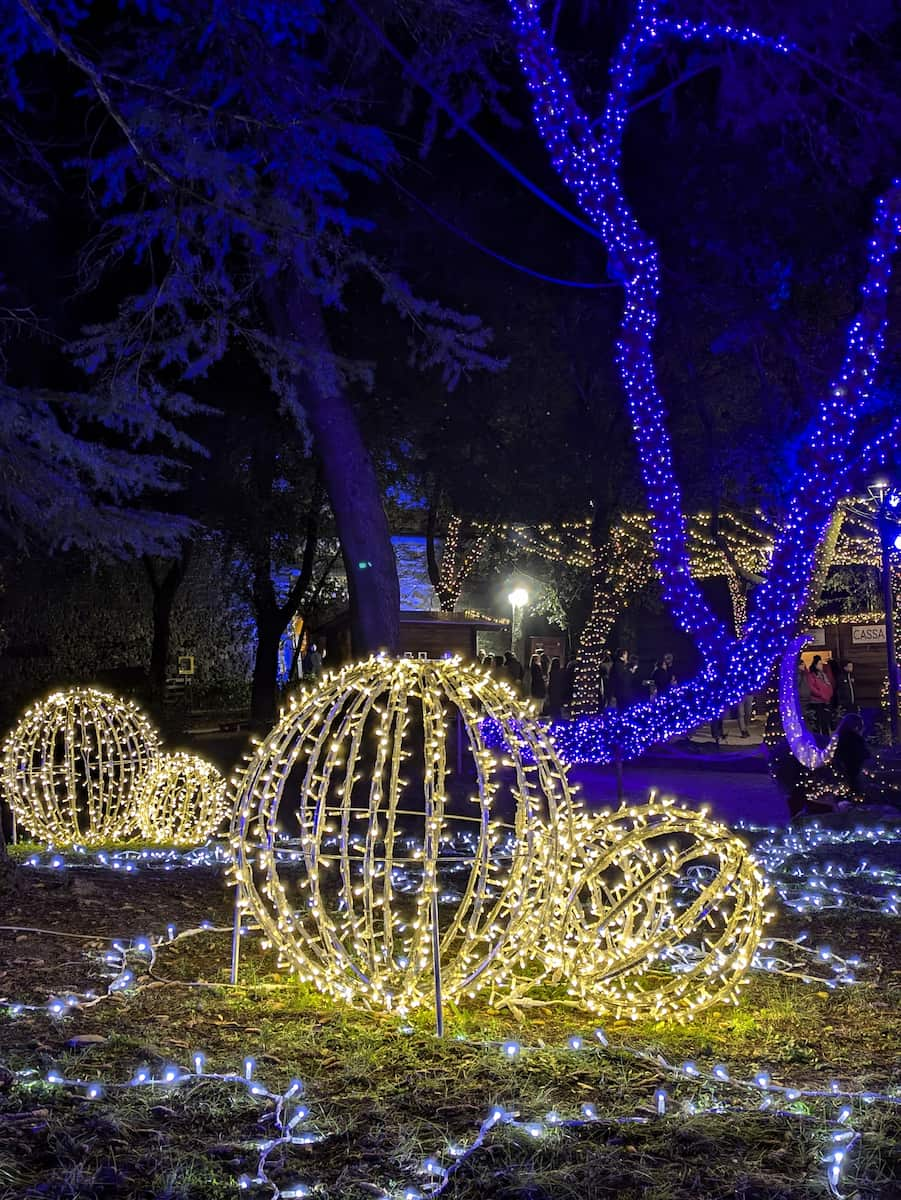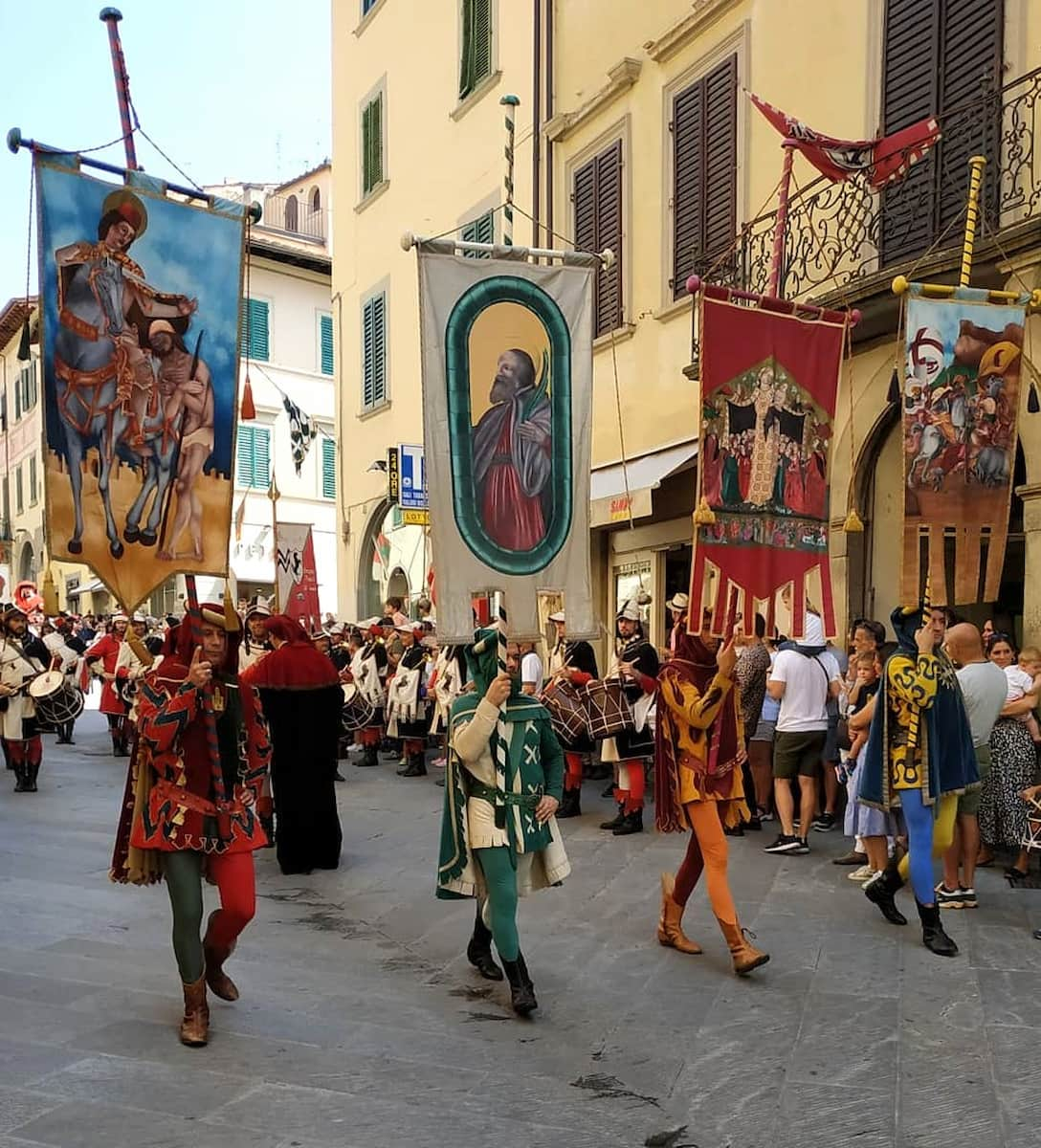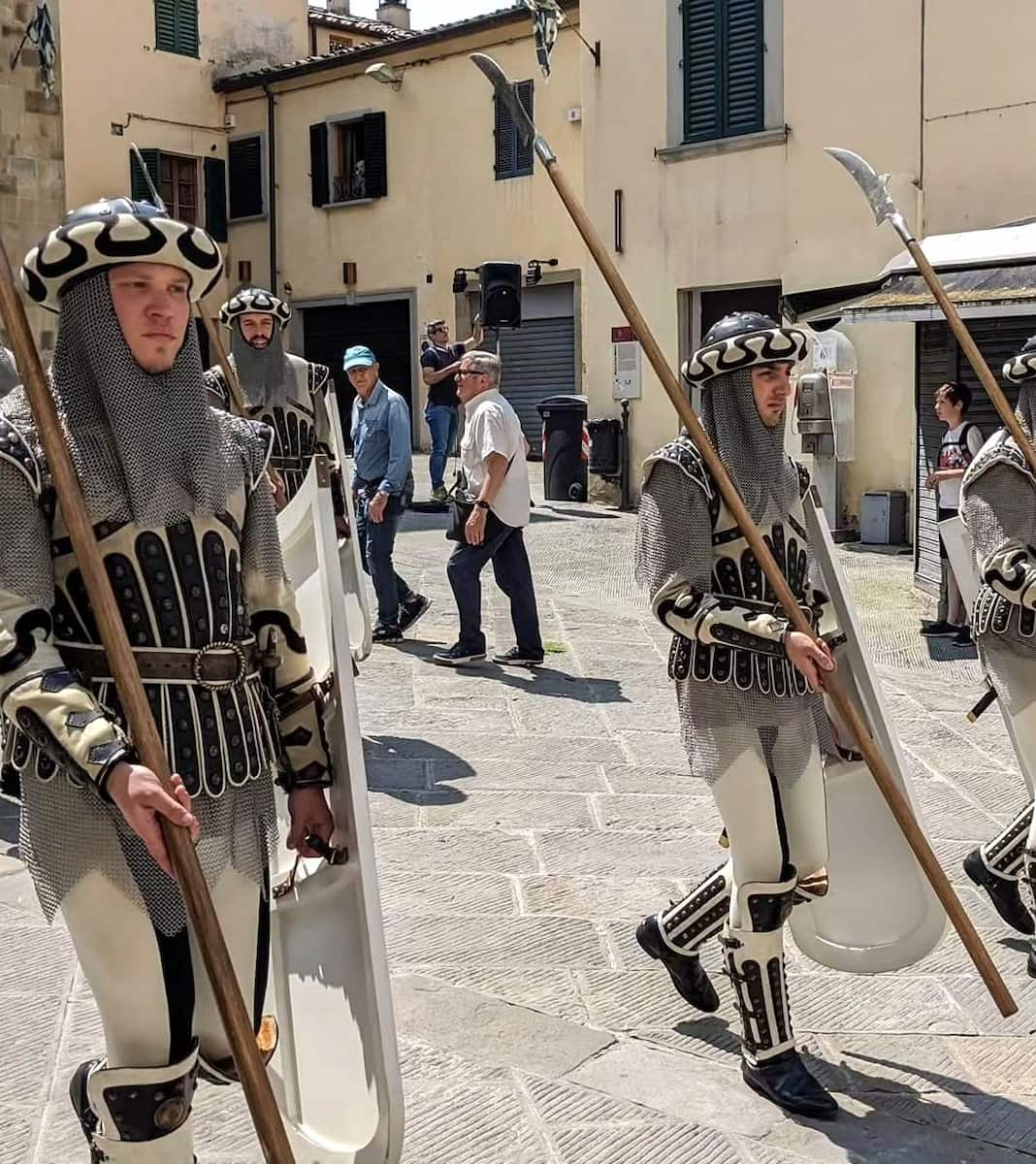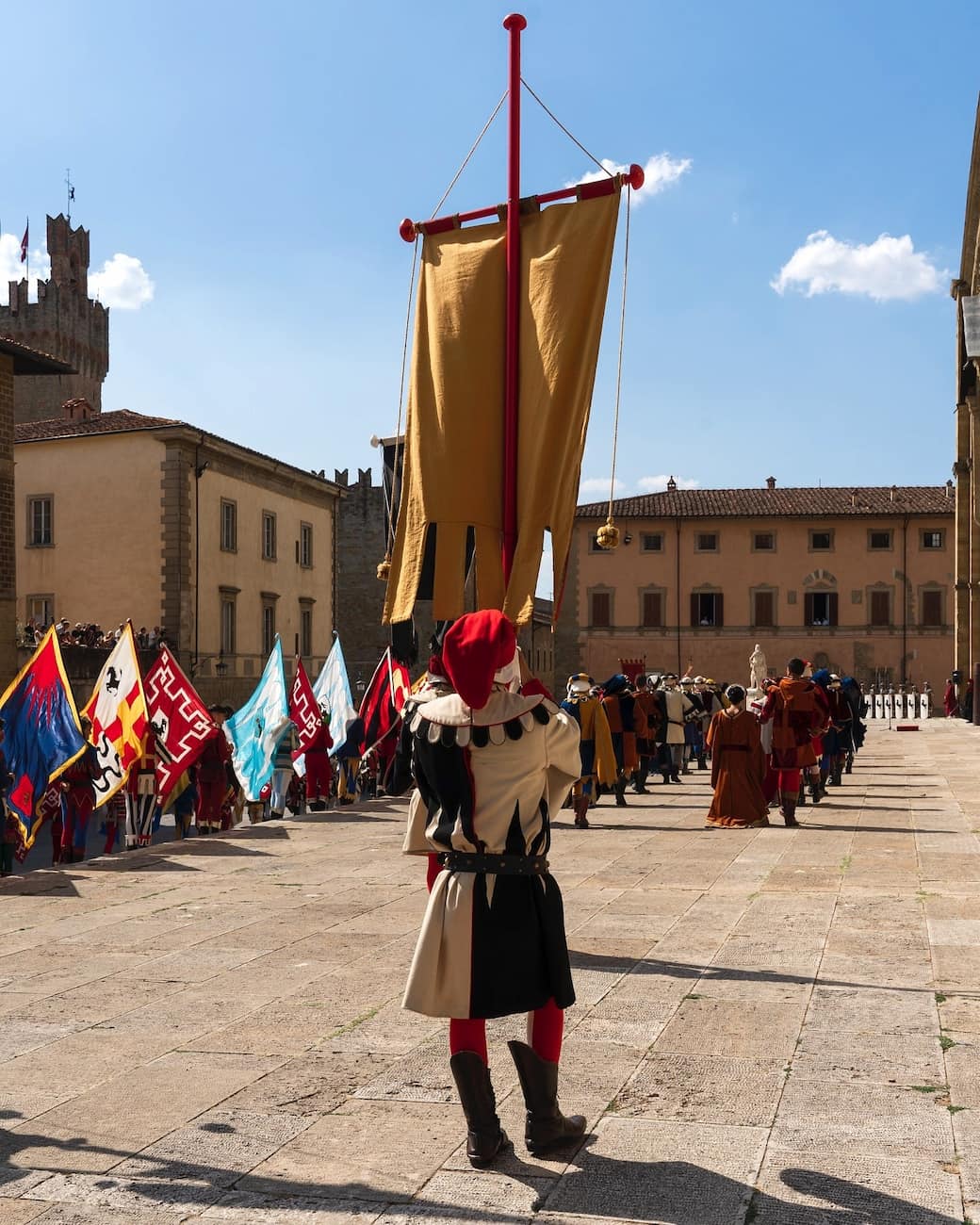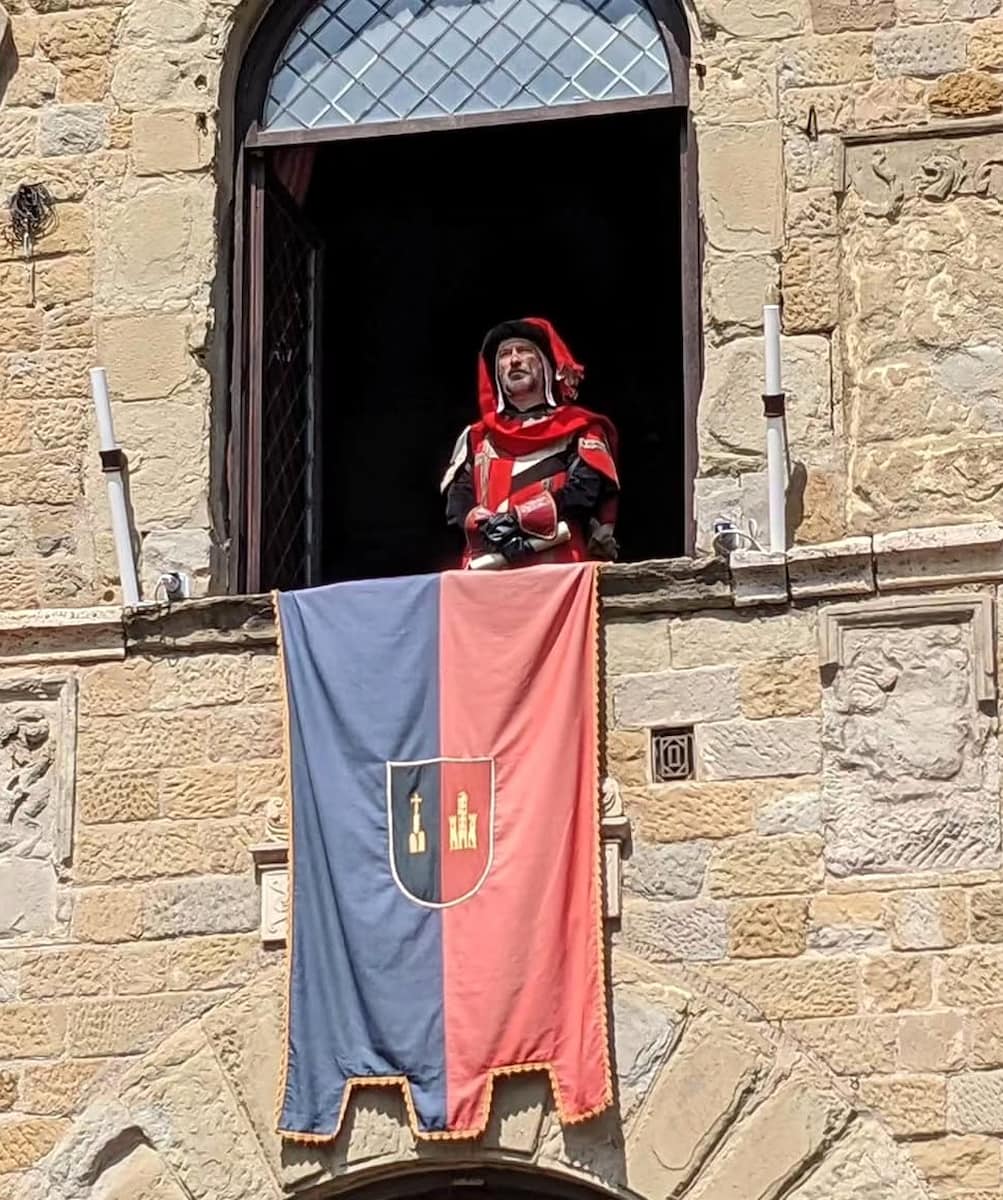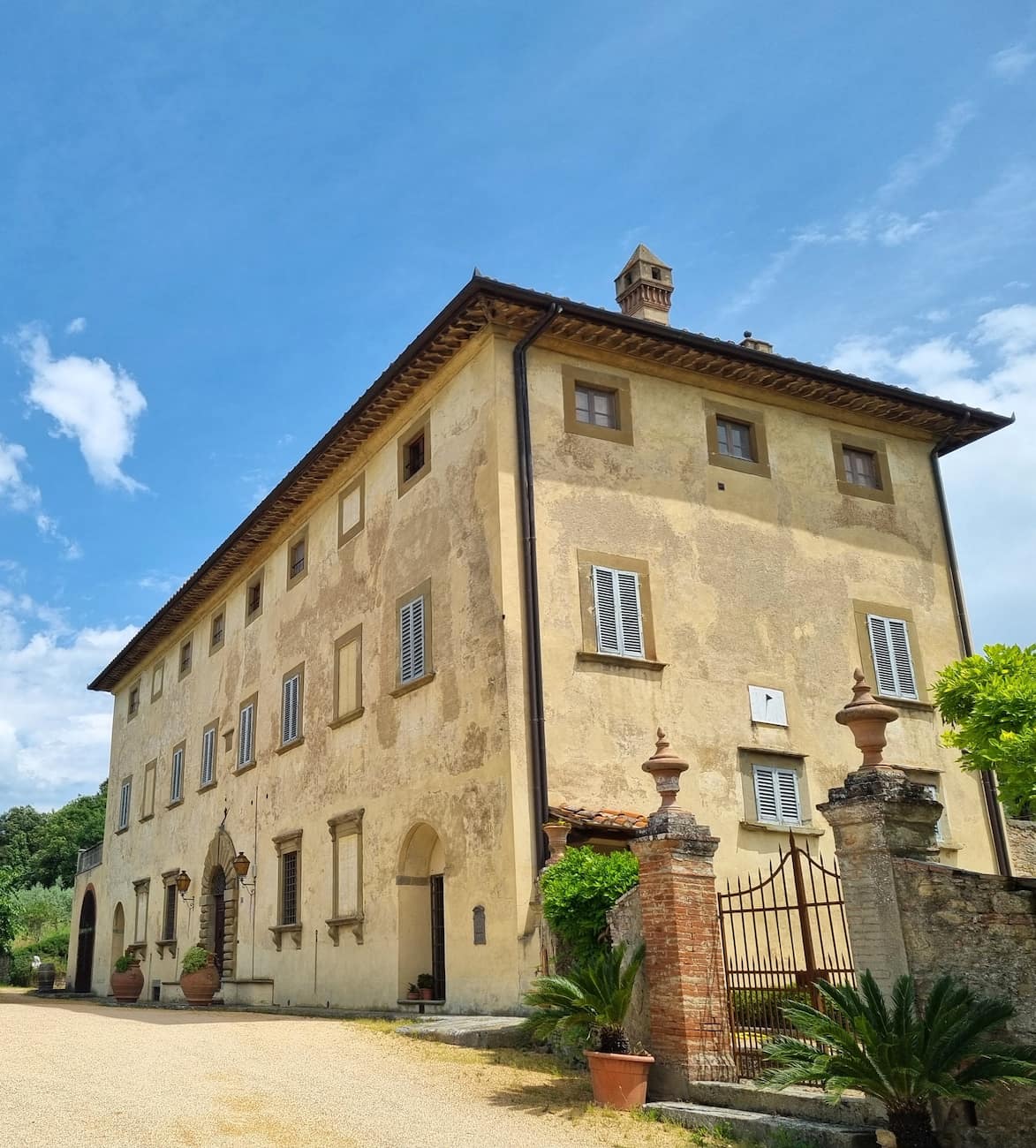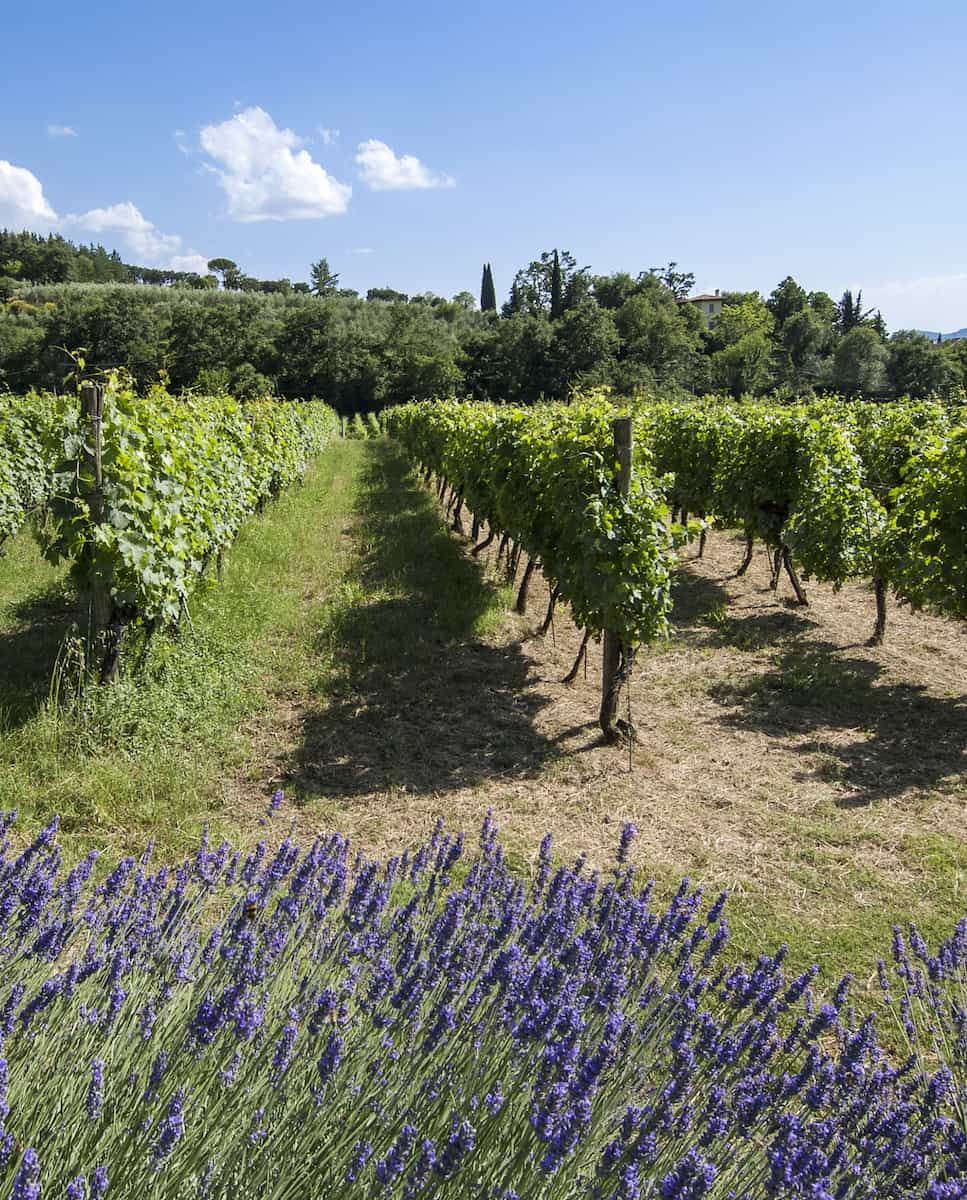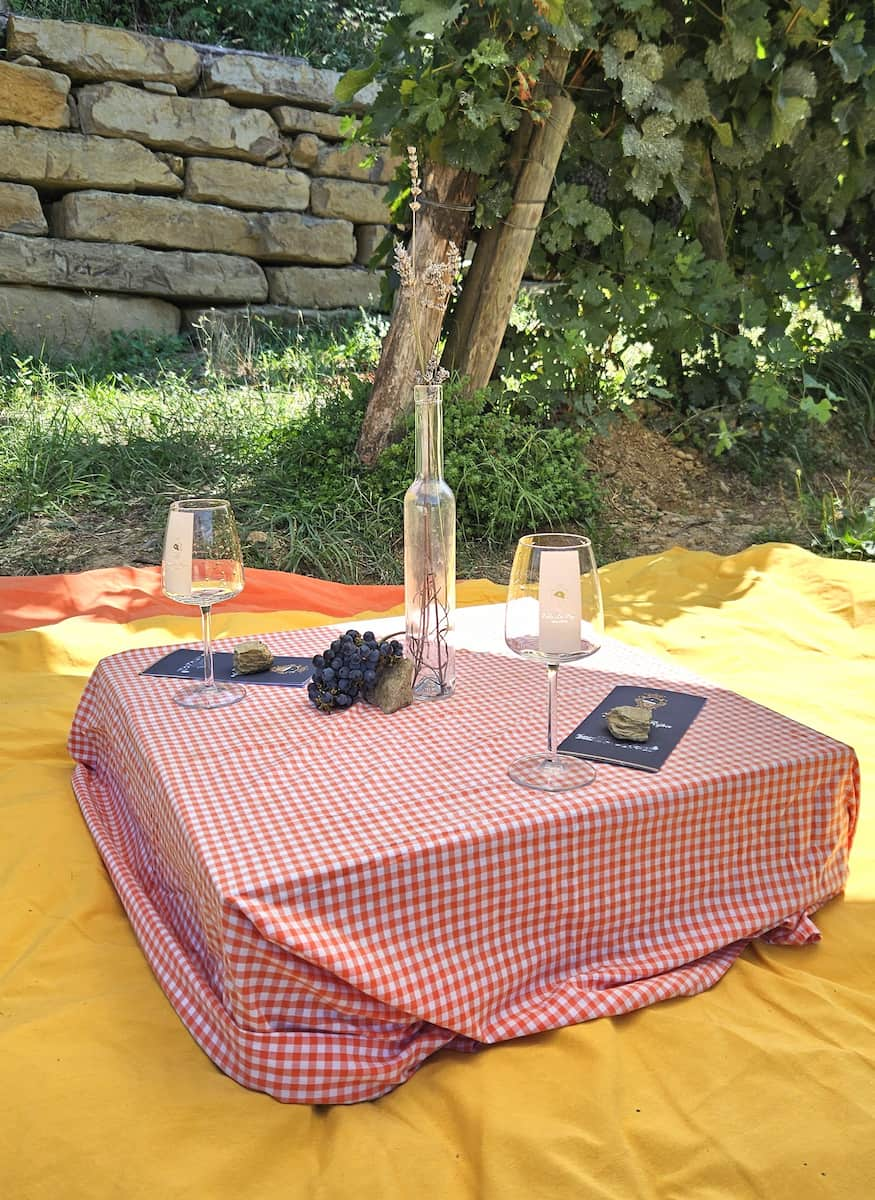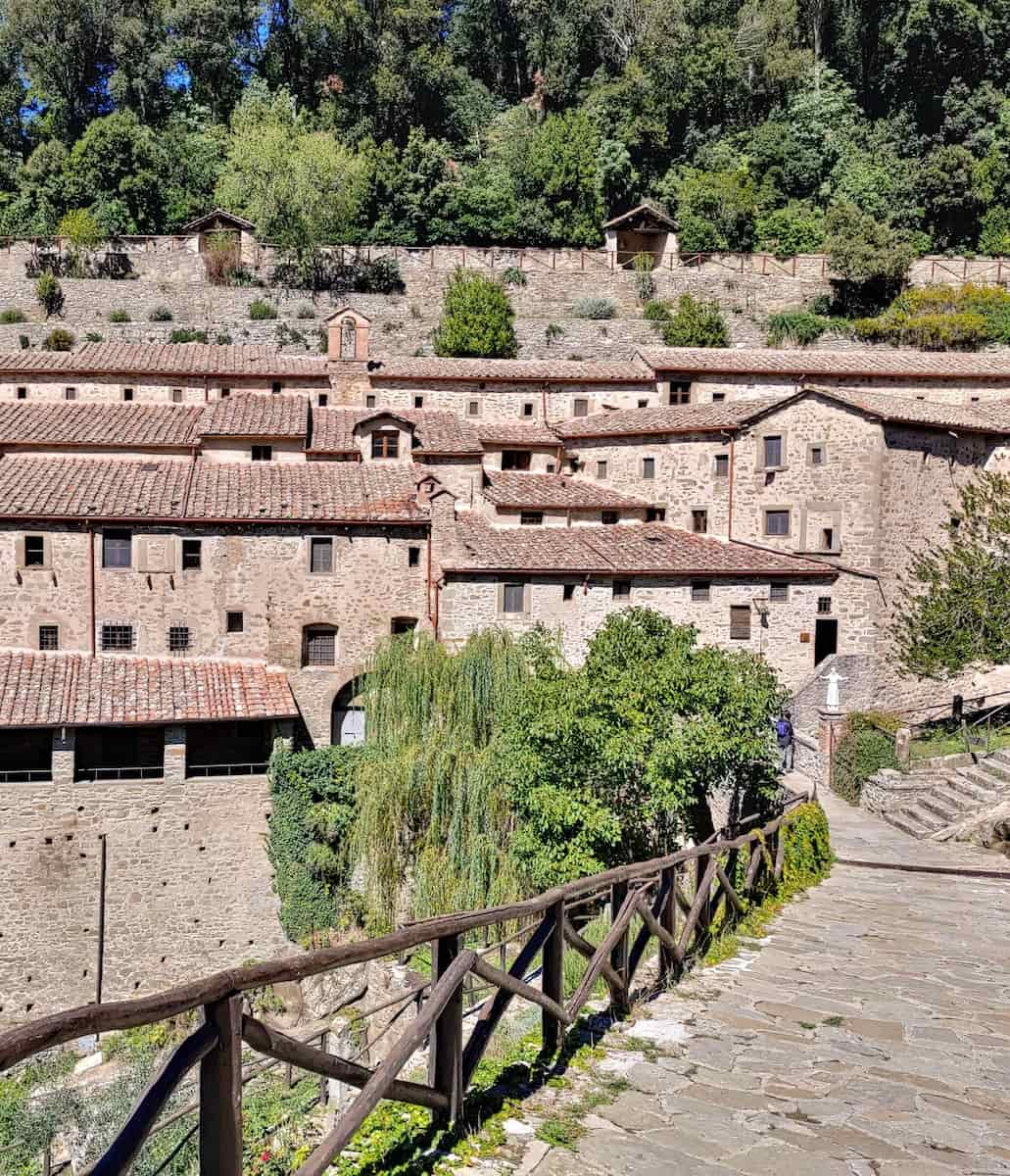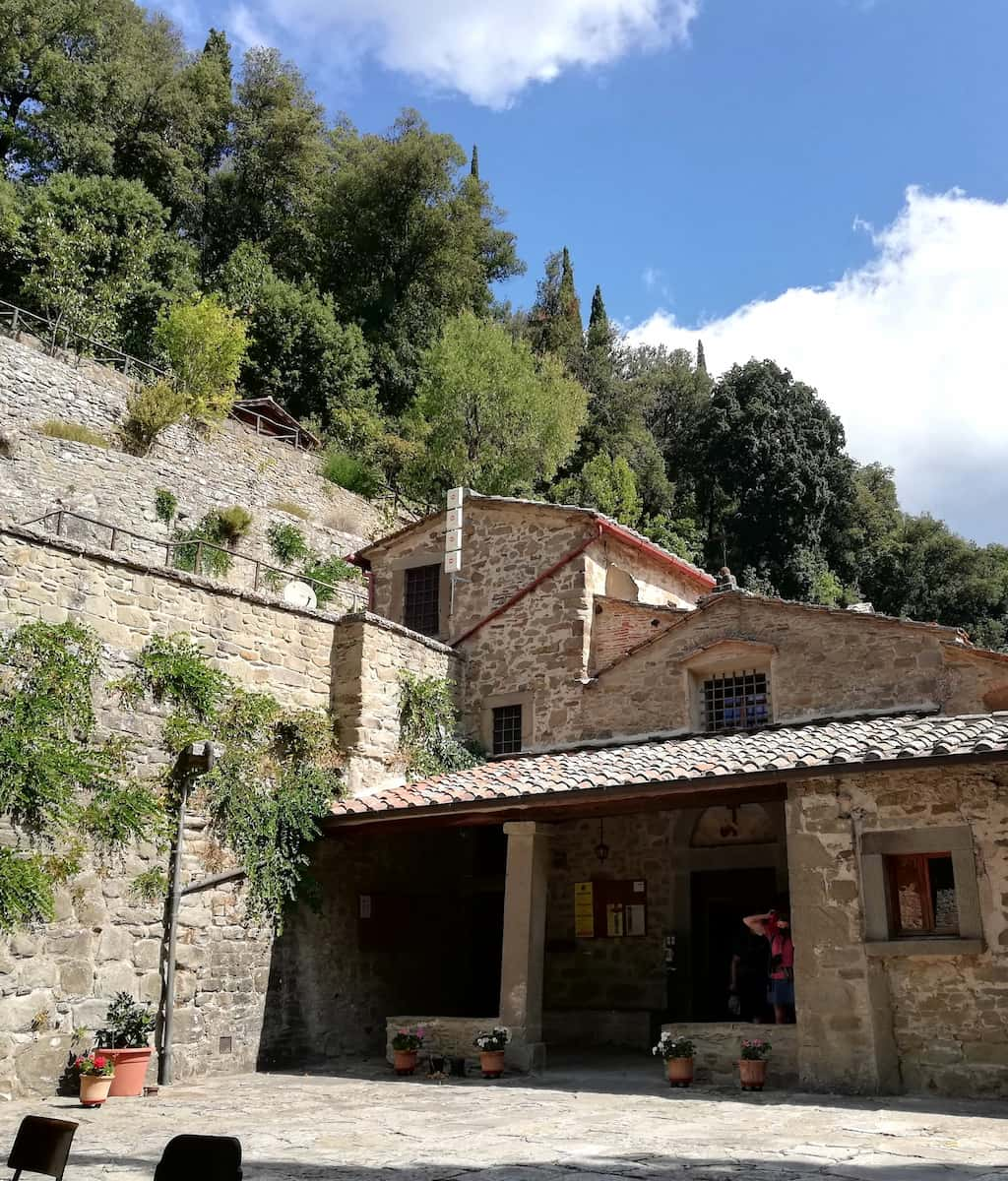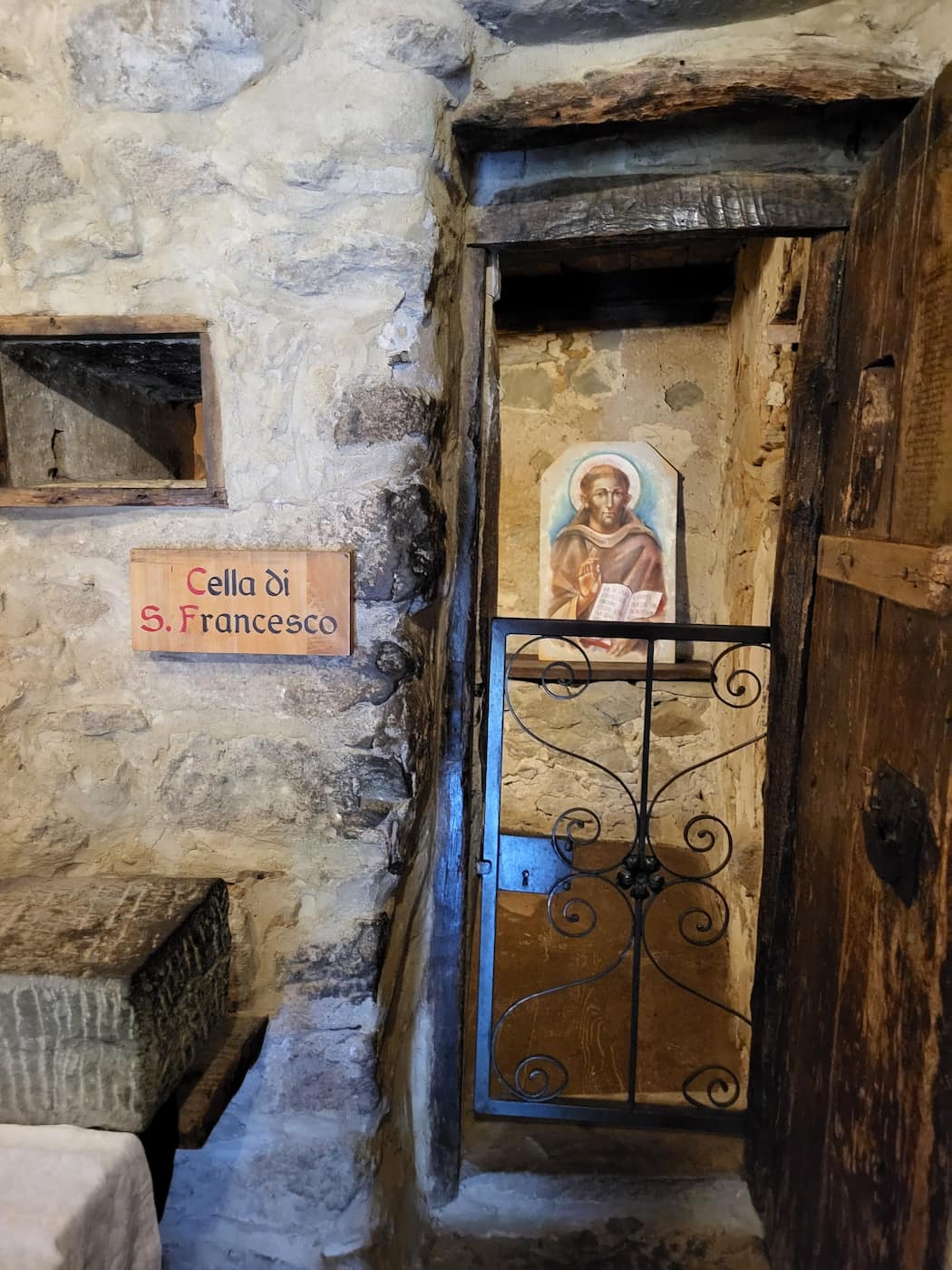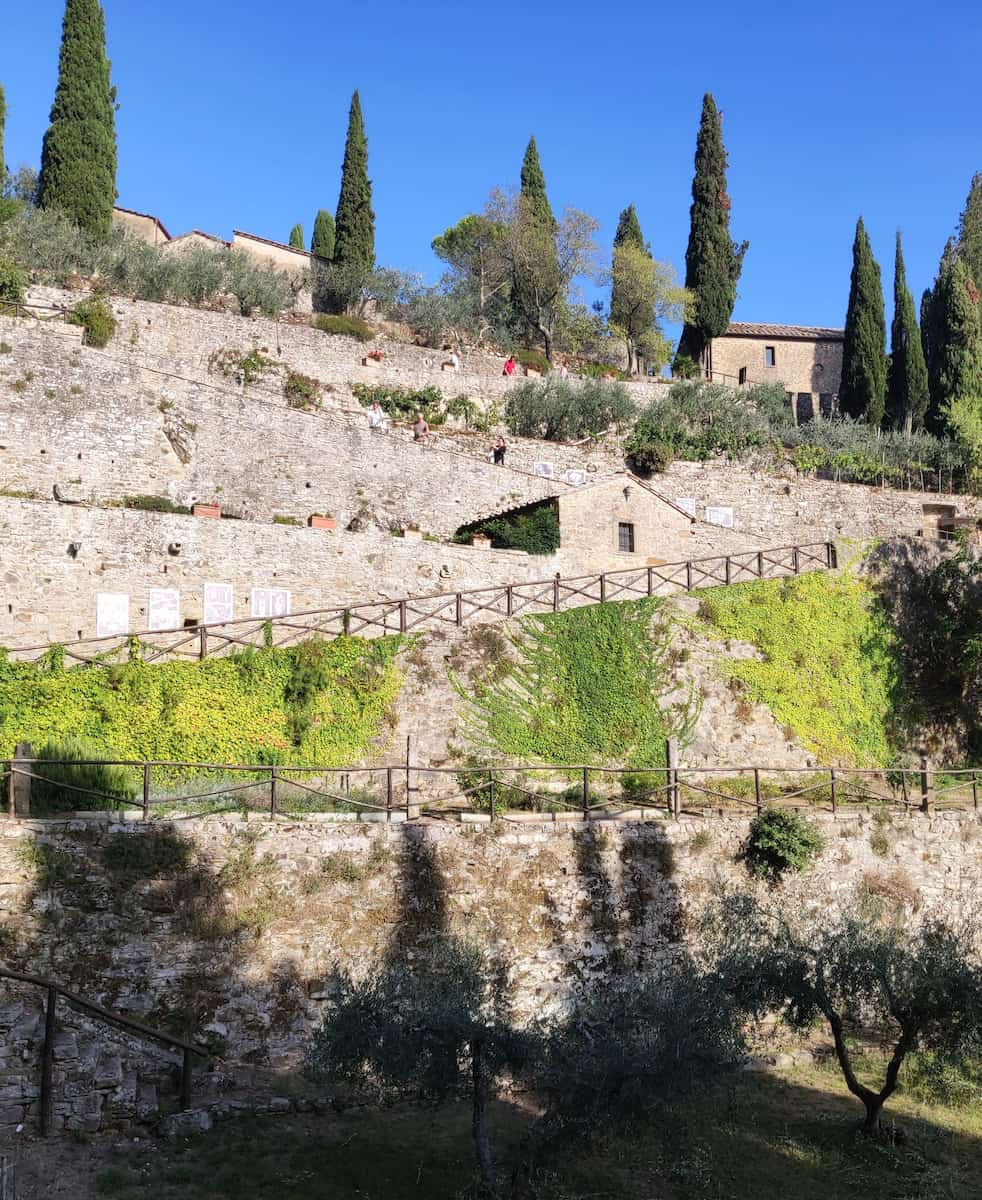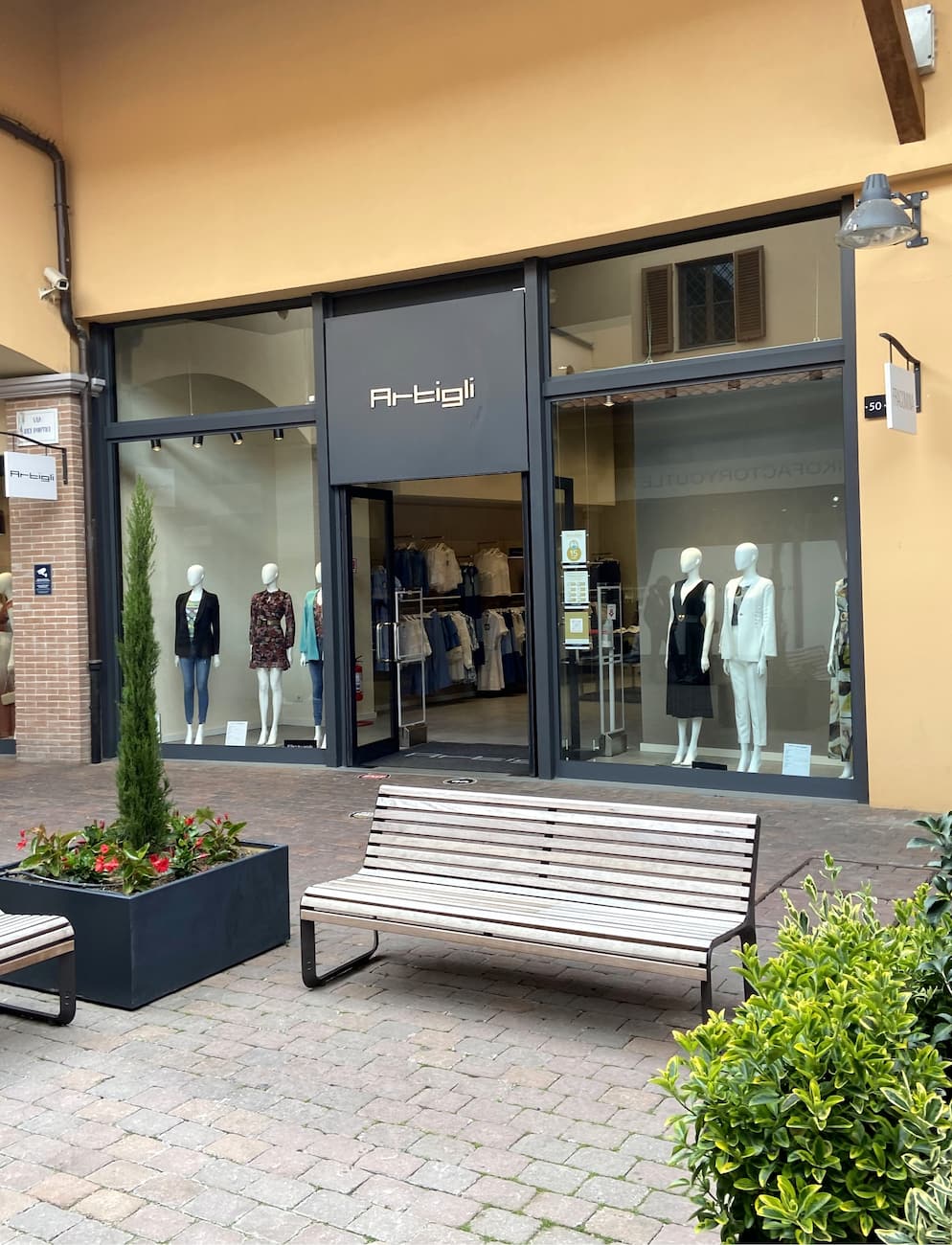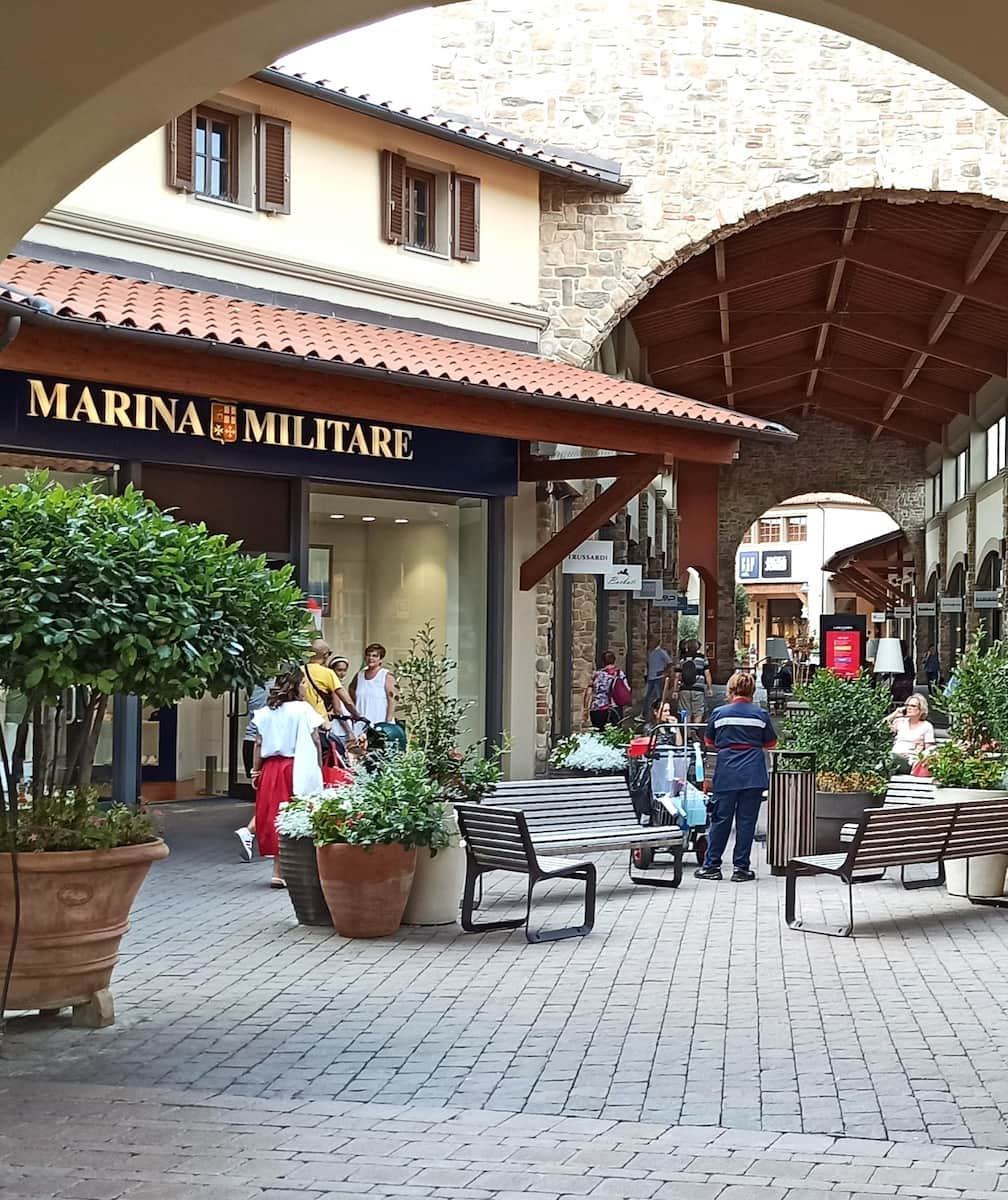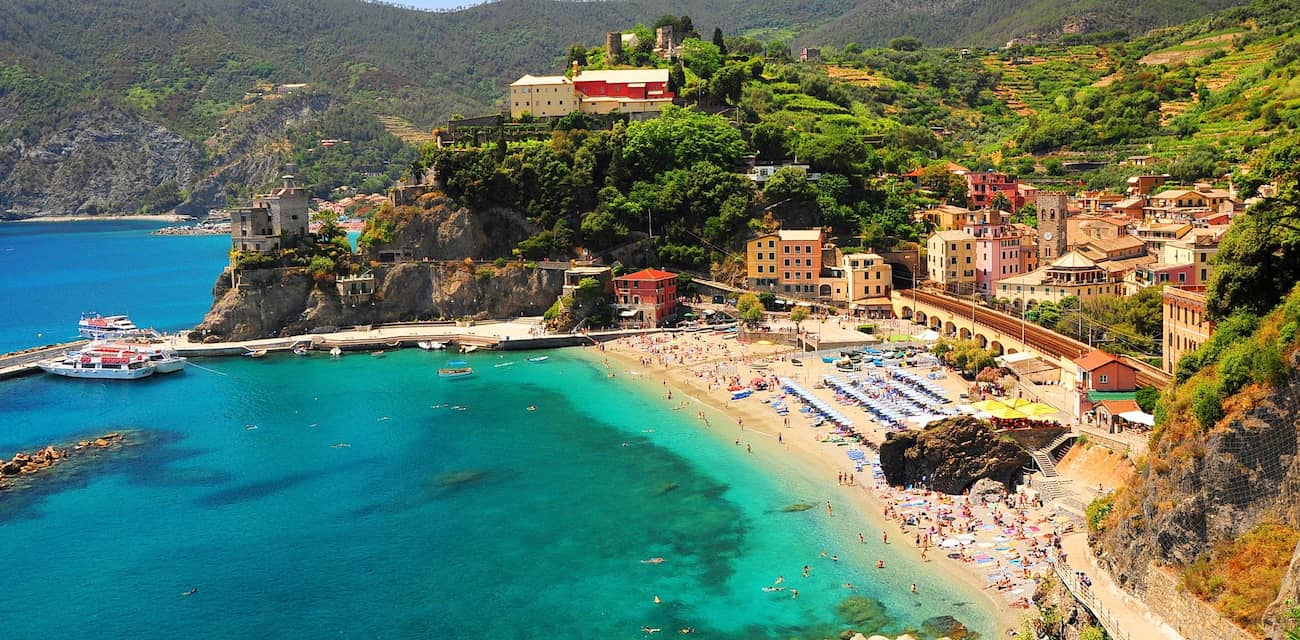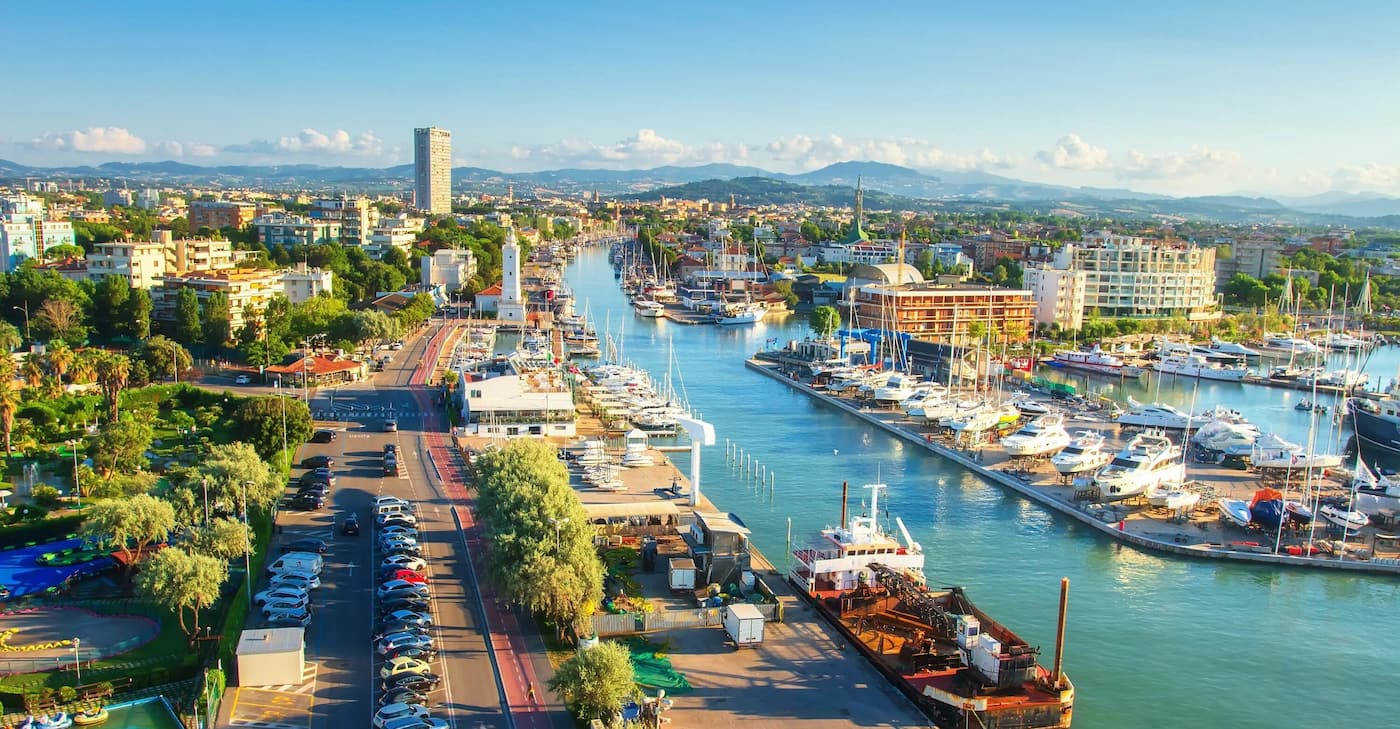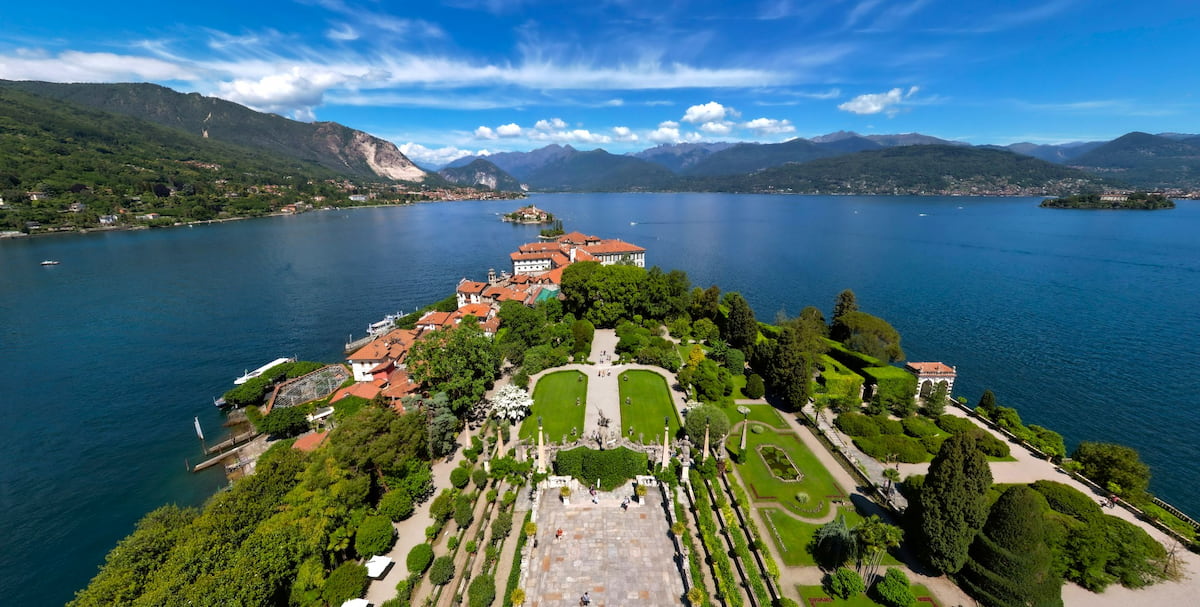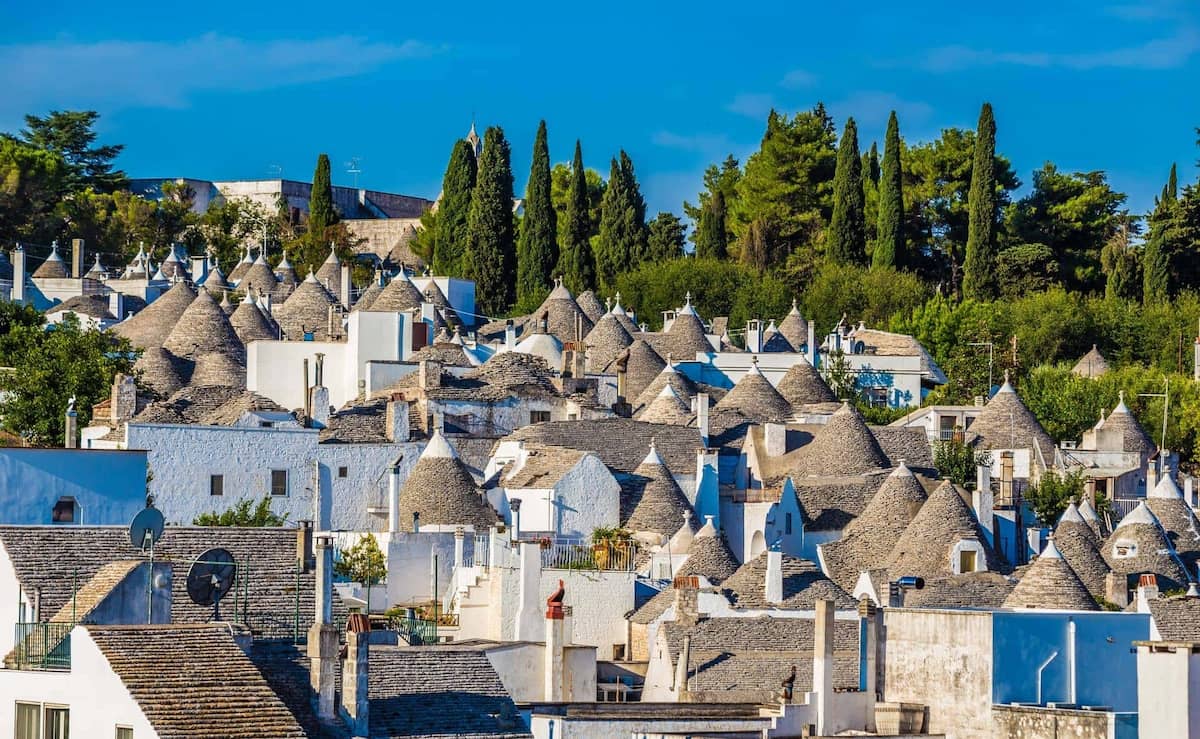I fell in love with Arezzo the moment I wandered into its trapezoid-shaped Piazza Grande, where medieval buildings stand proudly alongside Renaissance loggias. This charming Tuscan town offers all the beauty of more famous destinations without the overwhelming crowds, making it perfect for travelers seeking authentic Italian experiences.
From magnificent frescoes by Piero della Francesca to the lively monthly antique fair that transforms the main square, Arezzo rewards visitors with unexpected treasures around every corner. Whether you’re exploring ancient streets, enjoying panoramic views from the Medici Fortress, or using the city as a base for day trips to nearby medieval villages, Arezzo promises unforgettable memories in the heart of Tuscany.
🏠 Best Hotels in Arezzo
- 💎 Luxury Hotel: Chimera Tuscany Resort
- ✨ 5-Star: La Cantina Relais - Fattoria Il Cipresso
- 🏨 4-Star: Etrusco Arezzo Hotel - Sure Hotel Collection by Best Western
- 🛏️ 3-Star: B&B 52cento
- 💸 Cheap: B&B Hotel Arezzo
- 🏢 Apartment: Residence Peloni
- 👨👩👧👦 For Families: Vogue Hotel Arezzo
- 🏩 For Couples: Chimera Tuscany Resort
💁 Best Guided Tours
- Arezzo Private Tour with Official Guide from € 42 (⭐4.9/5)
- Traditional Tuscan Pasta & Tiramisu Masterclass in Arezzo from € 53 (⭐ 4.9/5)
- Traditional Home Cooking Experience in Bologna from € 154 (⭐ 4.9/5)
- Tasting at the Table from € 46 (⭐ 5.0/5)
Best Things To Do in Arezzo, Tuscany
1. Piazza Grande
Heart of Arezzo. Standing in the magnificent Piazza Grande feels like stepping onto a medieval stage set. This trapezoid-shaped square, built on a slope during the 13th century, captivated me with its unconventional design and stunning architecture spanning different historical periods. The square transforms completely during the famous Antique Fair, held on the first weekend of every month.
Surrounding treasures. The square is bordered by impressive structures including the elegant Logge del Vasari (designed by Renaissance master Giorgio Vasari) on the north side, the apse of Santa Maria della Pieve with its decorative arches, and the beautiful Palazzo della Fraternita dei Laici with its striking clock tower. Medieval stone buildings line the eastern edge, including the 13th-century crenelated Torre Faggiolana and the Cofani-Brizzolari palace.
Seasonal magic. I visited during Christmas when the square was adorned with elegant decorations and twinkling lights creating a magical atmosphere. If you time your visit for June or September, you’ll witness the spectacular Saracen Joust (Giostra del Saracino), a medieval jousting reenactment where costumed riders gallop around the square.
Dining experience. I enjoyed a memorable lunch at Osteria Grande right on the piazza, savoring delicious grilled octopus and pasta while taking in panoramic views of this historic space. The square offers numerous cafés and restaurants under the loggia where you can relax and watch the world go by.
Practical tips. The Antique Fair attracts up to 30,000 visitors with 500 vendors selling everything from furniture and paintings to vintage clothing and jewelry. Arrive early (8am) to beat crowds and negotiate prices—I managed to get a 15% discount on a small antique clock by politely haggling. Parking is extremely difficult during events, so I recommend using public transport or arriving very early to find a spot outside the historic center.
| Event | Dates | Entry Fee |
|---|---|---|
| Antique Fair | First weekend monthly | Free |
| Saracen Joust | Penultimate Saturday of June & First Sunday of September | €20-40 (€18-36) |
| Christmas Markets | December | Free |
- Best photo spots: From under the Vasari Loggia looking across the sloped square
- Look for: Medieval coat of arms on surrounding buildings that evoke authentic medieval atmosphere
⭐ Best Activities
- Arezzo Walking Tour with Professional Guide – Explore Arezzo’s medieval streets and historic center with a knowledgeable local guide who will share fascinating stories about this Tuscan gem. This tour is perfect for first-time visitors who want to get oriented in the city while learning about its rich history.
2. Arezzo Cathedral
Duomo discovery. Perched atop Arezzo’s highest hill, the Cathedral (Cattedrale di Santi Pietro e Donato) immediately impressed me with its imposing Gothic façade and magnificent stained glass windows by Guillaume de Marcillat. Dating back to the 13th century, this cathedral offers breathtaking views over the Tuscan countryside from its elevated position.
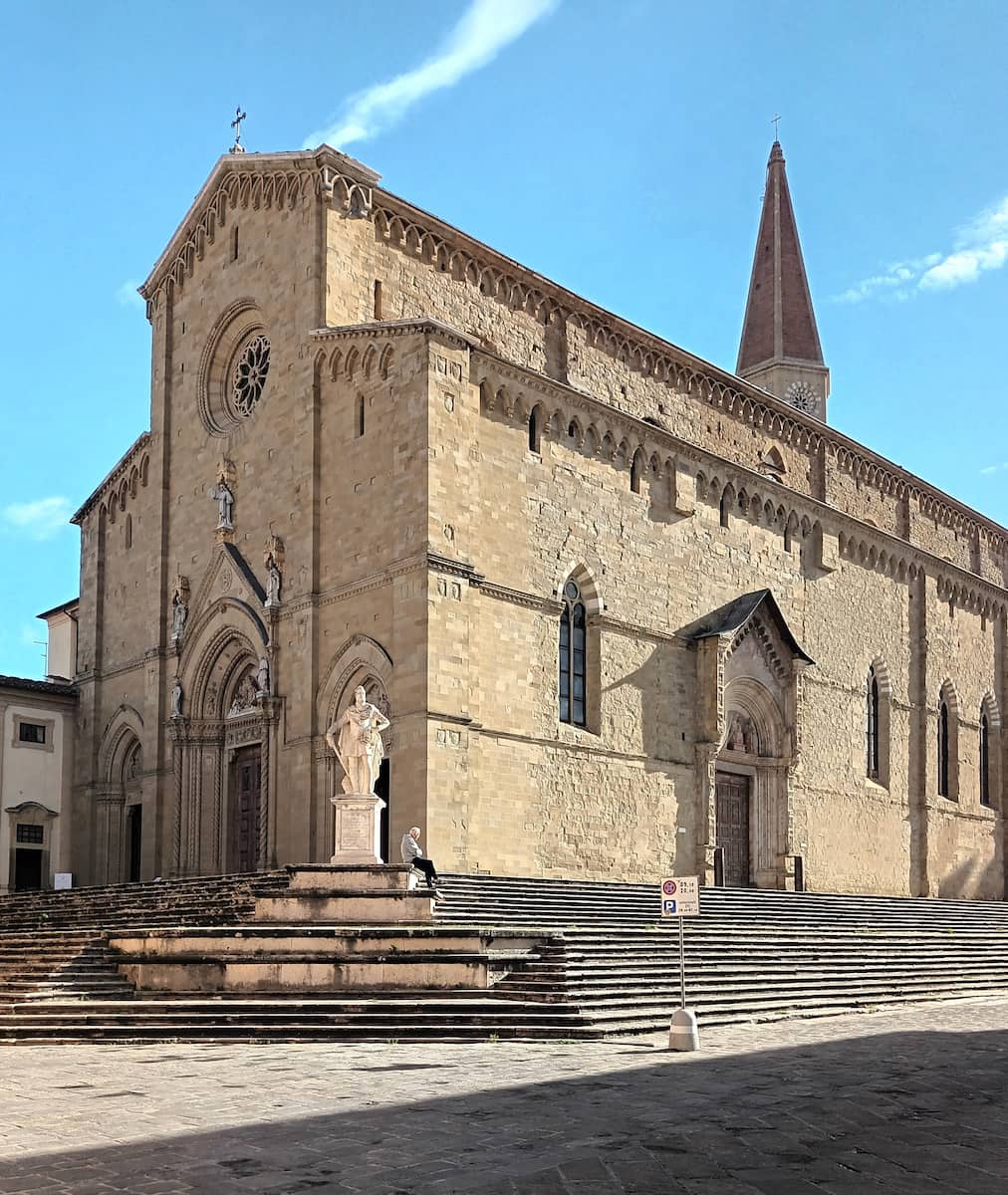
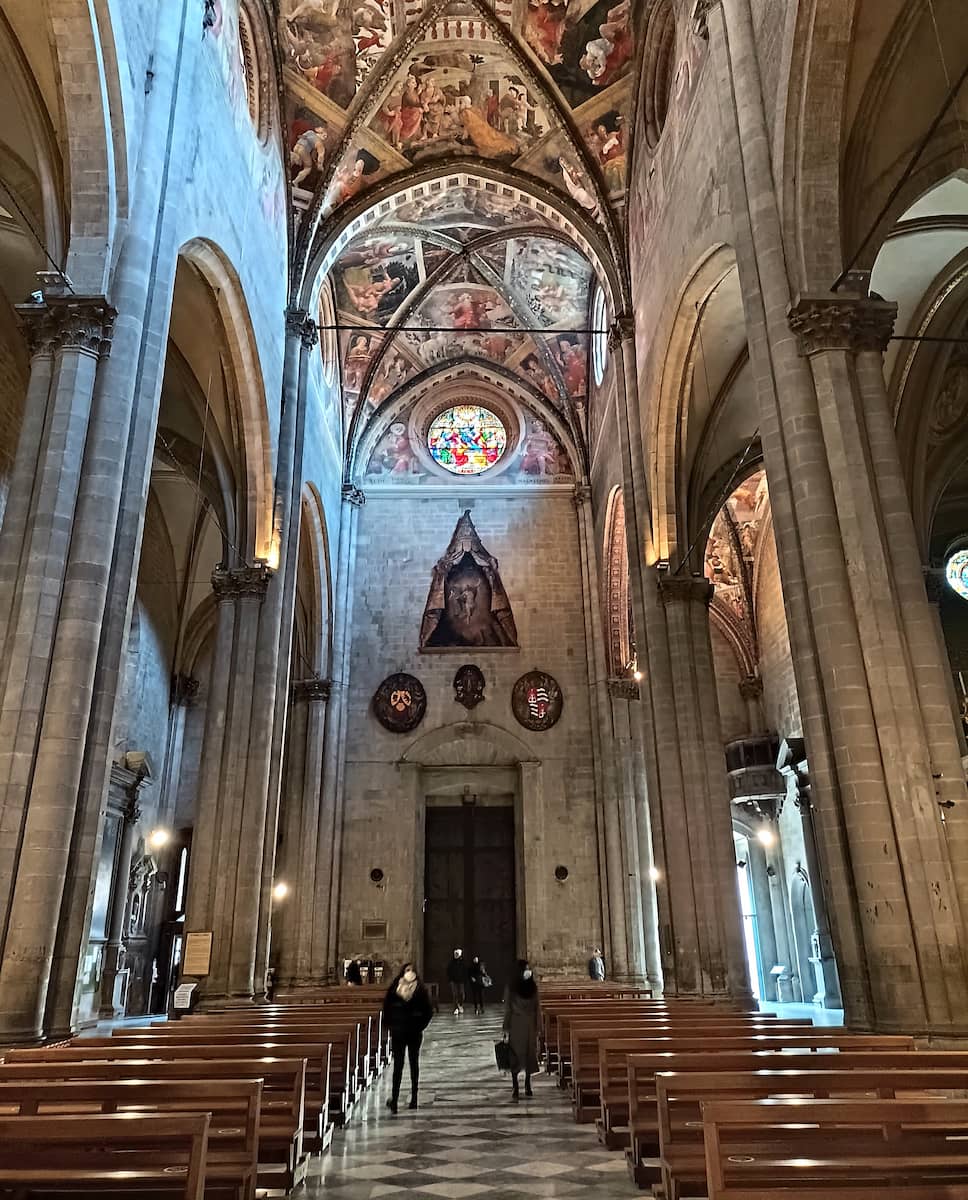
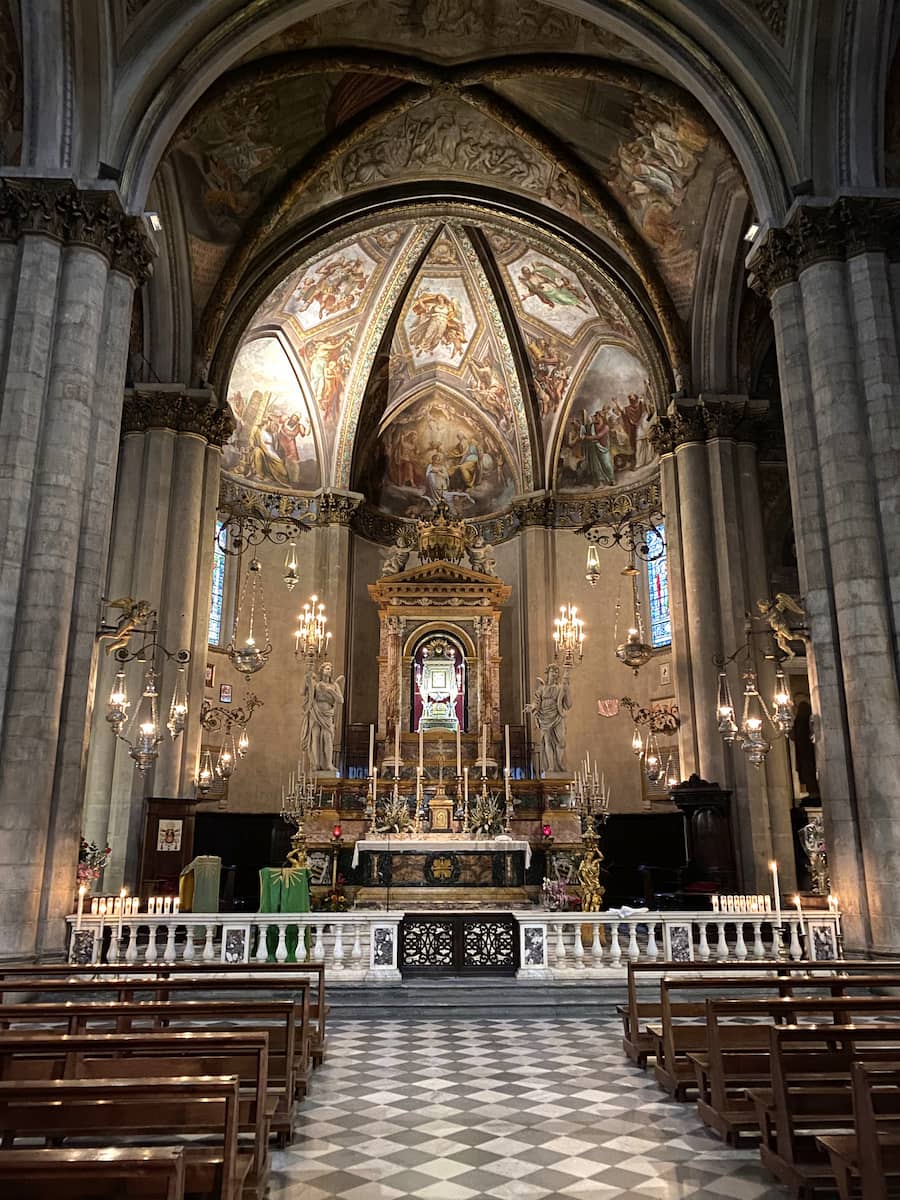
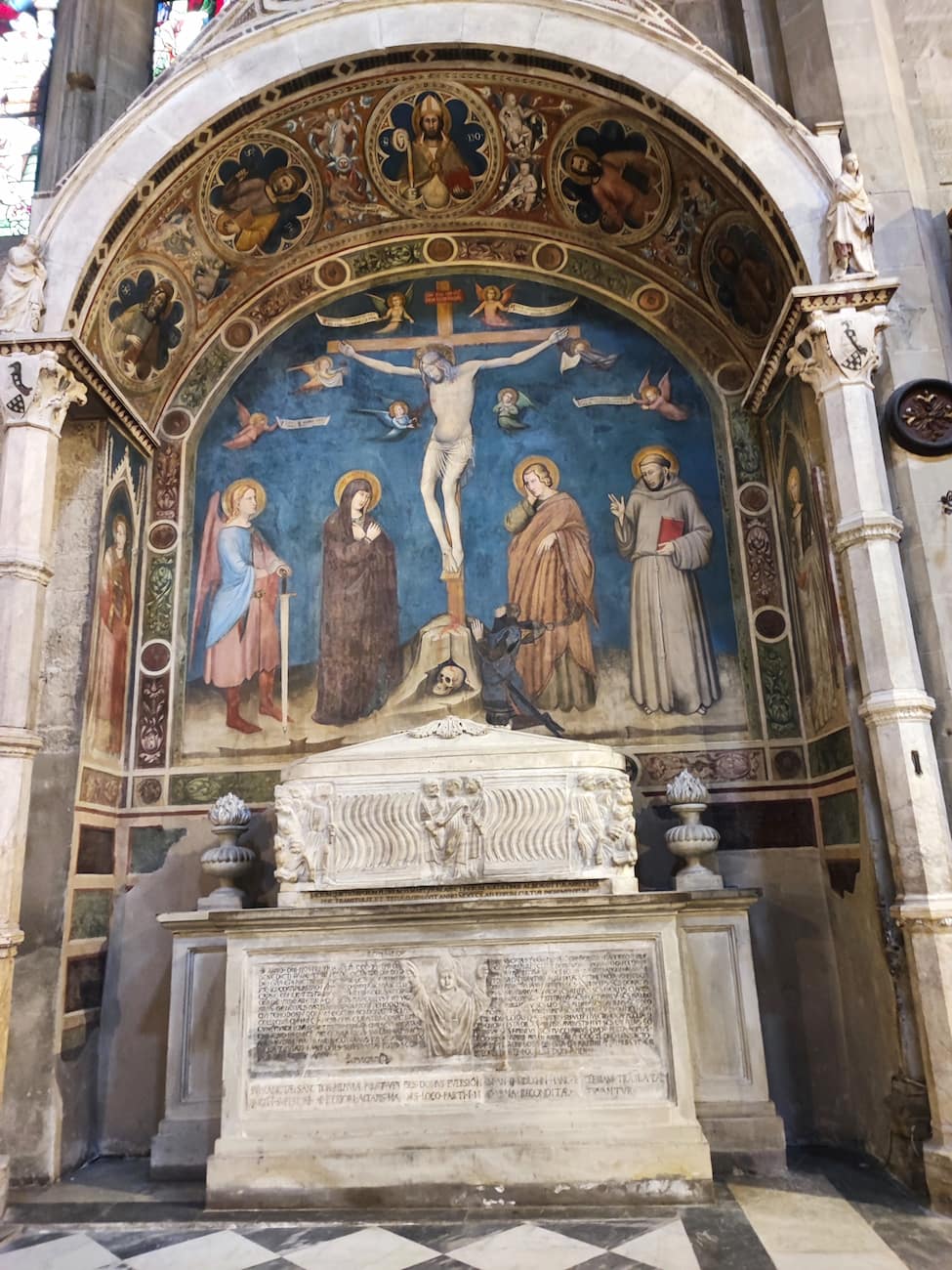
Artistic treasures. Inside, I was mesmerized by the Mary Magdalene fresco by Piero della Francesca and the stunning terracotta works by Andrea della Robbia. The cathedral’s most precious possession is undoubtedly the 13th-century wooden crucifix by Cimabue hanging in the right transept – its expressive detail left me speechless.
Hidden gems. Don’t miss the small chapel housing the relics of San Donato, Arezzo’s patron saint. I discovered the cathedral’s crypt almost by accident – it contains fascinating archaeological remains from earlier churches that once stood on this site, including ancient Roman artifacts.
Lighting magic. The afternoon sunlight streaming through the stained glass windows creates an ethereal atmosphere inside the cathedral. I spent nearly an hour sitting in quiet contemplation watching the colored light patterns shift across the marble floor.
Visitor advice. Entry costs €3 (about $3.30), but it’s free during Mass times. I recommend visiting between 10am-12pm when the light is perfect for viewing the stained glass. Remember to dress modestly – my friend was asked to cover her shoulders with a scarf before entering.
| Feature | Details | Location |
|---|---|---|
| Stained Glass | Guillaume de Marcillat (1516-1524) | Main nave |
| Cimabue Crucifix | 13th century wooden masterpiece | Right transept |
| Mary Magdalene Fresco | Piero della Francesca | Left aisle |
- Look for the intricately carved marble altar by Bernardino Rossellino
- Don’t miss the panoramic views from the cathedral steps
⭐ Best Activities
- Arezzo Cathedral and Diocesan Museum of Sacred Art – Trace the religious history of Arezzo with this audio-guided journey through the impressive Duomo and Diocesan Museum inside Palazzo Vescovile. Admire pristine stained-glass windows and discover ancient treasures in this hilltop cathedral complex.
3. Church of San Francesco
Fresco paradise. The Church of San Francesco houses what I consider Arezzo’s greatest treasure – Piero della Francesca’s breathtaking “Legend of the True Cross” fresco cycle. Completed between 1452-1466, these masterpieces of Renaissance art showcase revolutionary perspective techniques and vibrant colors that have survived centuries.
Emotional impact. Standing before these frescoes, I felt transported through time. The “Dream of Constantine” scene with its innovative night lighting particularly moved me – the way Piero captured the ethereal glow of the angel’s appearance in the darkness feels remarkably modern despite being painted over 550 years ago.
Restoration marvel. The frescoes underwent meticulous restoration in the 1990s, revealing colors and details hidden for centuries. The church itself dates to the late 13th century and features a simple, elegant façade typical of Franciscan architecture – a striking contrast to the artistic complexity within.
Visitor experience. Entry costs €8 (about $9) and includes an audioguide in multiple languages. Timed entry tickets are required during peak season. I arrived at opening time (9am) and had the Bacci Chapel almost to myself for 20 minutes before tour groups arrived.
Photography note. Photography is strictly prohibited inside the Bacci Chapel to protect the frescoes. Instead, I purchased a beautiful art book from the gift shop (€25/$28) that includes detailed close-ups of scenes I wanted to remember.
| Fresco Scene | Description | Location |
|---|---|---|
| Dream of Constantine | Night scene with angel | Left wall |
| Battle of Heraclius | Dynamic war scene | Right wall |
| Queen of Sheba | Meeting King Solomon | Lower register |
- Reserve tickets online during high season (April-October)
- Visit early morning for fewer crowds and better viewing experience
⭐ Best Activities
- Arezzo 3-Hour Private Walking Tour – Enjoy a personalized experience with this private tour of Arezzo’s highlights, including Piazza Grande and the Church of San Francesco. Your private guide will customize the experience to your interests while sharing insights about this charming Tuscan town.
4. Santa Maria della Pieve
Romanesque wonder. Santa Maria della Pieve captivated me with its distinctive façade featuring four tiers of columns, each uniquely different – a true architectural marvel dating back to the 12th century. The church’s iconic bell tower, known locally as the “tower of a hundred holes” due to its many arched openings, dominates Arezzo’s skyline.
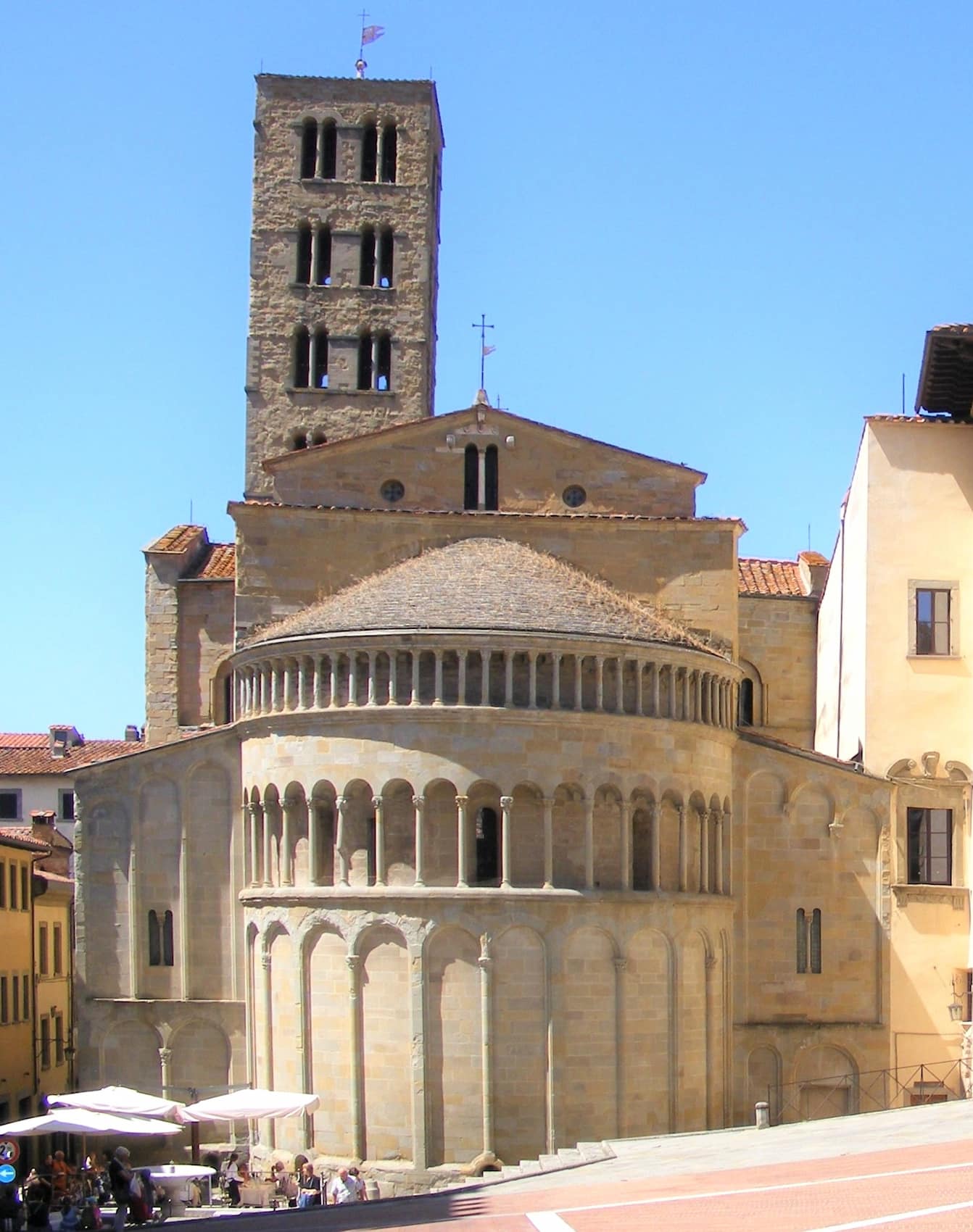
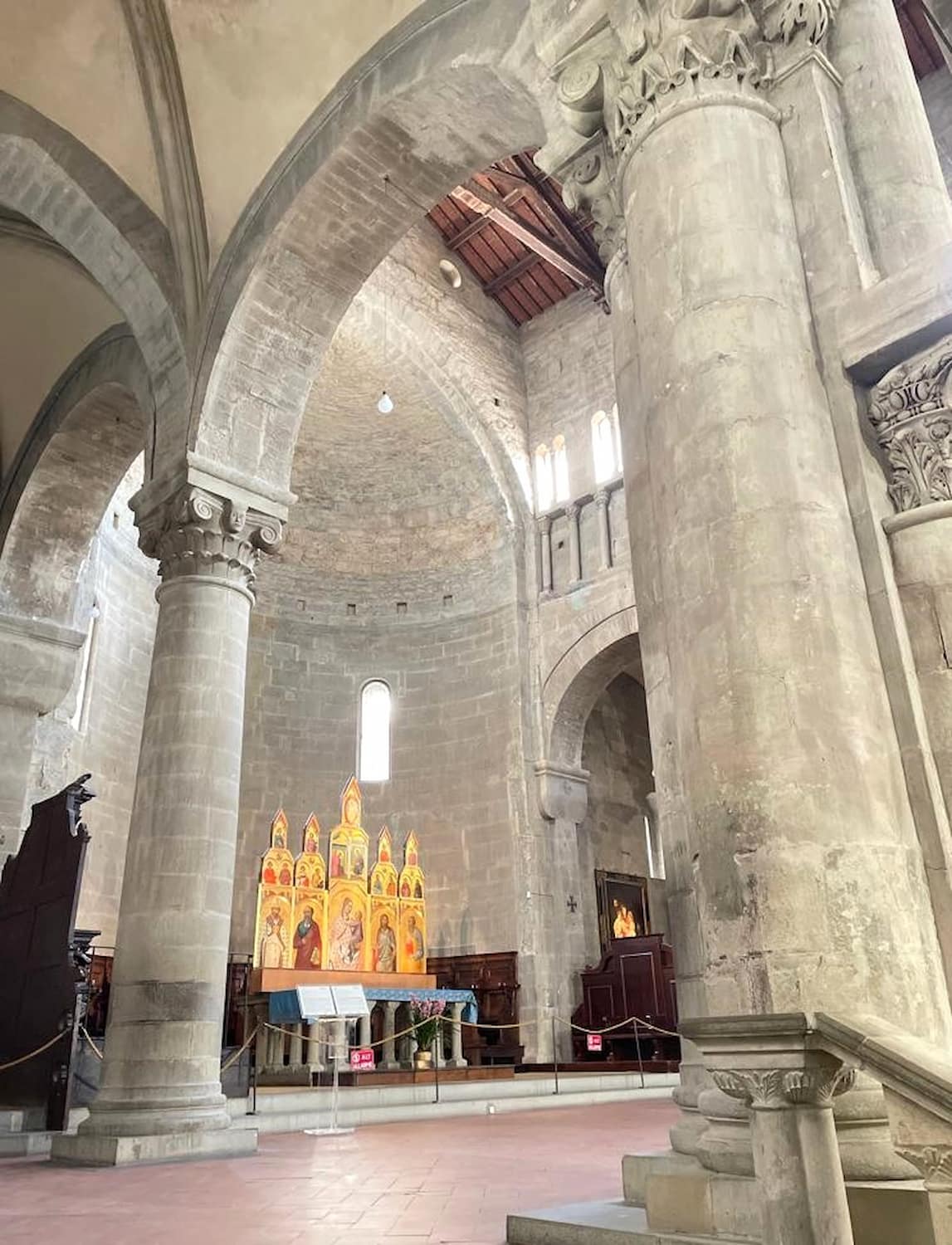
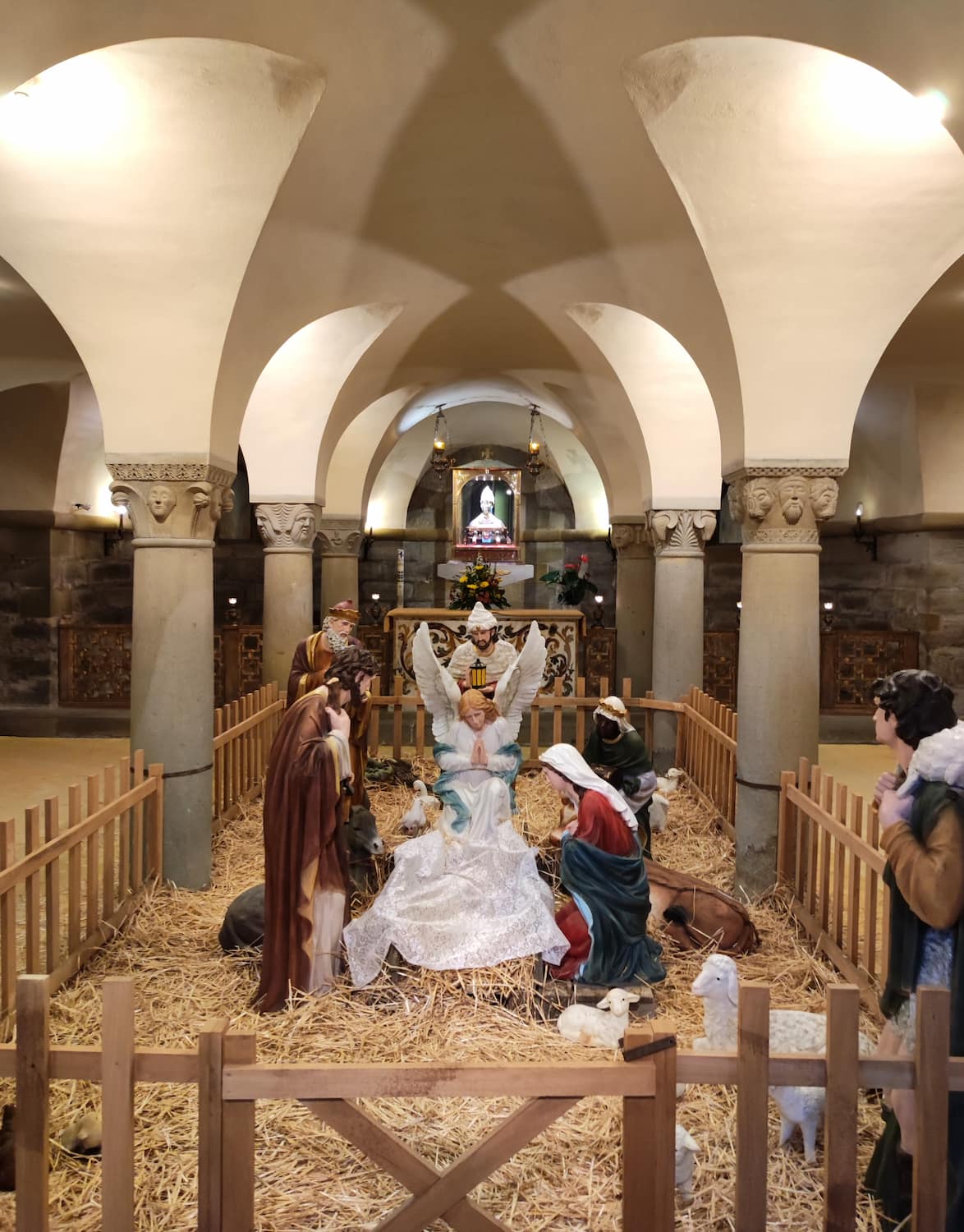
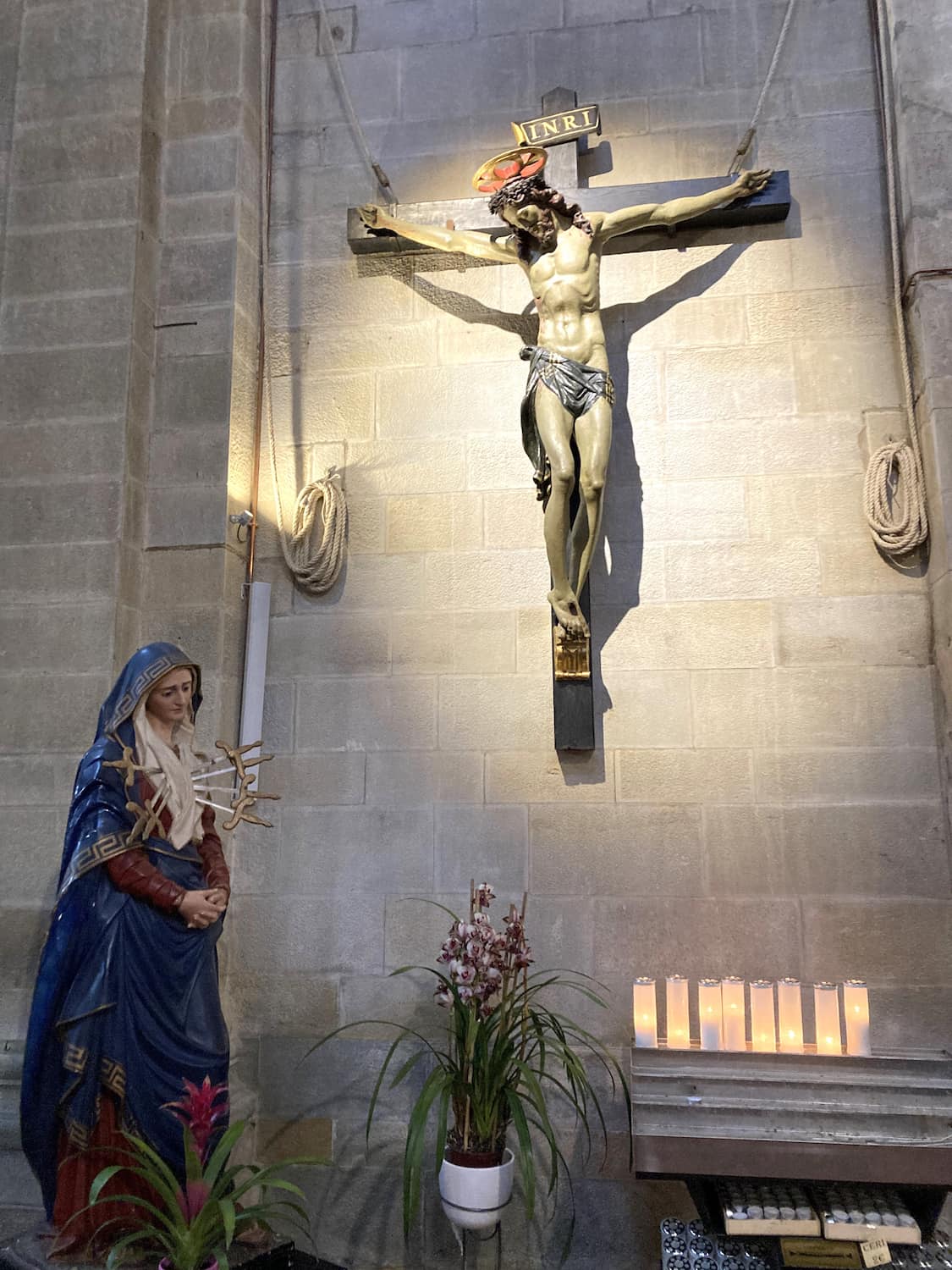
Apse perspective. While most visitors focus on the façade, I found the view from Piazza Grande looking at the church’s apse equally impressive. The warm golden stone glows magnificently in the late afternoon sun, creating a perfect backdrop for photos of the square.
Interior surprises. Inside, the church maintains its Romanesque simplicity with massive stone columns supporting rounded arches. The highlight is the Pietro Lorenzetti polyptych “Madonna and Child with Saints” (1320) – its gold background and vibrant colors provide a striking contrast to the austere stone interior.
Local connection. A friendly elderly caretaker noticed my interest and showed me ancient graffiti carved into one column by medieval pilgrims. He explained that the church stands on the site of Arezzo’s first Christian place of worship from the 5th century.
Practical information. Entry is free, though a €1 donation is appreciated. The church is open daily 10am-6pm except during Mass times. The best lighting for photography is mid-morning when sunlight illuminates the interior through the rose window above the entrance.
| Feature | Period | Description |
|---|---|---|
| Façade | 12th century | Four tiers of unique columns |
| Bell Tower | 13th century | “Tower of a hundred holes” |
| Lorenzetti Polyptych | 1320 | Gothic masterpiece altar painting |
- Look for the ancient baptismal font near the entrance
- Visit during the Saracen Joust when the church becomes part of the medieval festivities
⭐ Best Activities
- Arezzo Guided Walking Tour with Basilica of San Francesco – Discover the magnificent frescoes of Piero della Francesca in the Basilica of San Francesco on this guided walking tour of Arezzo. This tour focuses on the artistic treasures that make Arezzo a must-visit destination for art lovers.
5. Museo Casa Vasari
Artist’s sanctuary. Walking into Giorgio Vasari’s actual home was a surreal experience – this Renaissance polymath (painter, architect, and author of “Lives of the Artists”) decorated his own walls with stunning frescoes between 1542-1548. Each room tells a different story through allegorical paintings celebrating the arts, virtues, and famous figures.
Personal touches. What fascinated me most were the intimate details – Vasari’s study with original furniture, his collection of drawings, and personal letters displayed in glass cases. The house feels lived-in despite being over 450 years old, offering a rare glimpse into a Renaissance artist’s private world.
Ceiling masterpieces. Don’t forget to look up! The ceilings feature some of Vasari’s most impressive work, including the spectacular “Allegory of the Arts” in the Chamber of Apollo. I spent ages with my neck craned upward, discovering new details in these complex compositions.
Hidden courtyard. Most visitors miss the small garden courtyard accessible through a side door. I enjoyed a peaceful moment here, imagining Vasari contemplating his projects in this tranquil space surrounded by classical architectural elements he designed himself.
Visitor essentials. Entry costs €4 (about $4.50) and includes an informative brochure in English. The museum is closed on Mondays. I recommend visiting in the afternoon when the light is perfect for viewing the frescoes in the main reception rooms.
| Room | Theme | Notable Features |
|---|---|---|
| Chamber of Apollo | Arts and Sciences | Ceiling fresco with Apollo |
| Chamber of Fame | Famous Artists | Portraits of Renaissance masters |
| Study | Personal Space | Original furniture and drawings |
- Audio guides available in multiple languages (€3)
- Combined ticket with other Arezzo museums offers good value (€10)
6. Museo Archeologico Mecenate
Etruscan treasures. Housed in a former Benedictine monastery, this archaeological museum opened my eyes to Arezzo’s ancient past as the important Etruscan city of Aritim. The collection of Etruscan bronzes, particularly the stunning Chimera (a replica of the original in Florence), showcases the extraordinary metalworking skills of these pre-Roman inhabitants.
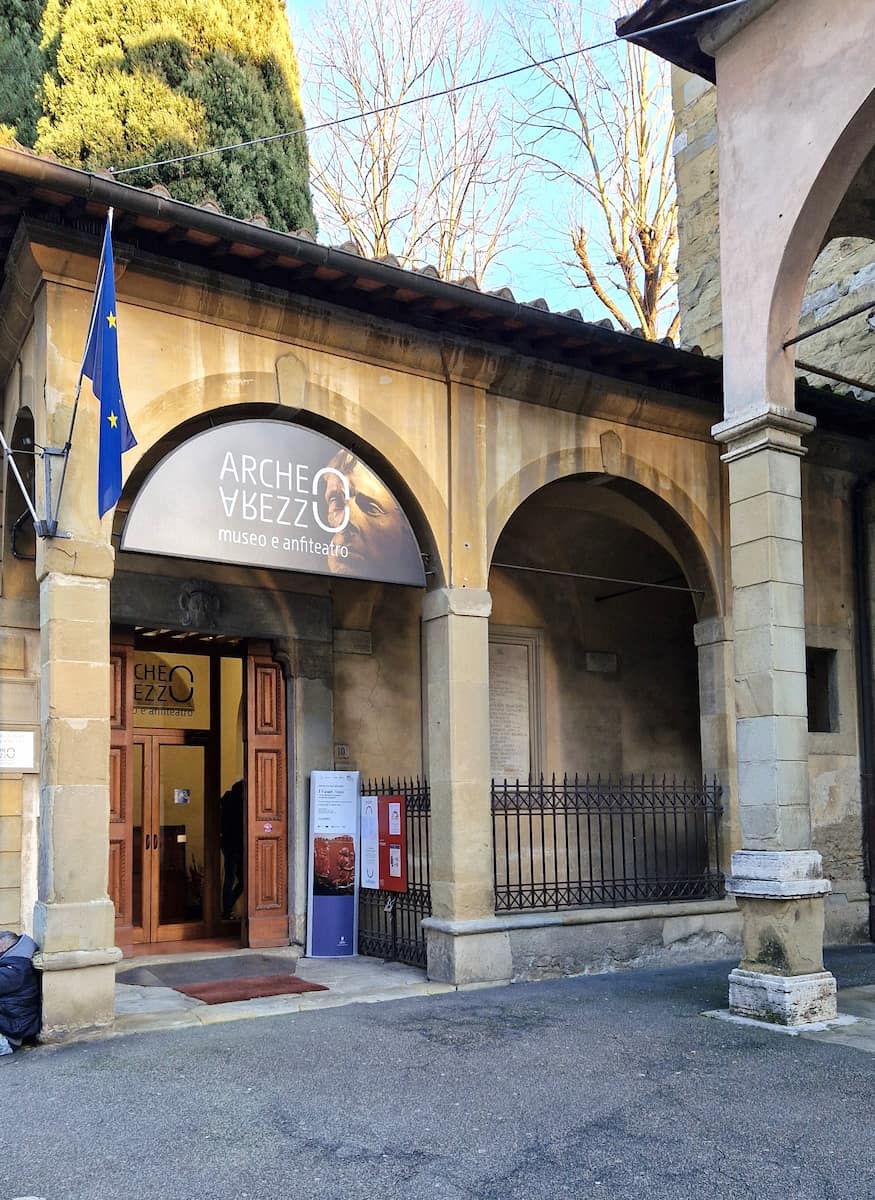
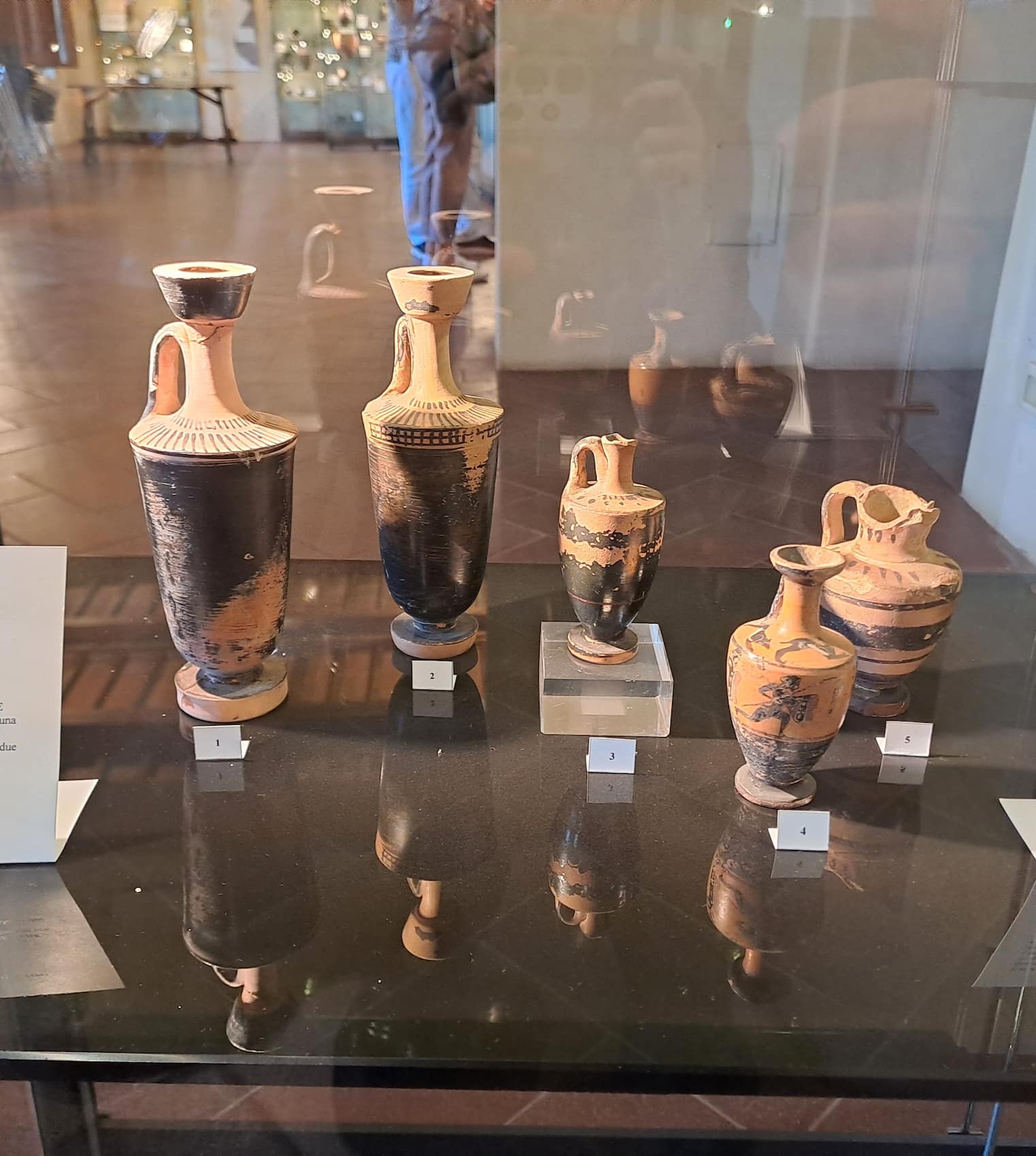
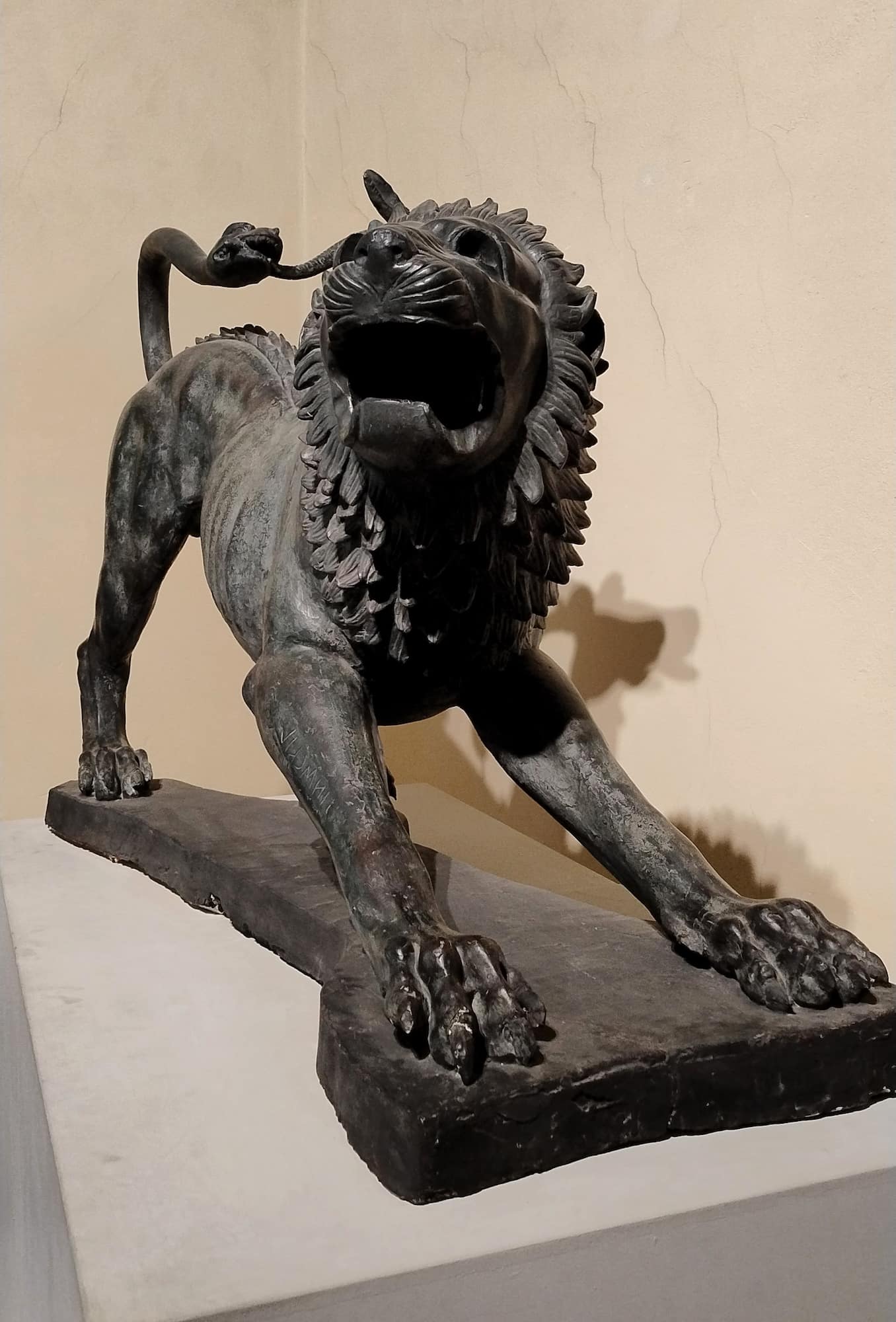
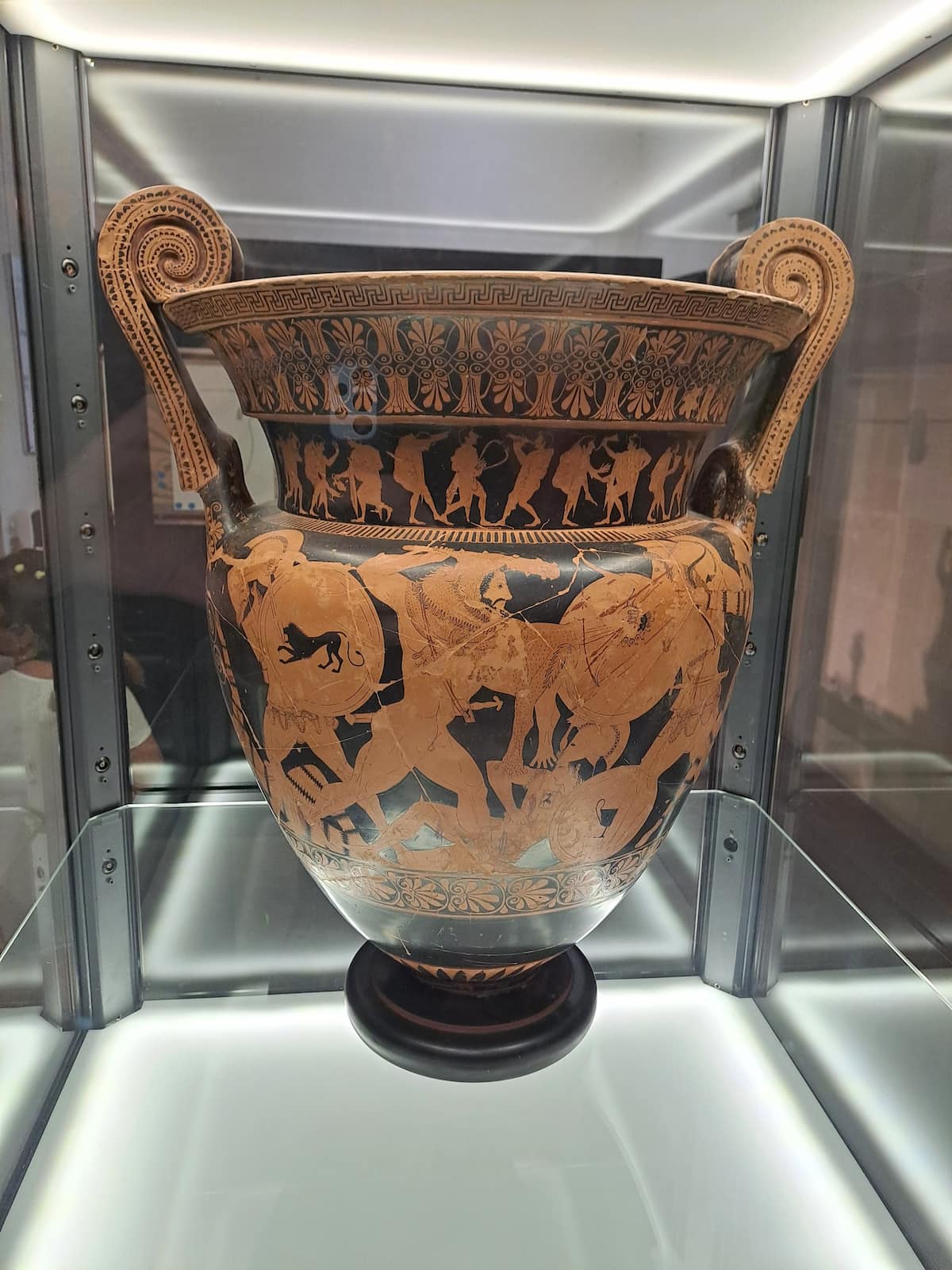
Roman Arezzo. I was fascinated by the displays of “coral red” pottery (terra sigillata) that made Roman Arezzo famous throughout the ancient world. These distinctive ceramics with their glossy red finish and intricate relief decorations were exported across the Roman Empire – seeing the actual workshops where they were produced was a highlight.
Amphitheater connection. The museum provides context for the nearby Roman amphitheater ruins with models showing how this massive structure (second largest in Tuscany after Florence) would have looked during imperial times. Interactive displays explain how gladiatorial contests and public spectacles were conducted.
Unexpected finds. In a quiet corner, I discovered a collection of ancient surgical instruments that revealed the sophisticated medical knowledge of Roman physicians. The precision of these bronze tools from nearly 2,000 years ago is remarkable.
Visitor information. Entry costs €6 (about $6.70) and the museum is open Tuesday-Sunday 10am-6pm. I found the English explanations somewhat limited, so it’s worth paying €3 extra for the audio guide to fully appreciate the collection’s significance.
| Collection | Period | Highlights |
|---|---|---|
| Etruscan | 8th-3rd century BCE | Bronze figurines, funerary urns |
| Roman | 1st century BCE-4th CE | Terra sigillata pottery, glassware |
| Medieval | 5th-14th century | Stone carvings, early Christian artifacts |
- Combined ticket available with Roman Amphitheater (€8)
- Small but excellent gift shop with replica Etruscan jewelry
7. Tenuta di Frassineto (Winery)
Tuscan wine paradise. Just 15 minutes from Arezzo’s center, I discovered Tenuta di Frassineto, a stunning winery nestled among rolling hills and cypress trees. This 200-hectare estate produces exceptional wines including Chianti, Syrah, and their signature Maestro di Frassineto Super Tuscan blend.
Tasting experience. My guided tasting included five wines paired with local pecorino cheese, salumi, and the estate’s own olive oil. The sommelier explained each wine’s production process while we sat on a terrace overlooking vineyards bathed in golden light – a quintessential Tuscan moment I’ll never forget.
Sustainable practices. What impressed me most was their commitment to sustainability. The winery uses solar power, practices organic farming methods, and has reduced water usage by 40% through innovative irrigation systems. They even showed me their insect “hotels” that promote biodiversity among the vines.
Beyond wine. The estate offers more than just wine tasting – I joined a cooking class where we made pici pasta from scratch using ancient grain flours grown on the property. We then enjoyed our creation paired with their Riserva Chianti for a truly farm-to-table experience.
Visitor details. Tours and tastings start at €25 (about $28) per person and require reservation at least 24 hours in advance. The estate is open year-round, but I recommend visiting during harvest (September-October) when you can witness the grape picking and processing.
| Wine | Style | Price Range |
|---|---|---|
| Chianti Classico | DOCG red | €15-30 ($17-33) |
| Maestro di Frassineto | Super Tuscan | €45 ($50) |
| Syrah Riserva | Single varietal | €35 ($39) |
- Transportation options: Taxi from Arezzo (€25 each way) or rental bikes
- English, German and French tours available daily at 11am and 3pm
8. Parco della Fortezza Medicea
Hilltop haven. The Medici Fortress Park crowns Arezzo’s highest point, offering spectacular 360-degree panoramic views over the city’s terracotta rooftops and the surrounding Tuscan countryside. I spent a magical evening here watching the sunset paint the landscape in golden hues while locals walked their dogs and joggers circled the ancient walls.
Historical layers. Built in the 16th century by Grand Duke Cosimo I de’ Medici, the fortress incorporated parts of earlier medieval structures. While exploring, I discovered archaeological remains dating back to Etruscan times, revealing over 2,500 years of continuous habitation on this strategic hilltop.
Green escape. What surprised me most was finding such a peaceful green space so close to the city center. Ancient oak trees provide welcome shade during hot summer days, and I enjoyed a picnic on one of many benches scattered throughout the park. The aromatic herbs growing along the pathways release their scent when brushed against.
Family-friendly. I watched local families enjoying the children’s playground and open grassy areas perfect for games. The gentle slopes and wide pathways make this an ideal spot for all ages, including those with limited mobility – though reaching the highest viewpoints requires climbing some steps.
Visitor information. The park is open daily from 8am until sunset and entrance is completely free. I recommend visiting either early morning or late afternoon to avoid the midday heat and capture the best light for photos. The fortress is just a 10-minute uphill walk from Piazza Grande.
| Feature | Location | Best Time |
|---|---|---|
| Panoramic Viewpoint | Northeast corner | Sunset |
| Archaeological Area | Central section | Morning (good light) |
| Children’s Playground | Southern entrance | Afternoon shade |
- Water fountains available near both entrances
- No cafés inside, so bring your own refreshments
- Regular outdoor concerts and events during summer months
⭐ Best Activities
- Arezzo Guided Walking Tour with Piazza Grande – Explore Arezzo’s magnificent main square, Piazza Grande, and the surrounding medieval streets with an expert local guide. Learn about the square’s unique trapezoid shape and the architectural mix spanning different historical periods.
Things to do in Arezzo with Kids
1. Kid-friendly Walking Tours
Family adventures. Arezzo offers specialized walking tours designed specifically for families with children. I joined a 2.5-hour private guided tour that began in the picturesque Piazza Grande, where our enthusiastic guide immediately captured the kids’ attention with stories about medieval life and architecture. The tour continued past the impressive Medici Fortress and Arezzo Cathedral, with the guide explaining historical facts in a way that fascinated rather than bored the younger participants.
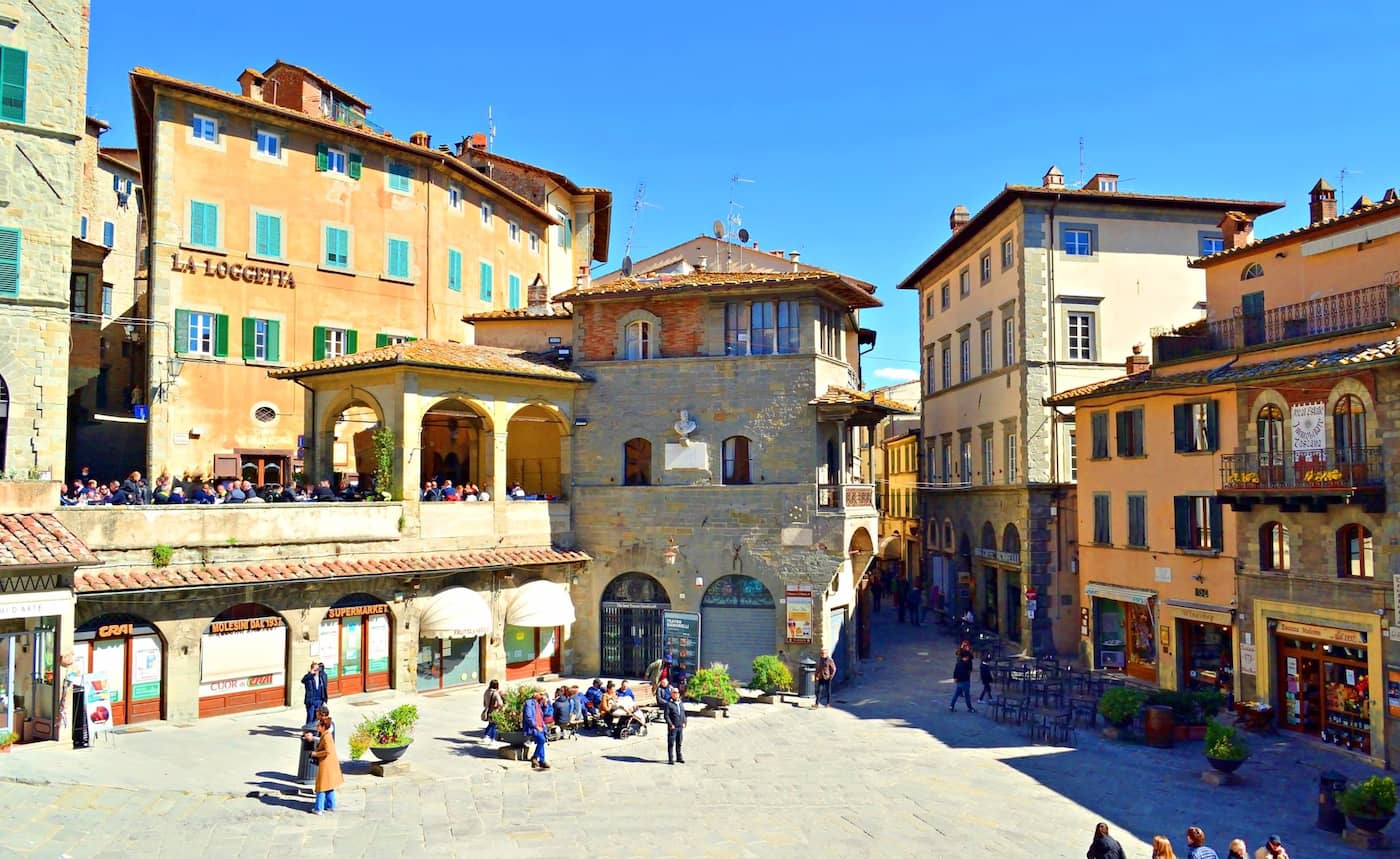
Film magic. One of the highlights was discovering filming locations from the beloved movie “La Vita è Bella” scattered throughout the city. The children in our group were thrilled to recognize scenes from this classic film, adding an element of cinematic treasure hunting to our walk through Arezzo’s historic center.
Practical details. These specialized family tours cost around €251 per adult, with children often receiving discounts. Tours typically last 2-3 hours and are available in English. I recommend booking in advance, especially during peak tourist season (June-September). The tours are designed for all fitness levels, making them accessible for families with children of various ages.
Local tip. Ask your guide to include some interactive elements – our guide had the children count different architectural features and awarded small prizes, keeping them engaged throughout the tour.
Best time. Morning tours (starting around 10am) offer cooler temperatures in summer and better lighting for photos of Arezzo’s beautiful architecture.
| Tour Feature | Details | Notes |
|---|---|---|
| Duration | 2.5 hours | Comfortable pace for children |
| Starting Point | Piazza Grande | Central meeting location |
| Highlights | Film locations, Cathedral | External views of monuments |
| Price | €251 per adult | Family discounts available |
2. Cooking Classes for Families
Hands-on fun. Cooking classes in Arezzo offer a delightful way for families to bond while learning authentic Tuscan culinary traditions. I participated in a pasta-making class where children as young as six were rolling out dough and crafting colorful tagliatelle using natural ingredients like beetroot, spinach, and cacao to create vibrant hues.
Colorful creations. What made our experience special was learning to make rainbow-colored pasta – the children were fascinated by how natural ingredients transformed plain dough into vivid colors. We created ravioli with seasonal fillings and simple sauces that even picky eaters enjoyed sampling.
Pricing and booking. Family cooking classes range from €64-208 per person, with most lasting 3-4 hours. Classes typically include all ingredients, equipment, and the meal you prepare. Advance booking is essential, especially for the more popular classes in unique settings like medieval villages.
Dietary accommodations. I was impressed that our instructor easily adapted recipes for vegetarian, vegan, and gluten-free participants, ensuring everyone could participate fully regardless of dietary restrictions.
| Class Type | Duration | Price Range | Location |
|---|---|---|---|
| Pasta Making | 3 hours | €64-139 | Arezzo city center |
| Full Tuscan Menu | 4 hours | €139-208 | Private medieval village |
| Pizza & Tiramisu | 3 hours | €163 | Countryside setting |
⭐ Best Tours
- Traditional Home Cooking Experience in Bologna – Learn authentic Italian cooking techniques in a traditional home setting in Bologna. This hands-on experience allows you to prepare classic dishes under the guidance of a local host before enjoying your creations together.
- Private Pasta and Tiramisu Class at a Cesarina's Home with Tasting in Arezzo – Join a local Cesarina in their home for an intimate cooking class where you’ll learn to make fresh pasta and classic tiramisu from scratch. This private experience includes tasting your creations paired with local wines.
3. Interactive Museum Exhibits
Roman discoveries. The Archaeological Museum of Gaius Mecenas and adjacent Roman Amphitheatre offer fascinating interactive exhibits that captivate children’s imagination. My nephew was enthralled by the touch screens that allowed him to “excavate” virtual artifacts and learn about ancient Roman life in Arezzo through games and puzzles.
Joust excitement. The Museum of the Colours of the Joust (Museo dei Colori della Giostra) was an unexpected highlight of our family visit. Created in 2016, this interactive museum is dedicated to Arezzo’s traditional Saracen Joust, a medieval tournament still held twice yearly in Piazza Grande. The children were mesmerized by the immersive projections, virtual reality experiences, and touch screens that brought the tournament’s history to life.
Hands-on history. What makes these museums special for families is their focus on engagement rather than passive observation. At the Joust Museum, my daughter tried on replica medieval costumes and practiced “jousting” with child-friendly equipment, creating memories far more vivid than simply viewing artifacts in display cases.
Visitor information. The Archaeological Museum and Amphitheatre combo ticket costs €8 per adult, with reduced prices for children. The Museum of the Colours of the Joust is located on the ground floor of Palazzo Comunale and offers a truly immersive experience of Arezzo’s medieval heritage through digital and interactive technologies.
Planning tip. I recommend visiting these museums in the morning when children are fresh and attentive, then following with outdoor activities in the afternoon to balance the day.
| Museum | Interactive Features | Best For Ages | Location |
|---|---|---|---|
| Archaeological Museum | Touch screens, virtual excavations | 7-14 | City center |
| Colours of the Joust | VR experiences, costume try-on | 5-12 | Palazzo Comunale |
| Medici Fortress | Archaeological findings, art exhibits | 8-16 | Hilltop location |
Free Things to Do in Arezzo
1. Medieval Streets
Atmospheric wandering. One of my favorite cost-free activities in Arezzo was simply getting lost in its enchanting medieval streets. The narrow alleyways branching off from Corso Italia reveal a maze of well-preserved buildings, hidden courtyards, and unexpected viewpoints that transport you back centuries.
Architectural treasures. As I wandered, I discovered countless architectural details that tell Arezzo’s story – ancient doorways with intricate carvings, weathered stone arches, and tiny shrines tucked into building corners. The streets around Piazza Grande offer particularly rich examples of medieval architecture, with buildings dating back to the 13th century.
Photography paradise. The changing light throughout the day creates different moods in these ancient passageways. I found early morning (around 8am) offered beautiful soft light and empty streets for photography, while late afternoon brought a golden glow to the honey-colored stone buildings.
Local connections. During my explorations, I struck up conversations with shopkeepers and residents who shared fascinating stories about their historic buildings. An elderly gentleman showed me medieval graffiti carved into his doorway by pilgrims centuries ago – the kind of discovery you’d never find in a guidebook.
Walking route. I recommend starting at Piazza Grande and following Via dei Pileati toward the cathedral, then winding your way down through the medieval quarter via Via Cavour and the surrounding smaller streets.
2. Public Squares and Viewpoints
Piazza Grande. This magnificent sloping square is Arezzo’s heart and completely free to enjoy. I spent hours here admiring the architectural mix spanning different periods – from medieval stone houses to Renaissance loggias. The square transforms throughout the day as light shifts across its distinctive trapezoid shape.
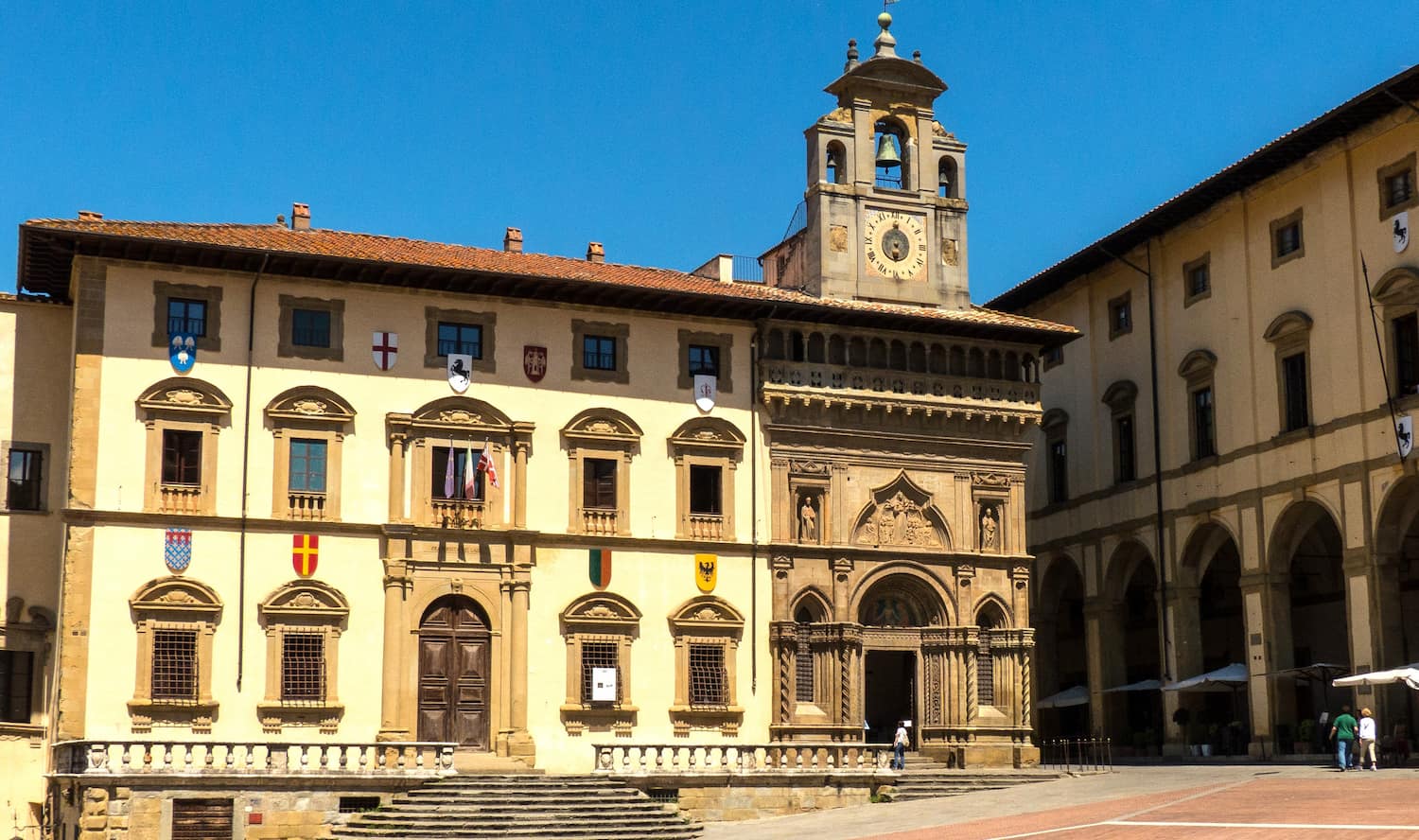
Palazzo della Fraternita viewpoint. For just €5, you can climb to the upper floor of the Palazzo della Fraternita dei Laici museum on Piazza Grande for spectacular views over Arezzo’s rooftops. However, I discovered you can enjoy similar views for free from several public terraces around the city.
Cathedral viewpoint. The area in front of the cathedral offers breathtaking panoramas across the city and surrounding countryside without any entrance fee. I watched a magnificent sunset here as the terracotta rooftops of Arezzo glowed in the fading light.
Hidden gems. I stumbled upon a lesser-known viewpoint behind San Francesco Church that offers a perfect perspective of the church’s simple Gothic architecture against the backdrop of distant hills – completely free and rarely mentioned in guidebooks.
Photography tip. Visit these viewpoints during the “blue hour” just after sunset when the city lights begin to twinkle against the deepening blue sky – this creates magical photos that capture Arezzo’s medieval character.
3. Parks and Panoramic Viewpoints
Medici Park. This expansive green space surrounding the 16th-century fortress offers some of Arezzo’s most spectacular views completely free of charge. I spent a peaceful morning walking the perimeter walls, gazing across the city’s terracotta rooftops to the rolling Tuscan countryside beyond.
Prato Park. This central green space becomes magical during Christmas when it transforms into the “Bosco delle Emozioni” (Forest of Emotions) with over 640,000 LED lights creating a sustainable yet spectacular display. Even outside the holiday season, it’s a lovely spot for a picnic or relaxing stroll.
Il Duomo gardens. Few visitors discover the small public gardens beside Arezzo Cathedral, which offer tranquil seating areas and panoramic views without any entrance fee. I enjoyed a simple lunch here, surrounded by fragrant Mediterranean plants and birdsong.
Seasonal beauty. These green spaces change dramatically with the seasons – spring brings wildflowers, summer offers shade under ancient trees, autumn creates a tapestry of golden and russet leaves, and winter sometimes dusts the landscape with snow, creating a magical atmosphere.
Seasonal Activities in Arezzo
Christmas in Arezzo
Magical illuminations. Christmas transforms Arezzo into a wonderland of lights and festivities. The highlight is the “Bosco delle Emozioni” (Forest of Emotions) at Prato park, where I wandered through 8,000 square meters adorned with over 640,000 LED lights creating magical illuminated pathways and displays.
Fortress festivities. The monumental Medici Fortress hosts “Natale in Fortezza,” where Santa Claus resides until December 24. I was surprised by the scale of this 10,000-square-meter space filled with festive activities – children can meet Santa and his elves, enjoy games, visit a planetarium, and explore the charming Lemax Village display.
Traditional markets. Piazza Grande transforms into a traditional Christmas Market with wooden chalets reminiscent of a Tyrolean village. I spent hours browsing artisanal products and sampling holiday treats like mulled wine and roasted chestnuts. For unique gifts, the “Artigiani di Natale” market in the Chiostro della Biblioteca (December 5-29) showcases exceptional local craftsmanship.
Nativity scenes. Various Arezzo churches display unique nativity scenes, including life-size replicas inspired by Giotto’s frescoes in Assisi. Walking between these displays offers a peaceful counterpoint to the more commercial aspects of the season.
Summer Festivals and Events
Saracen Joust. The highlight of Arezzo’s summer calendar is undoubtedly the Saracen Joust (Giostra del Saracino), held on the penultimate Saturday of June and the first Sunday of September. I witnessed this spectacular medieval tournament in Piazza Grande where four neighborhoods compete for the Golden Lance in a tradition dating back centuries.
Colorful pageantry. What impressed me most about the Joust was the magnificent procession of more than 400 participants in authentic medieval costumes, accompanied by trumpet fanfares, drumrolls, and incredible flag-throwing displays. The atmosphere in the square was electric as local residents passionately supported their neighborhood champions.
Musical evenings. Throughout summer, Arezzo hosts numerous open-air concerts in historic settings like Piazza Grande and the Roman Amphitheatre. I attended a classical performance under the stars at the amphitheatre – the ancient stones created remarkable acoustics that enhanced the music.
Ticket information. The Saracen Joust tickets range from €20-40 (€18-36) depending on seating location. I recommend booking well in advance as this popular event sells out quickly, especially for the better seats with clear views of the jousting action.
Insider tip. For those unable to secure tickets to the Joust itself, watching the afternoon parade through the city streets offers a free taste of the pageantry and medieval atmosphere.
Spring Blooms
Fortress gardens. Spring transforms the grounds around the Medici Fortress with colorful wildflowers and blossoming trees. I spent a peaceful morning walking the pathways as butterflies flitted between purple wisteria and fragrant herbs growing along the ancient walls.
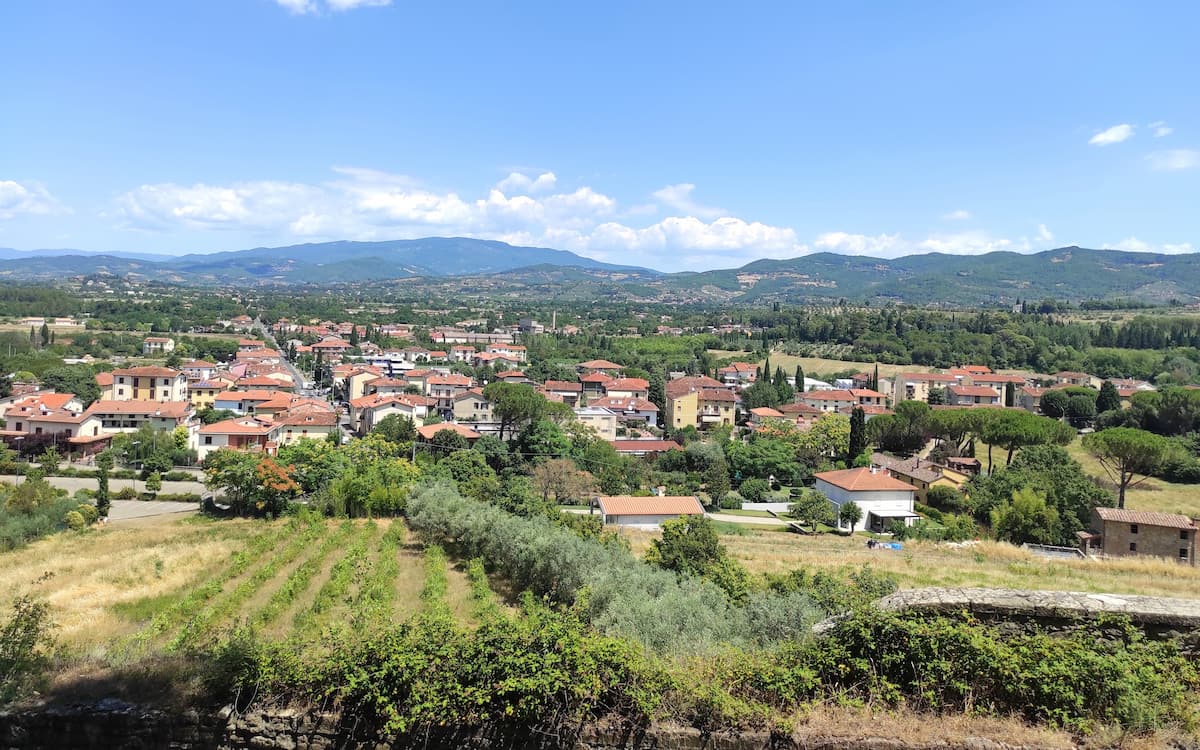
Countryside excursions. Spring is the perfect time to explore the rolling hills surrounding Arezzo, which burst into color with poppies, sunflowers, and other wildflowers. I rented a bicycle and followed quiet country roads through this spectacular natural display.
Cathedral gardens. The small gardens beside Arezzo Cathedral come alive in spring with carefully tended flower beds and blossoming fruit trees. This tranquil spot offers a perfect respite from sightseeing, with benches placed to enjoy both the flowers and panoramic views.
Photography opportunities. The combination of medieval stone architecture against the backdrop of spring blooms creates stunning photo opportunities. I found early morning light (7-9am) ideal for capturing this beautiful contrast without crowds.
Seasonal produce. Spring also brings vibrant farmers’ markets selling the season’s first produce. I enjoyed sampling fresh strawberries, young pecorino cheese, and early vegetables at the weekly market – a delicious way to experience local flavors.
Autumn Foliage Walks
Casentino colors. Autumn paints the landscapes around Arezzo in rich golds, ambers, and russets. I took a memorable drive through the Casentino Valley in late October when the ancient forests were ablaze with fall colors – the contrast against medieval stone villages was breathtaking.
Vineyard landscapes. The vineyards surrounding Arezzo turn spectacular shades of gold and crimson in autumn. I joined a wine tasting tour that included gentle walks through these colorful landscapes, learning about the harvest while enjoying the seasonal beauty.
Urban autumn. Even within Arezzo itself, the tree-lined avenues and parks transform with autumn colors. My favorite autumn walk follows the tree-lined path around the Medici Fortress walls, where falling leaves create a golden carpet and views extend across the countryside’s patchwork of autumnal hues.
Seasonal events. Autumn brings harvest festivals and food events celebrating seasonal specialties like truffles, mushrooms, chestnuts, and new olive oil. I participated in a chestnut festival in a nearby village that included woodland walks to see the ancient chestnut groves in their autumn splendor.
Weather note. Autumn weather can be unpredictable, so I recommend bringing layers and a light raincoat. Even on misty days, the autumn colors seem to glow with an inner light that creates a magical atmosphere.
Day Trips from Arezzo
1. Cortona
Hilltop charm. Just 32 kilometers south of Arezzo, Cortona captivated me with its perfectly preserved medieval character and spectacular views across the Val di Chiana. Made famous by Frances Mayes’ book “Under the Tuscan Sun,” this hilltop town offers a maze of ancient streets and impressive architecture that feels like stepping back in time.
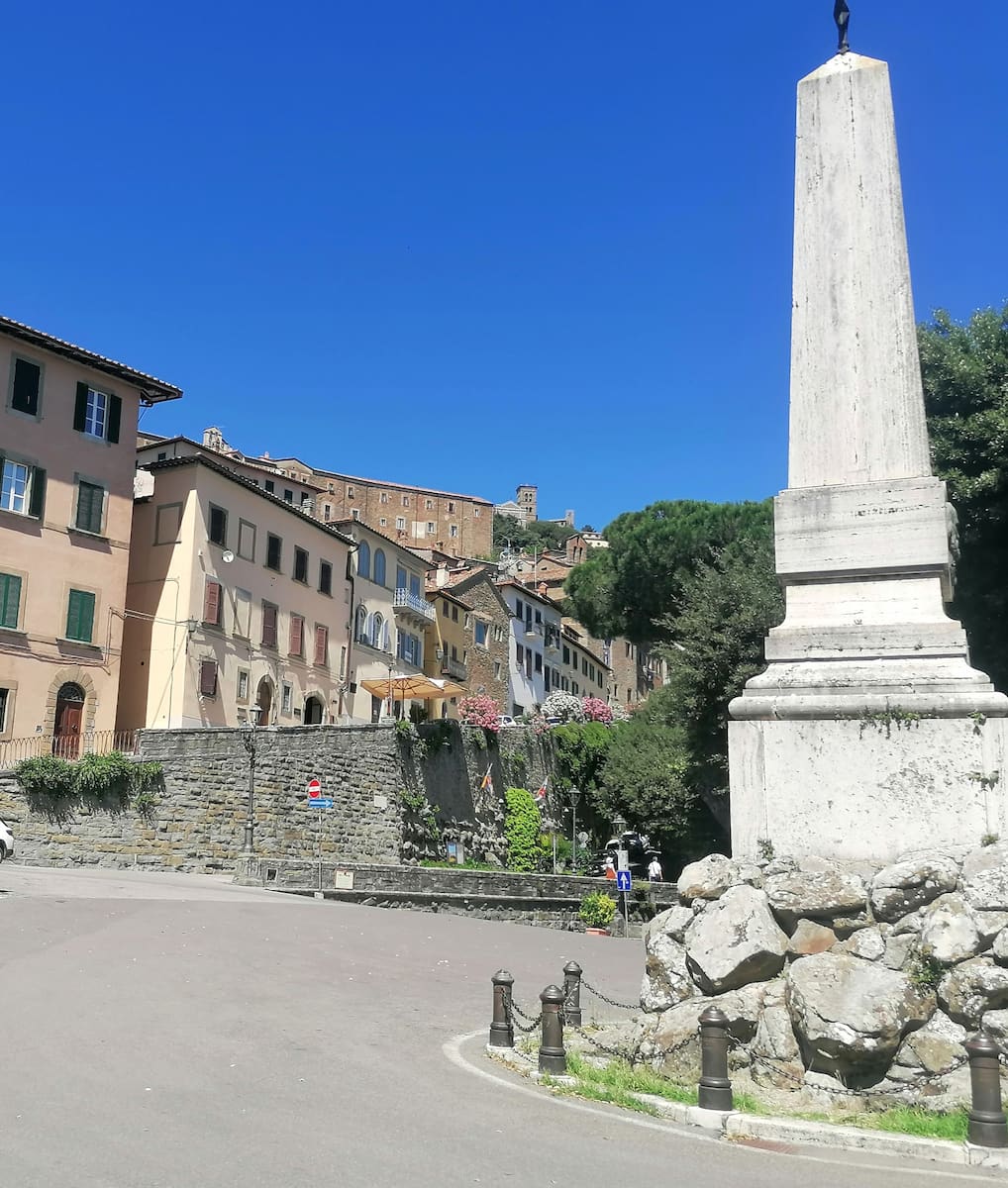
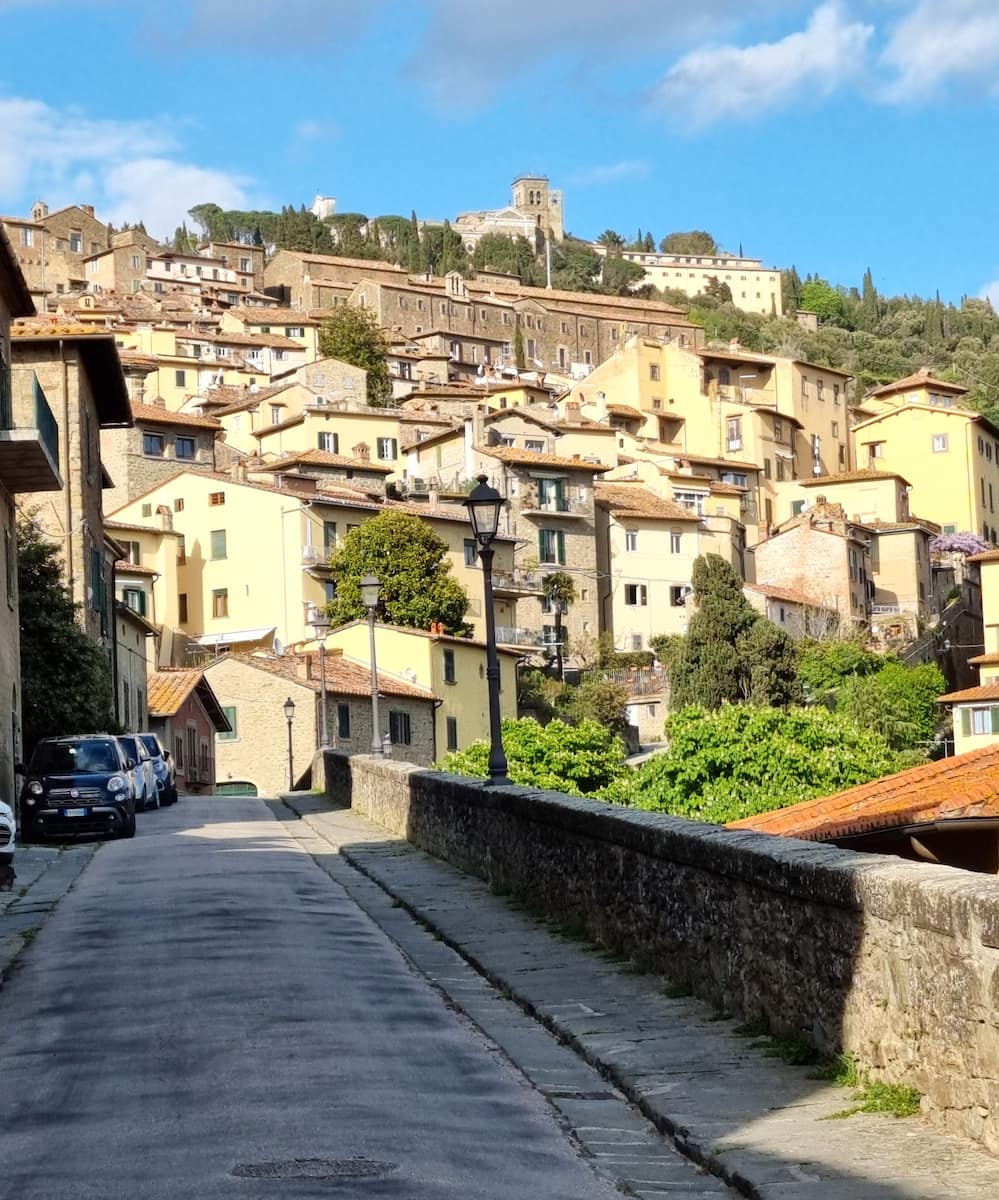
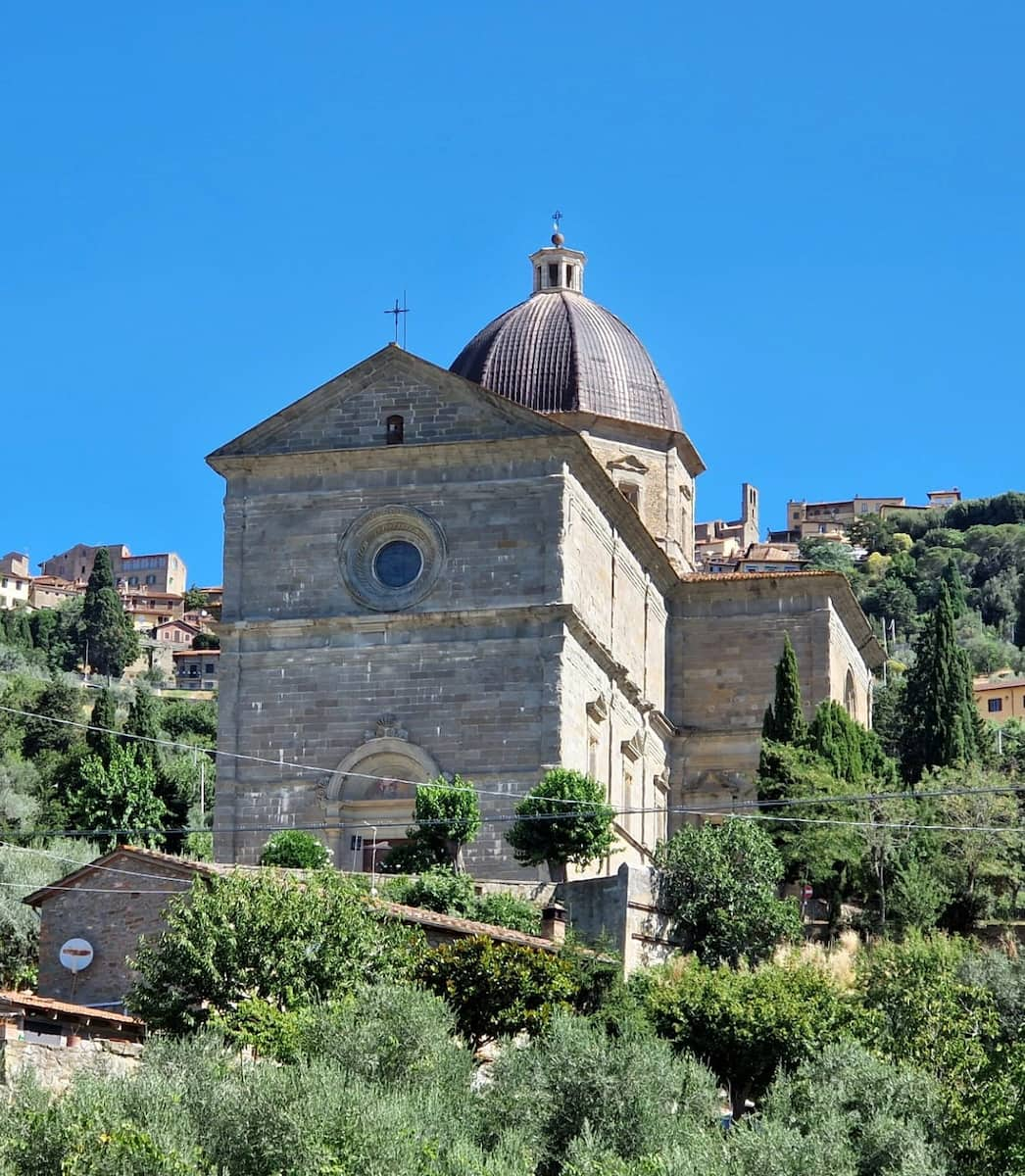
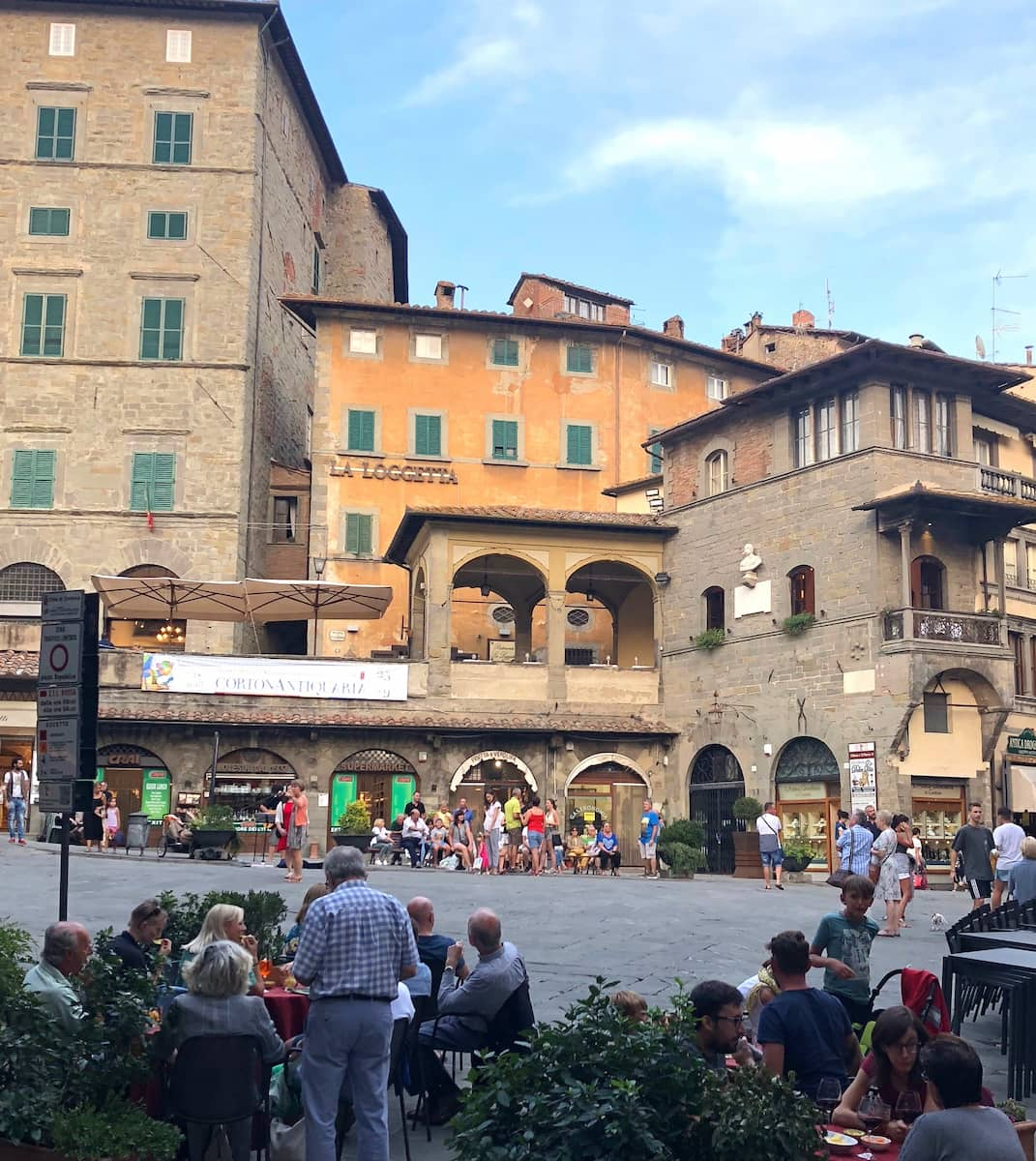
Etruscan heritage. I was fascinated by Cortona’s ancient origins at the Museo dell’Accademia Etrusca, which houses an impressive collection of Etruscan artifacts including the famous bronze chandelier (Lampadario Etrusco). The museum provides fascinating insights into this sophisticated pre-Roman civilization that once dominated the region.
Panoramic views. The walk up to the Fortezza del Girifalco rewards with breathtaking panoramas across Lake Trasimeno and the surrounding countryside. I timed my visit for late afternoon when the setting sun bathed the landscape in golden light – perfect for photography.
Travel logistics. Cortona is easily reached by regional train from Arezzo (30 minutes, €3.60 one-way) or by car (40 minutes). I recommend arriving early to find parking, as spaces fill quickly, especially during summer months.
Local tip. Many visitors rush through Cortona in a few hours, but I discovered its true charm in the early evening after day-trippers had left. The sunset views from the town walls are spectacular, and restaurants offer a more authentic experience without the midday crowds.
⭐ Best Activities
- Cortona Cooking Class – Take a day trip from Arezzo to nearby Cortona for a traditional Tuscan cooking class in this charming hilltop town. Learn to prepare regional specialties while enjoying spectacular views of the Val di Chiana countryside.
2. La Verna Santuario Francescano
Spiritual haven. The Franciscan Sanctuary of La Verna, perched at 1,128 meters on Mount Penna, offers a profound spiritual experience even for non-religious visitors. I was moved by the knowledge that this is where St. Francis received the stigmata in 1224, making it one of the most significant Franciscan sites in Italy.
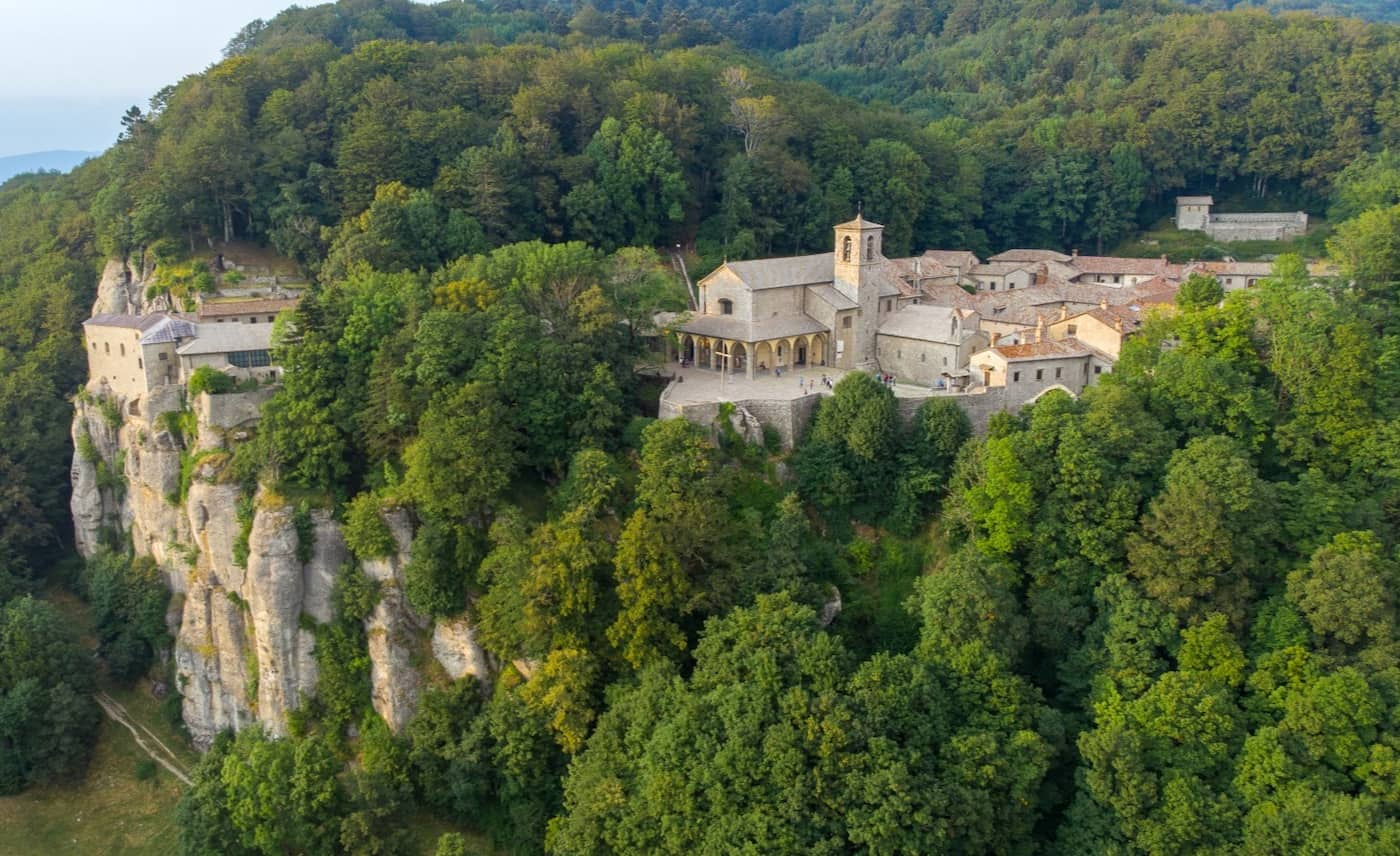
Natural beauty. The sanctuary is located within the Casentino Forests National Park, surrounded by ancient beech and fir trees. The drive alone is worth the trip, winding through spectacular mountain scenery that changes dramatically with the seasons. I visited in autumn when the forest was ablaze with fall colors.
Architectural treasures. The sanctuary complex includes numerous chapels and places for prayer and contemplation. I was particularly impressed by the Basilica Maggiore with its della Robbia terracotta works and the small Chapel of the Stigmata built on the exact spot where St. Francis received the stigmata.
Visitor information. La Verna is located about 50 kilometers from Arezzo (approximately 1 hour by car). There is no direct public transport, so driving or joining an organized tour is necessary. The sanctuary is open daily and entrance is free, though donations are appreciated.
3. Eremo Le Celle
Franciscan simplicity. Just outside Cortona lies the tranquil Eremo Le Celle, the first monastery built by St. Francis of Assisi in 1211 and where he lived after receiving the stigmata. I was struck by the profound sense of peace that permeates this place, built in harmony with the natural landscape across a narrow valley.
Architectural harmony. The complex is built “a gradoni” (in tiers) on both sides of the valley, with monks’ cells and communal areas blending seamlessly into the rocky landscape. The original cell where St. Francis lived has been preserved, offering a touching glimpse into the saint’s austere lifestyle.
Natural setting. The sound of running water from the stream below creates a constant gentle soundtrack to this spiritual retreat. I spent a contemplative hour sitting in the small garden, watching sunlight filter through the trees and listening to this natural music.
Artistic elements. Inside the refectory, I discovered a beautiful wooden Deposition by Giovanni da Rovezzano (1632), while the Chapel of San Felice da Cantalice houses a painting by Simone Pignoni showing the Madonna offering the Child to San Felice.
Visitor details. Eremo Le Celle is located about 3 kilometers from Cortona (40 kilometers from Arezzo). Entry is free, though donations are welcomed. The monastery is still active, so visitors should dress modestly and maintain a respectful quiet during their visit.
4. Valdichiana Village (Shopping)
Designer bargains. Valdichiana Village outlet shopping center offers a welcome change of pace from historical sightseeing. I spent a satisfying afternoon browsing international and Italian designer brands at discounts of 30-70% off retail prices. The center’s architecture cleverly mimics a traditional Tuscan village, making the shopping experience more pleasant than typical malls.
Italian fashion. What I appreciated most was the range of authentic Italian brands like Furla, Patrizia Pepe, and Cavalli at significant discounts. Even my fashion-indifferent husband found excellent deals on quality Italian leather shoes and a cashmere sweater that would have cost twice as much at home.
Dining options. After shopping, we enjoyed a surprisingly good lunch at one of several restaurants in the center. While not the authentic trattoria experience of historic towns, the quality was decent and prices reasonable compared to tourist areas.
Practical information. Valdichiana Village is located about 30 kilometers from Arezzo near the A1 motorway exit for Valdichiana. It’s easily accessible by car (30-minute drive) with ample free parking. The outlet is open daily from 10am to 8pm (hours may vary seasonally).
5. Casentino Forests
Ancient woodlands. The Casentino Forests National Park encompasses one of Italy’s oldest and most pristine forested areas. I spent a magical day hiking through ancient beech and fir trees, some over 500 years old, following well-marked trails that range from easy walks to challenging hikes.
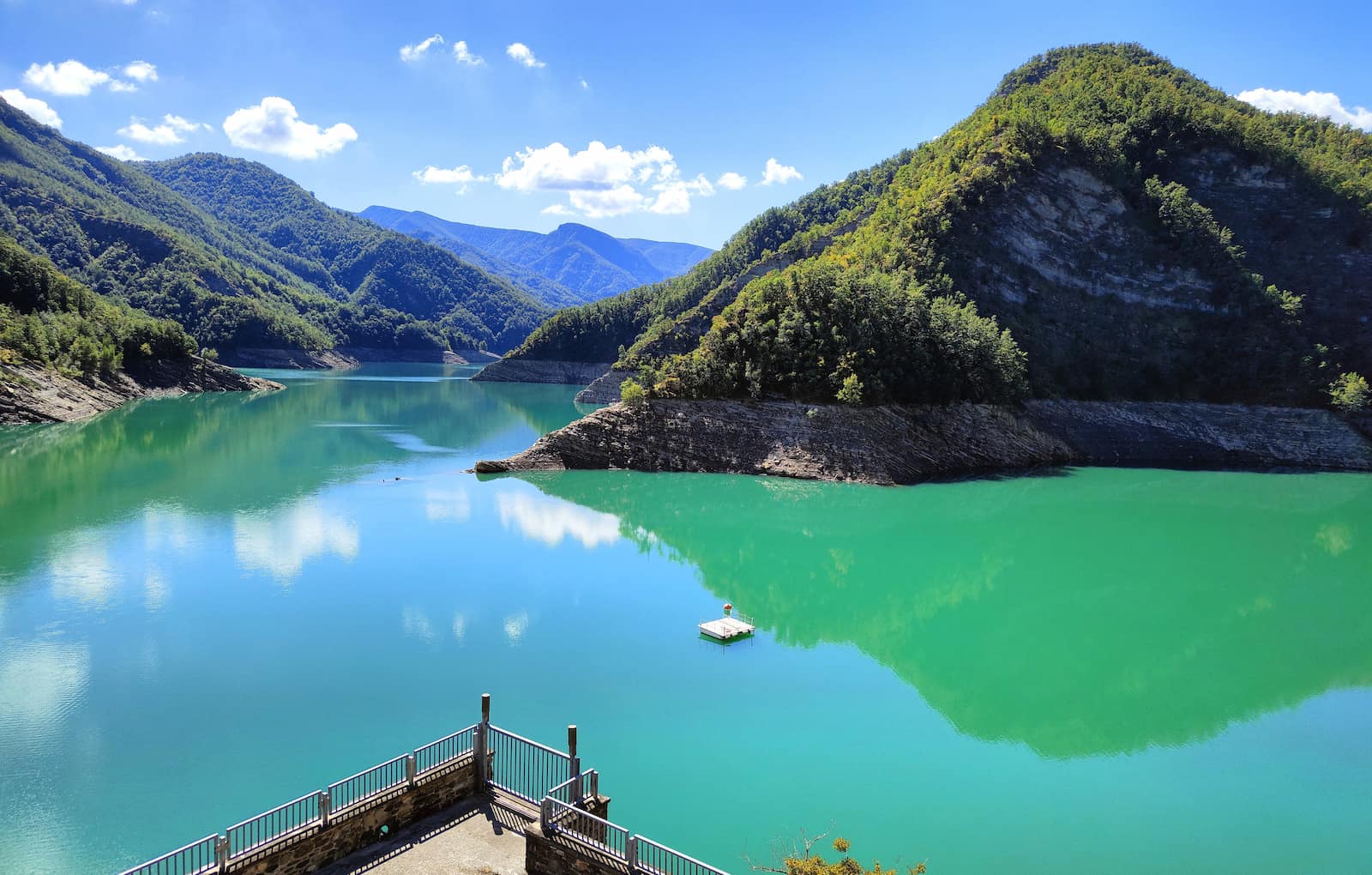
Sacred mountains. Beyond natural beauty, the area is dotted with spiritual sites including La Verna Sanctuary and the Camaldoli Hermitage. These sacred places have been integrated into the forest landscape for centuries, creating a unique blend of natural and spiritual heritage.
Wildlife encounters. Moving quietly along the trails, I was rewarded with glimpses of deer, wild boar, and numerous bird species. The park is also home to wolves, though they remain elusive. Interpretive centers throughout the park provide fascinating information about the ecosystem and conservation efforts.
Seasonal highlights. Each season offers different attractions – spring wildflowers, summer coolness, spectacular autumn colors, and occasionally snow-covered winter landscapes. I visited in early October when the fall colors were beginning to transform the forest into a painter’s palette of golds and reds.
Visitor information. The Casentino Forests are about 40-50 kilometers from Arezzo, accessible by car. The park visitor center in Pratovecchio provides maps and trail information. I recommend sturdy walking shoes, water, and weather-appropriate clothing as mountain weather can change quickly.
- Best easy trail: Sentiero Natura at Camaldoli (5km loop)
- Most spectacular views: Monte Penna circuit near La Verna
- Family-friendly option: Botanical Garden trail at Badia Prataglia
⭐ Best Activities
- Casentino Horseback Riding Tour with Verna Sanctuary View – Experience the natural beauty of the Casentino region near Arezzo on horseback, with views of the historic La Verna Sanctuary. This outdoor adventure takes you through ancient forests and offers spectacular panoramic vistas of the countryside.
❓ FAQ
What makes Arezzo a hidden gem in Tuscany?
Arezzo offers all the charm of Tuscany’s hidden gem without the hustle and bustle of more famous towns like Siena. The city’s well-preserved medieval streets, Renaissance architecture, and authentic local atmosphere make it one of the best places to visit in eastern Tuscany.
When is the monthly antique fair in Arezzo?
Arezzo’s famous antiques market takes place on the first weekend of each month in and around Piazza Grande. This renowned Arezzo Antiques Fair attracts up to 30,000 visitors with 500 vendors selling everything from furniture and paintings to vintage clothing and jewelry.
Where to stay in Arezzo for a weekend visit?
For the best experience during your visit to Arezzo, choose accommodations near the city center to easily explore the main attractions on foot. Many charming hotels and B&Bs are located within the historic walls, offering convenient access to cafes and restaurants while providing an authentic stay in this Tuscan town.
When is the best time to visit Arezzo?
Spring (April-June) and autumn (September-October) offer ideal weather for your trip to Arezzo with comfortable temperatures and fewer tourists than summer months. These seasons also coincide with special events like the Saracen Joust held twice a year (June and September) and the beautiful spring blooms or autumn foliage that enhance the view of Arezzo and surrounding landscapes.
What day trips can I take from Arezzo?
From Arezzo, you can easily take a day trip to Cortona (30 minutes by train), the Franciscan sanctuary of La Verna, or the tranquil Eremo Le Celle monastery. Other excellent places to visit include the Casentino Forests National Park, Valdichiana Village for shopping, or even Siena, making Arezzo an ideal base for exploring eastern Tuscany.
Is Arezzo worth visiting compared to other towns in Tuscany?
Arezzo is absolutely worth visiting as it offers authentic Tuscan experiences without the overwhelming tourist crowds found in Florence or Siena. The city’s rich history, stunning architecture, vibrant cultural scene, and strategic location in the heart of Tuscany make it both a perfect destination for art lovers and an excellent base for planning a trip to Italy’s most beautiful region.
